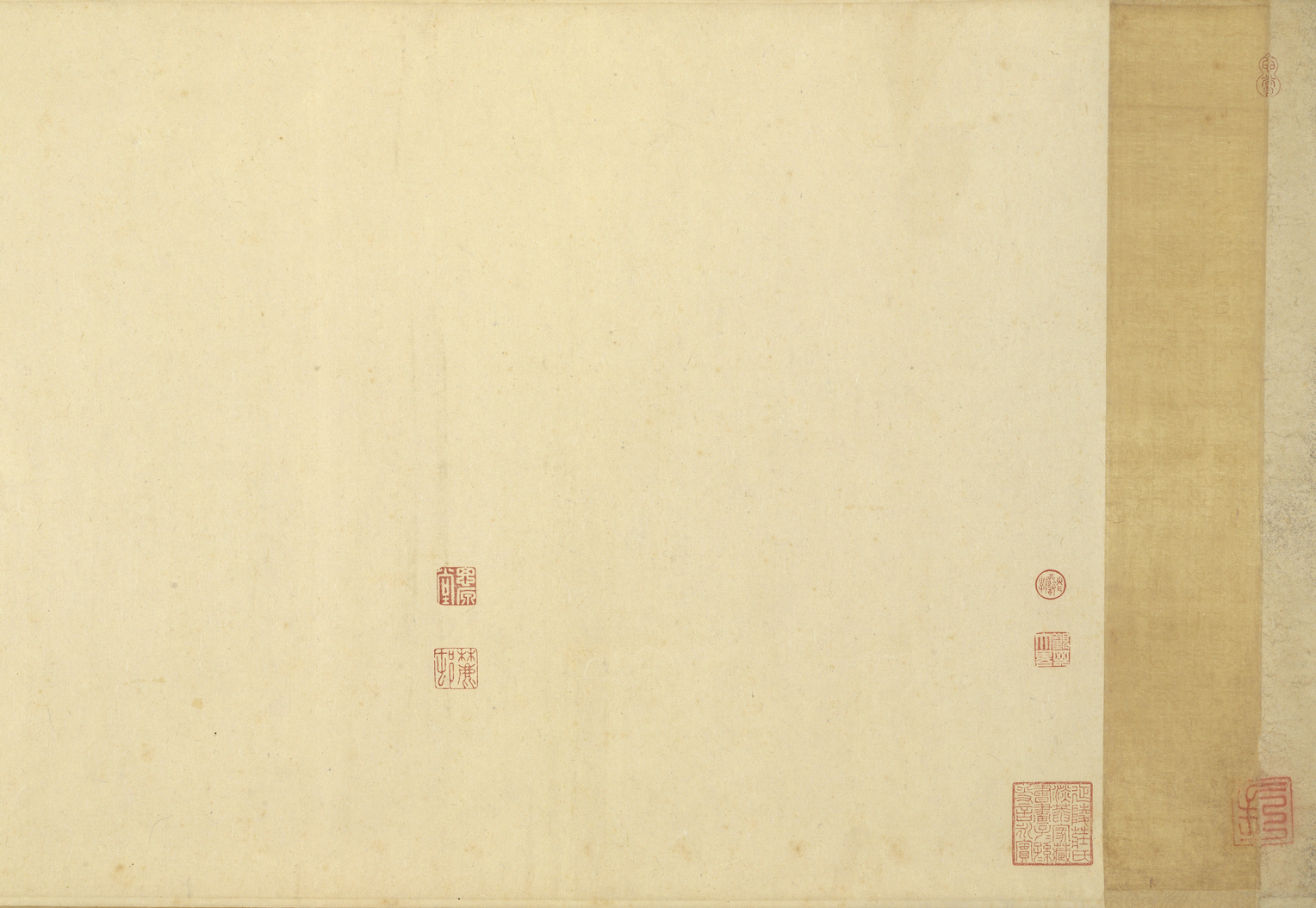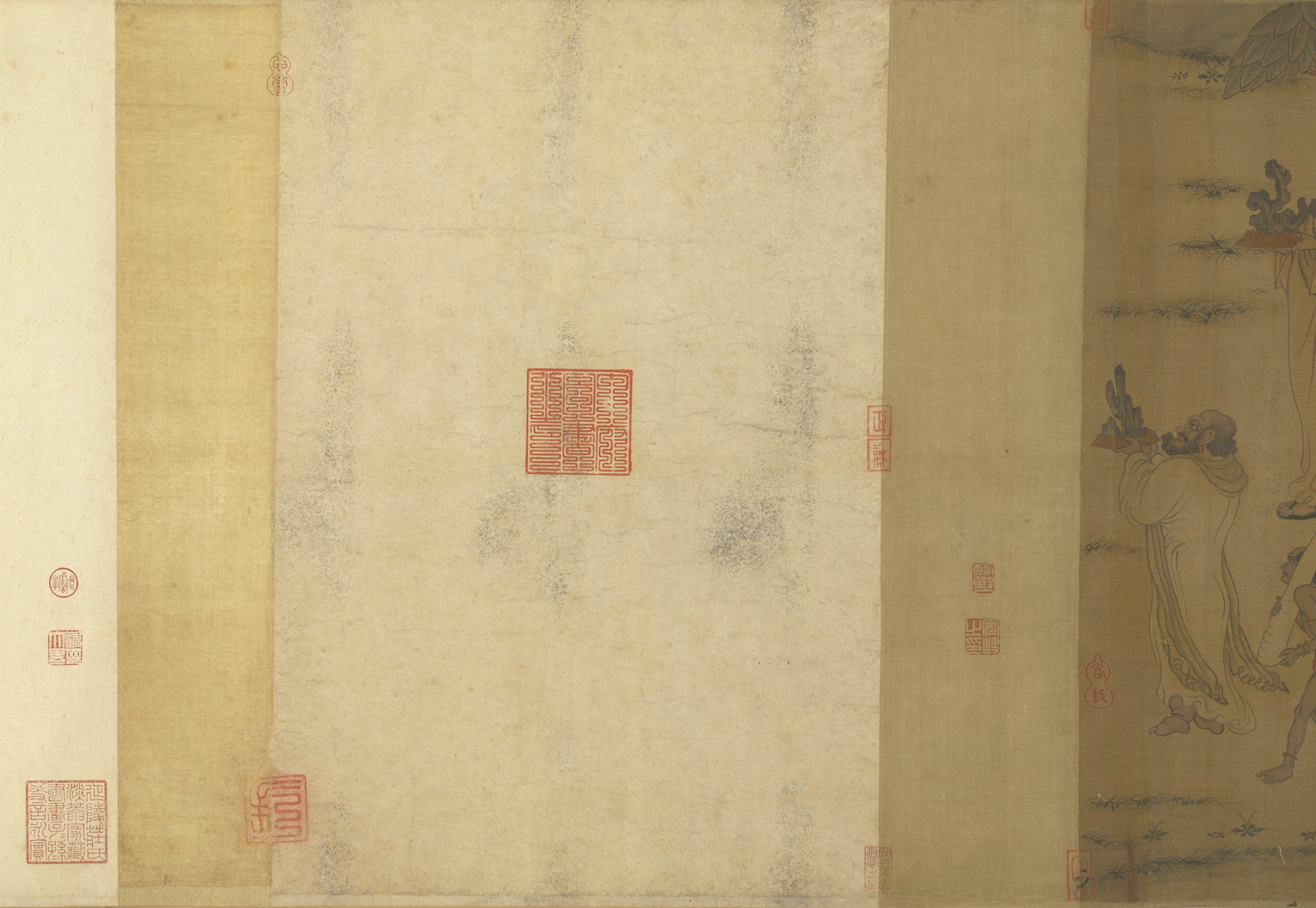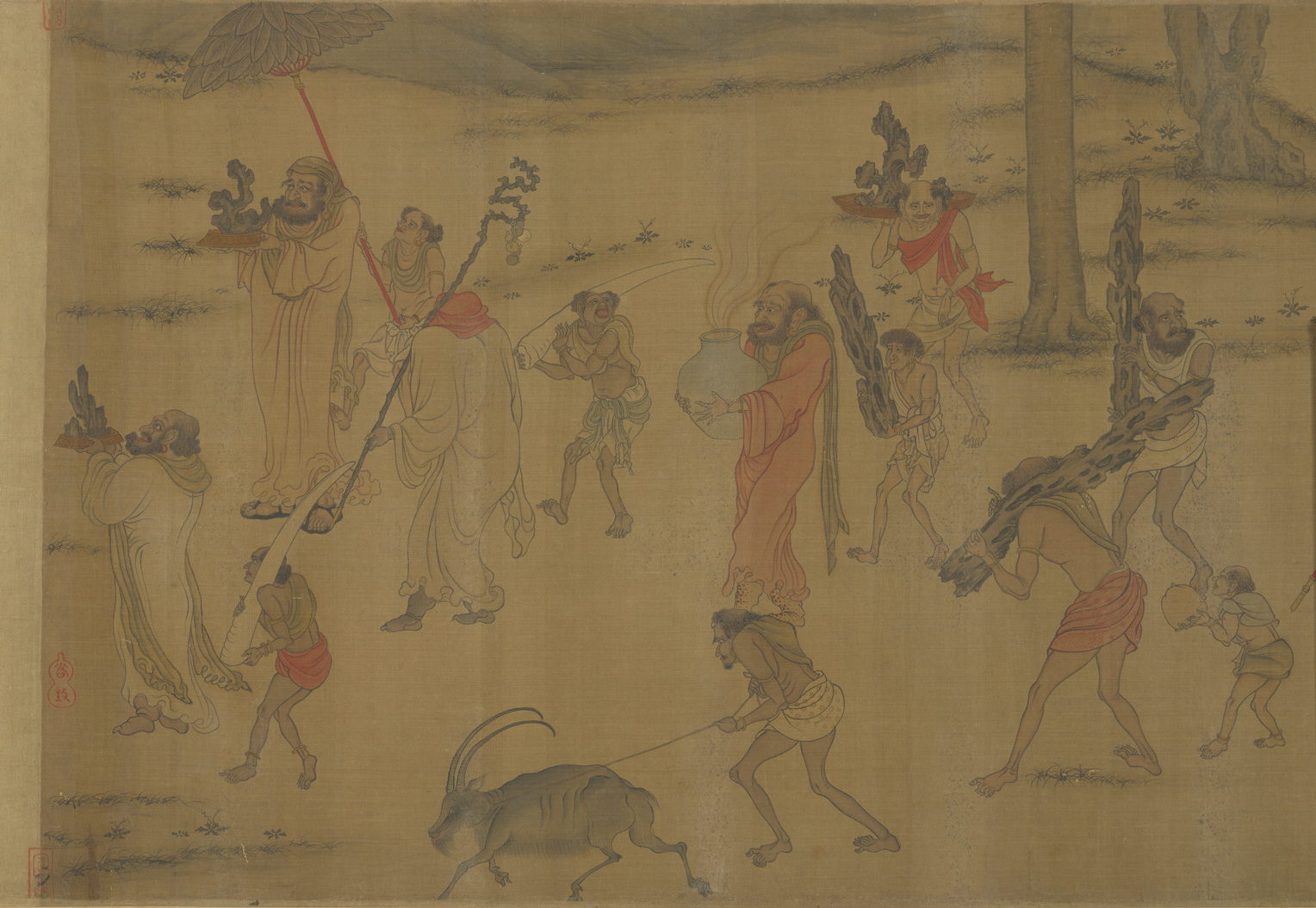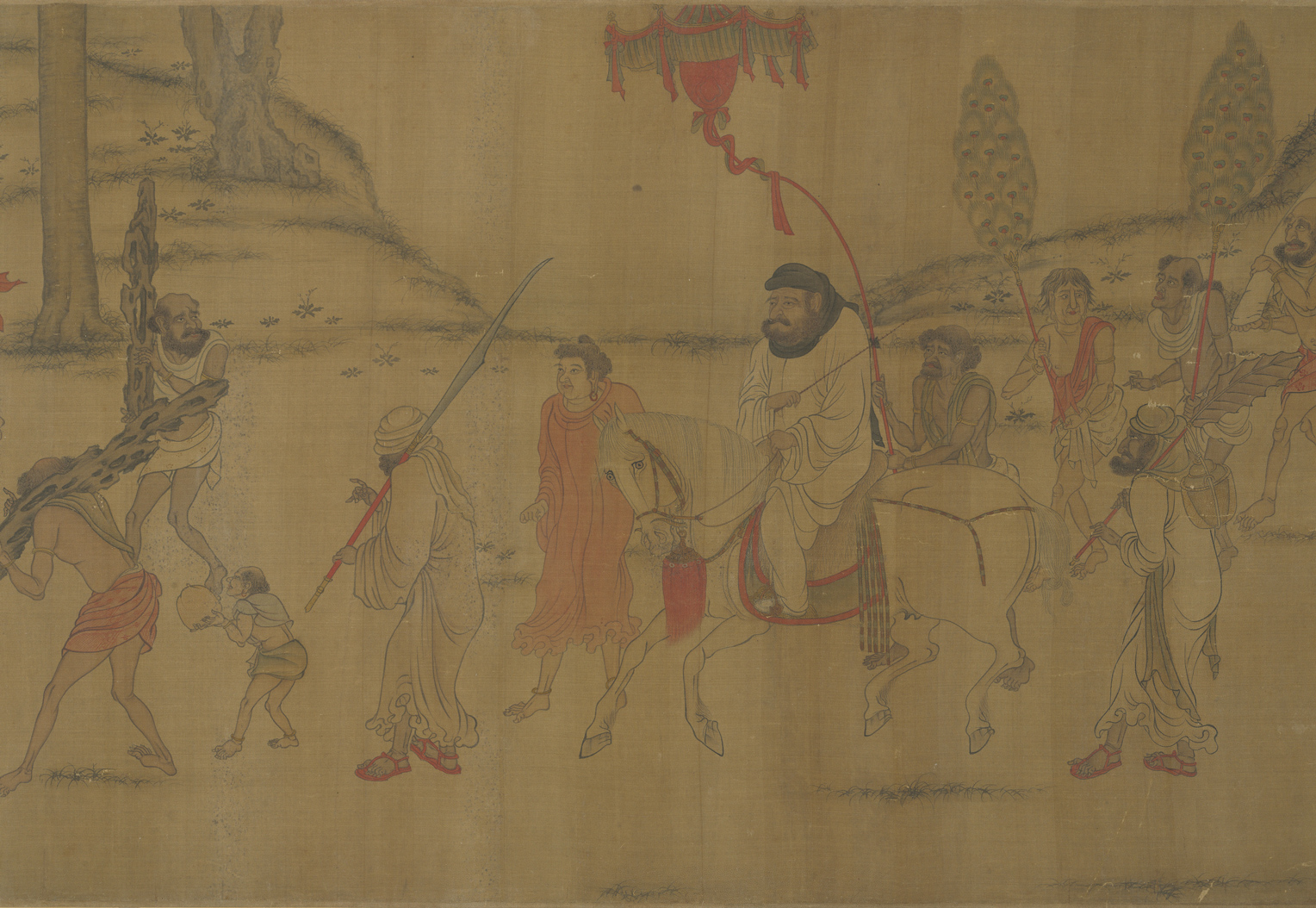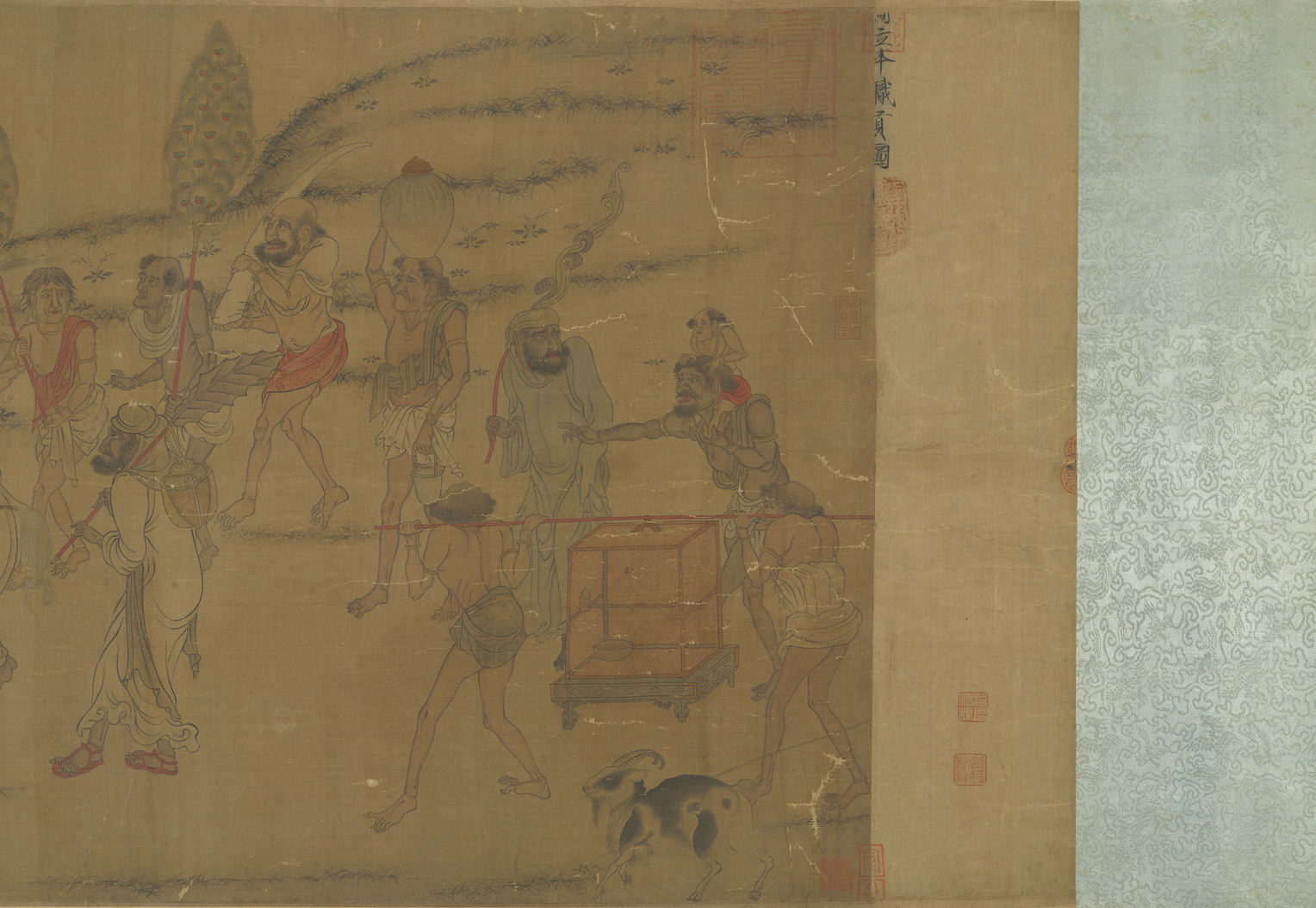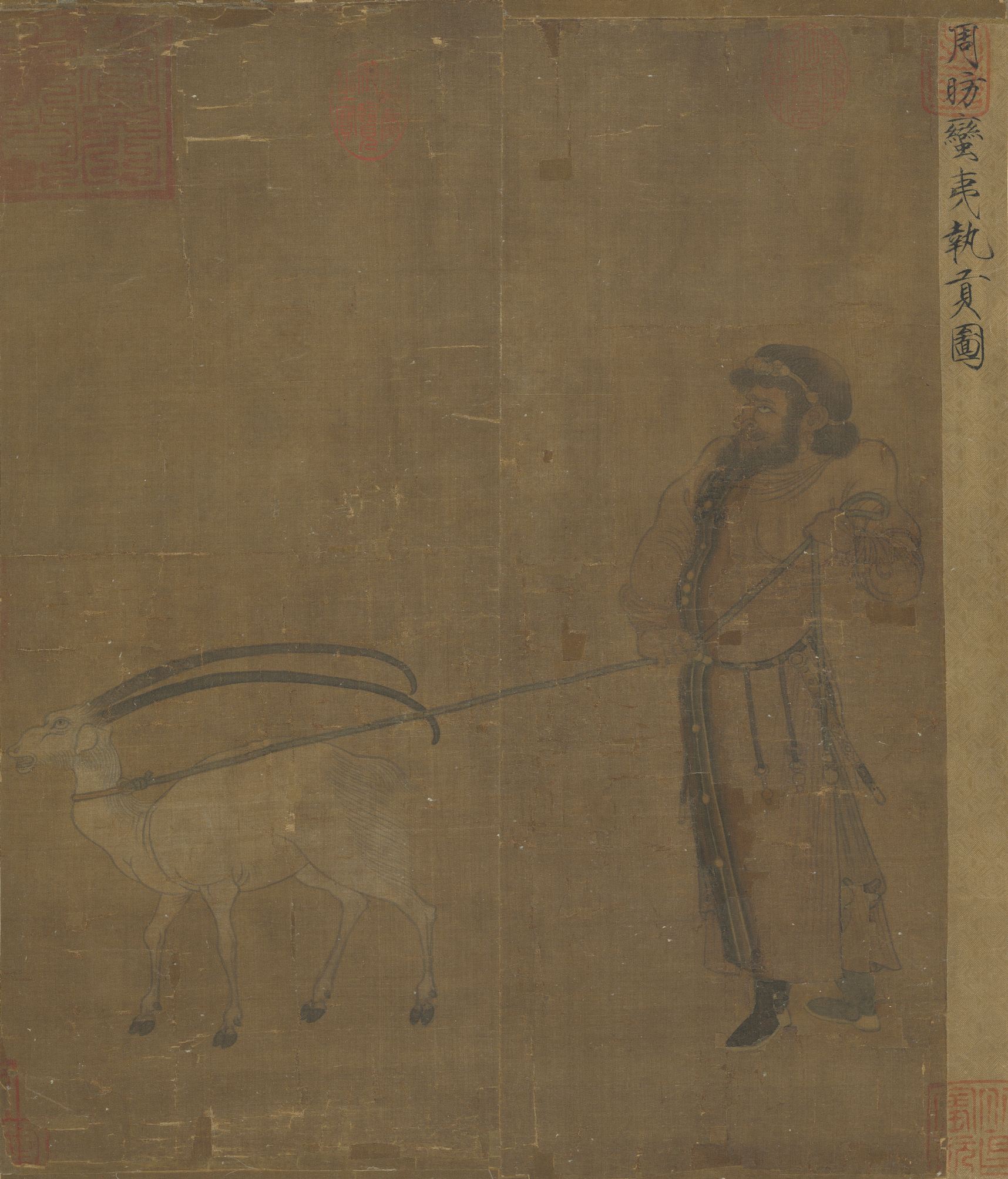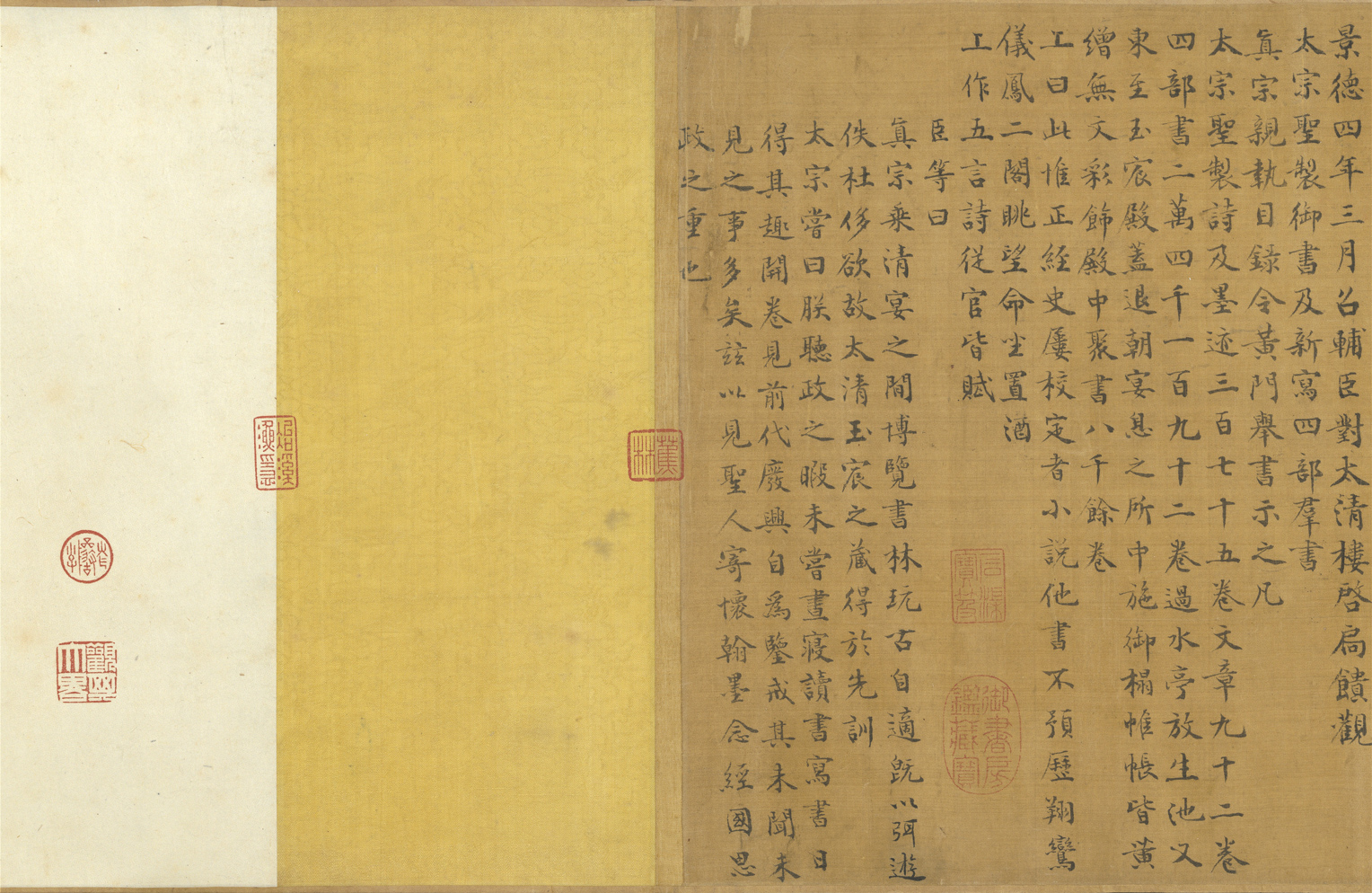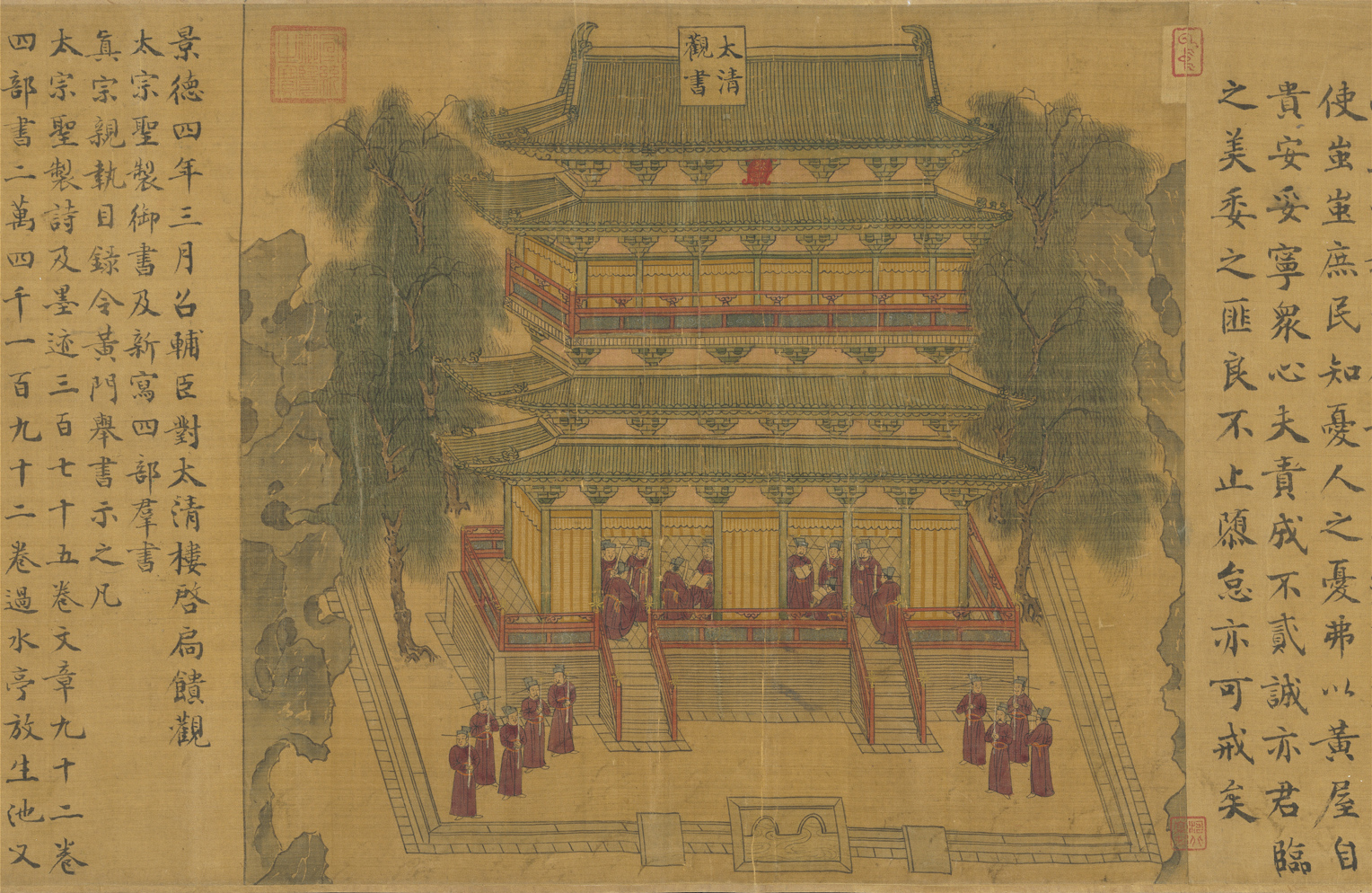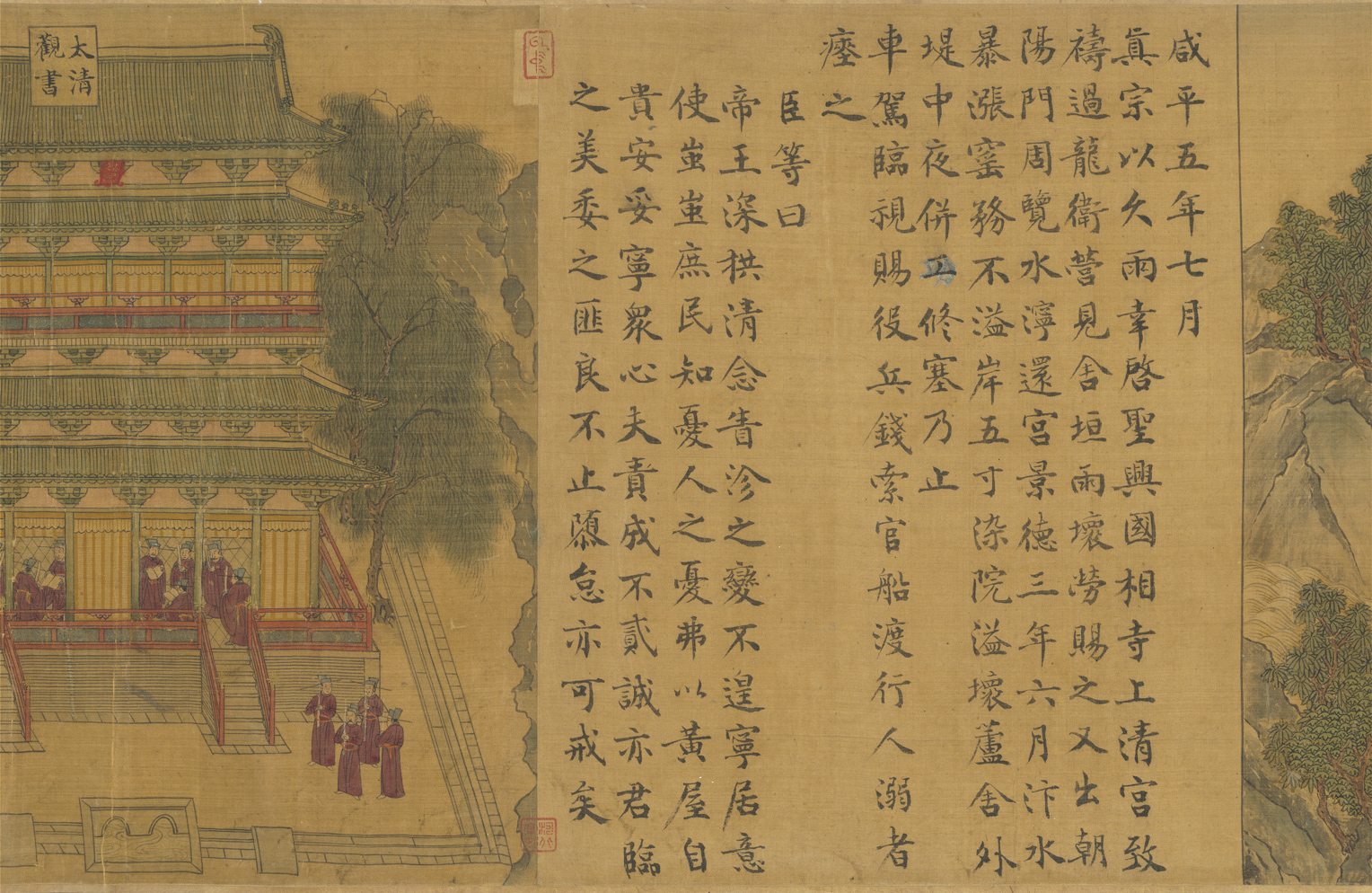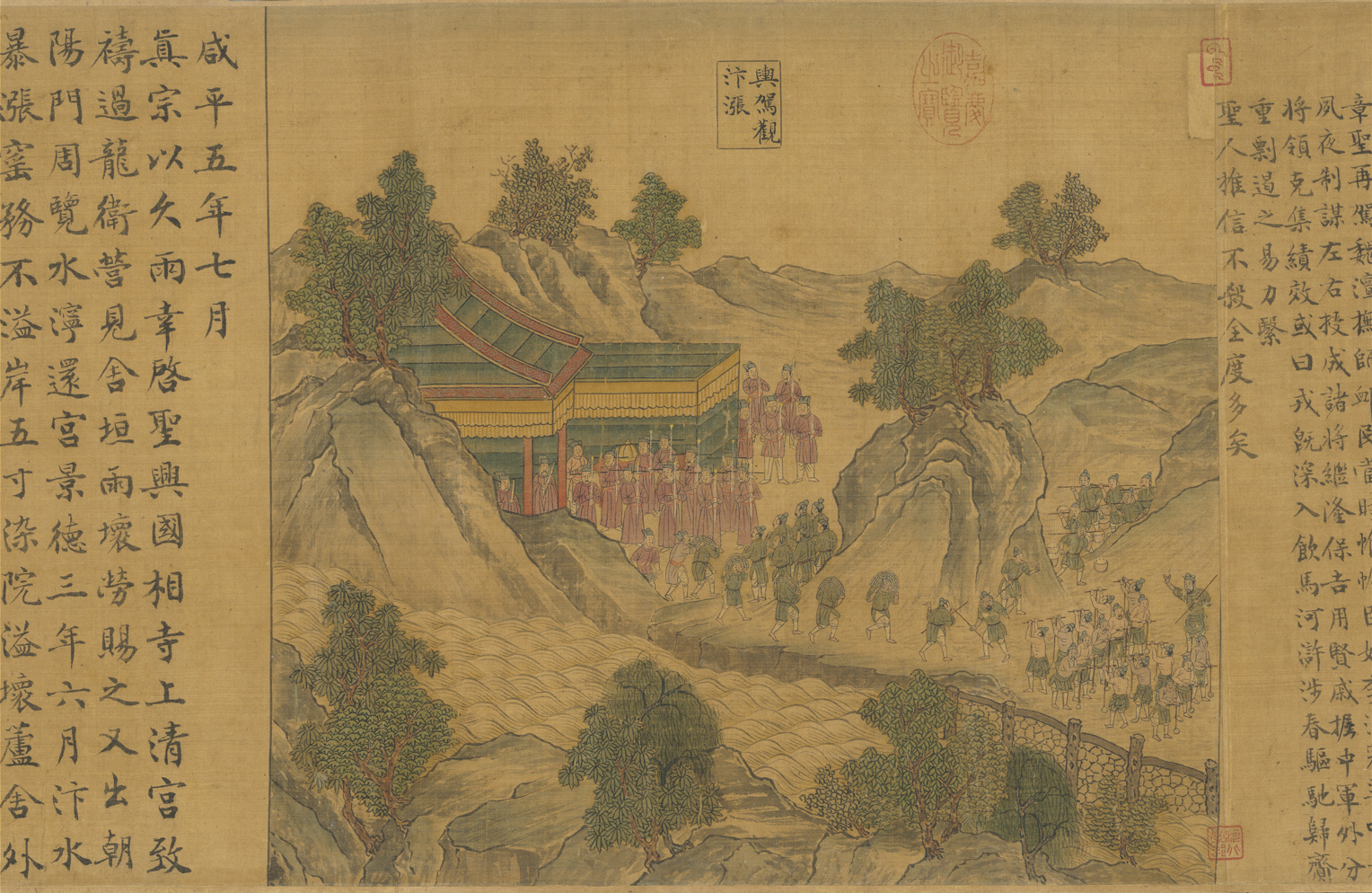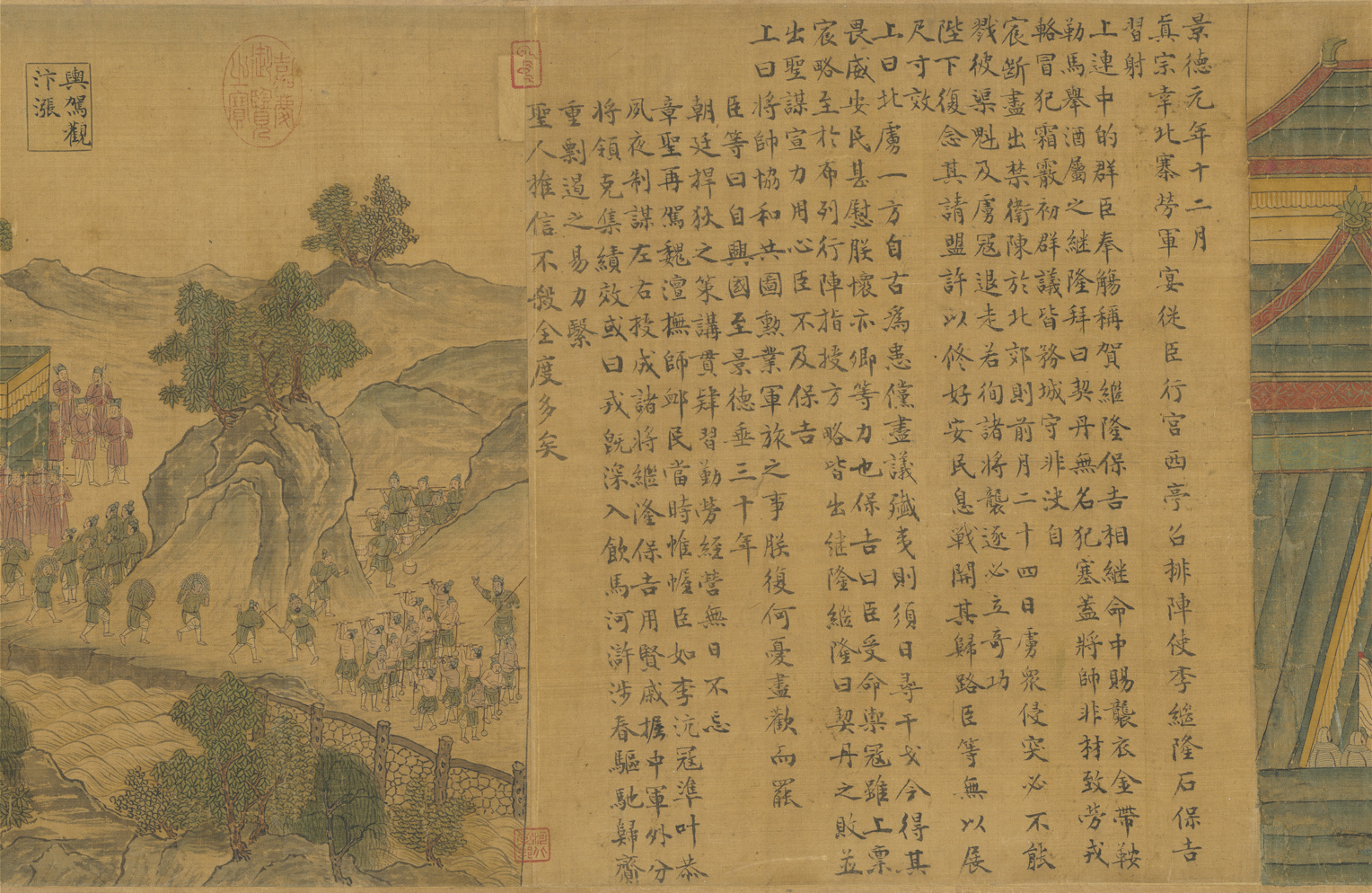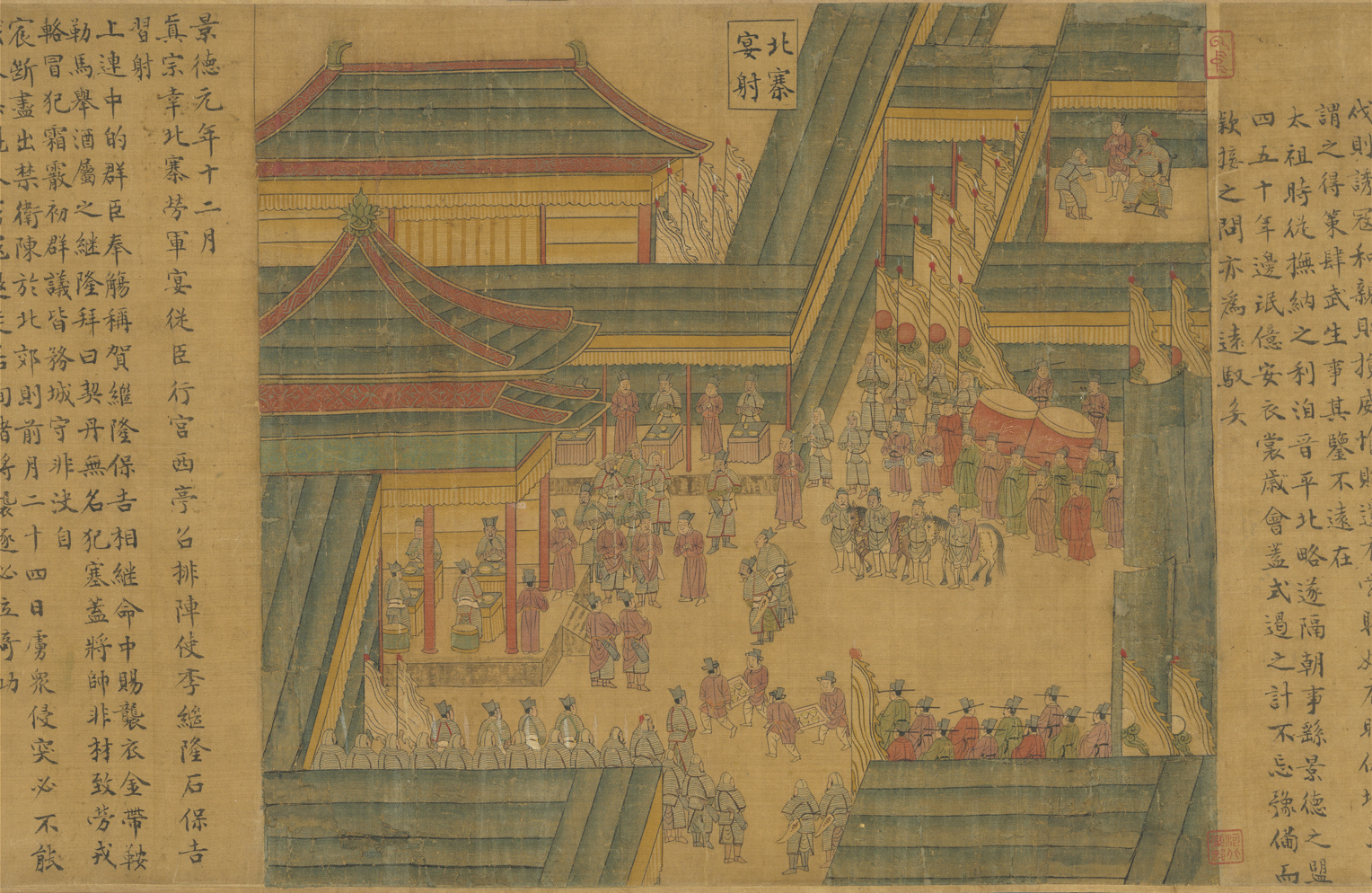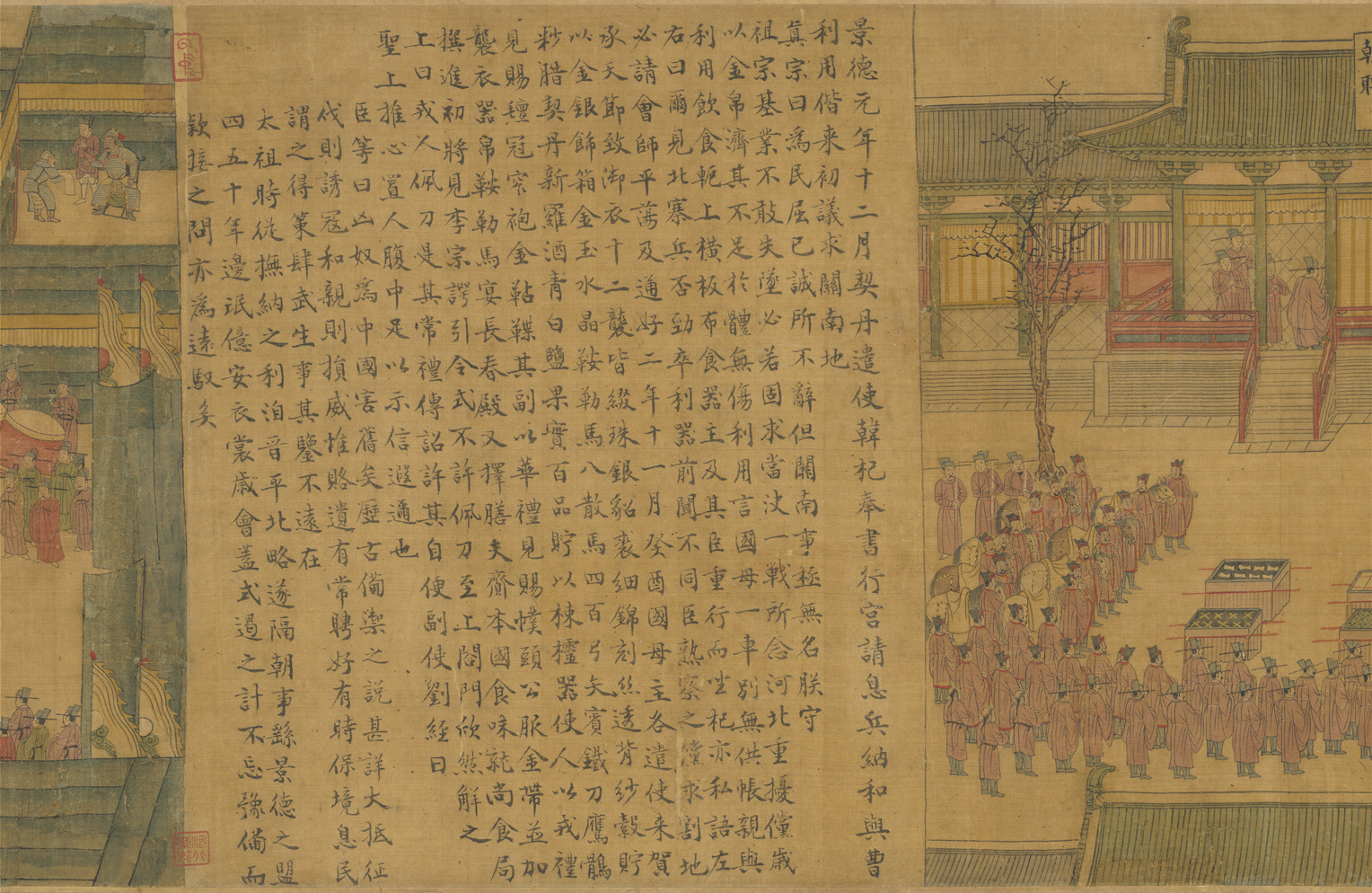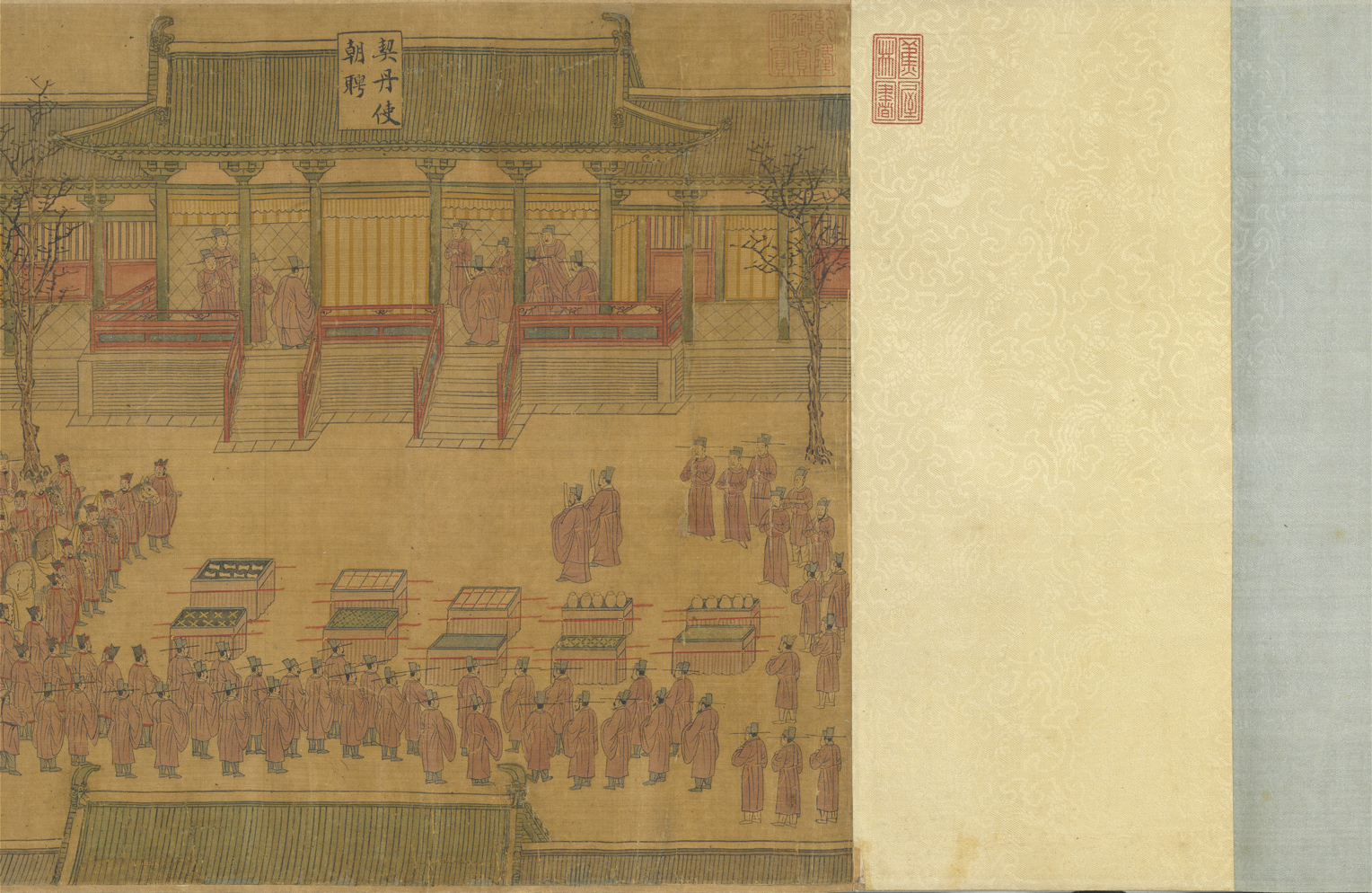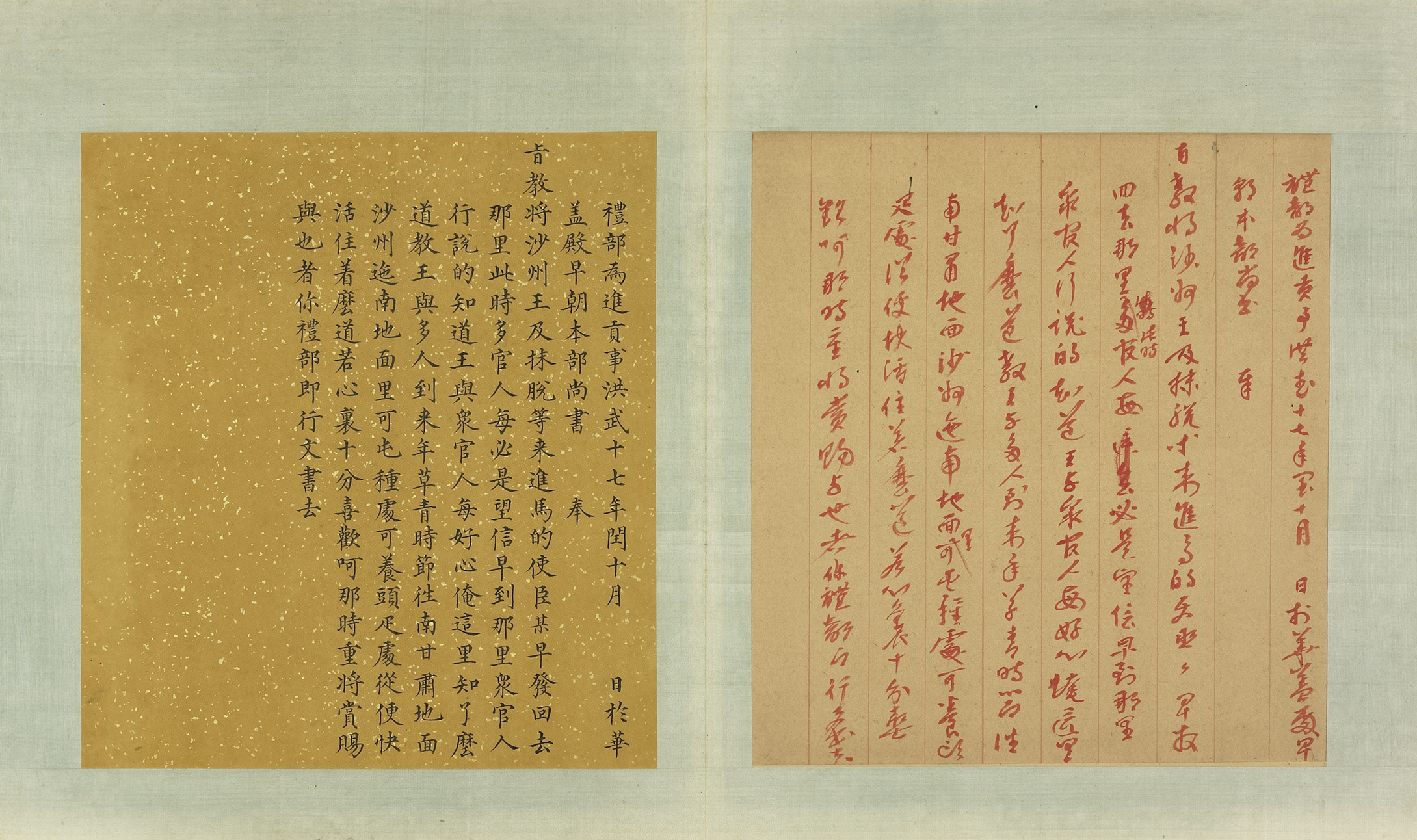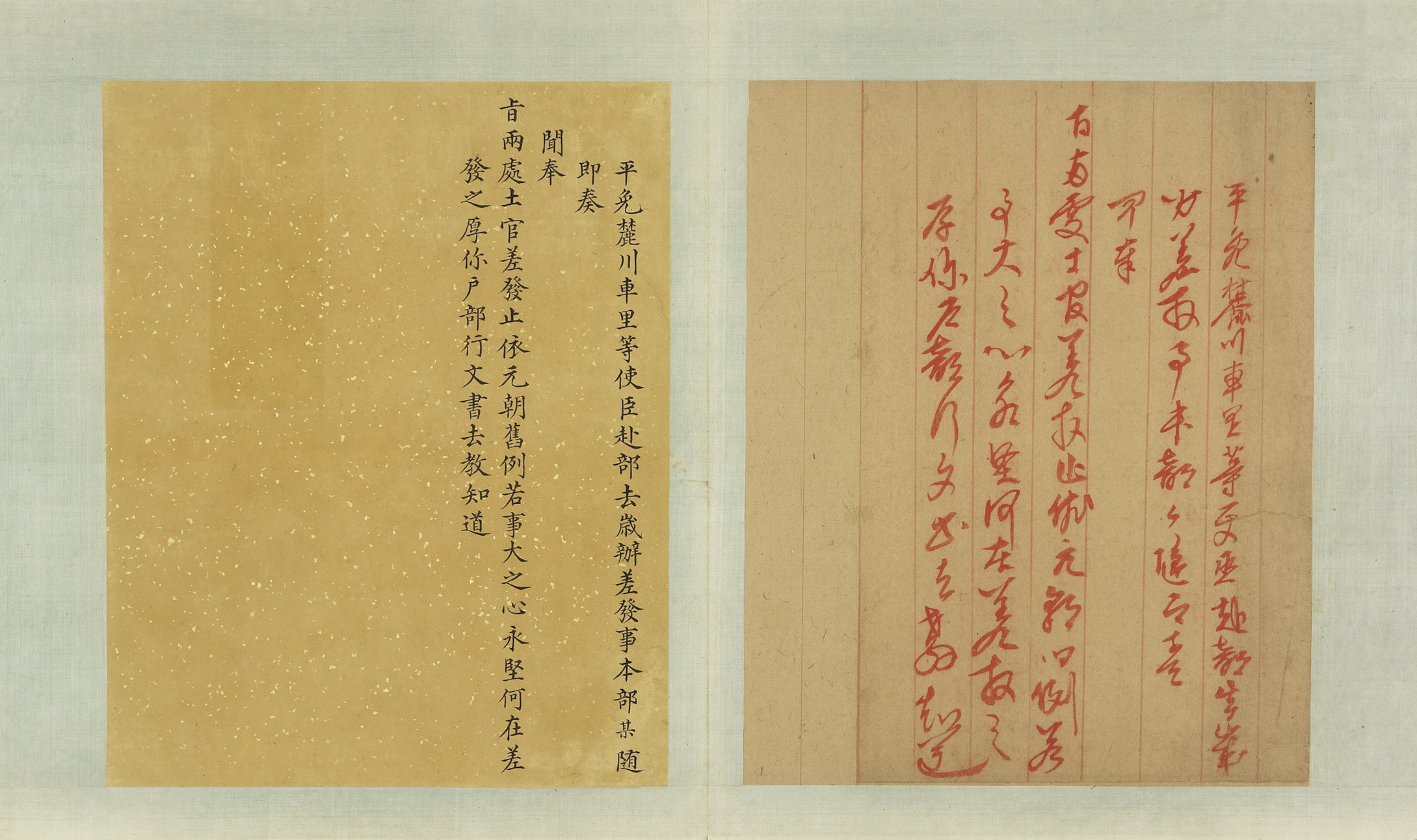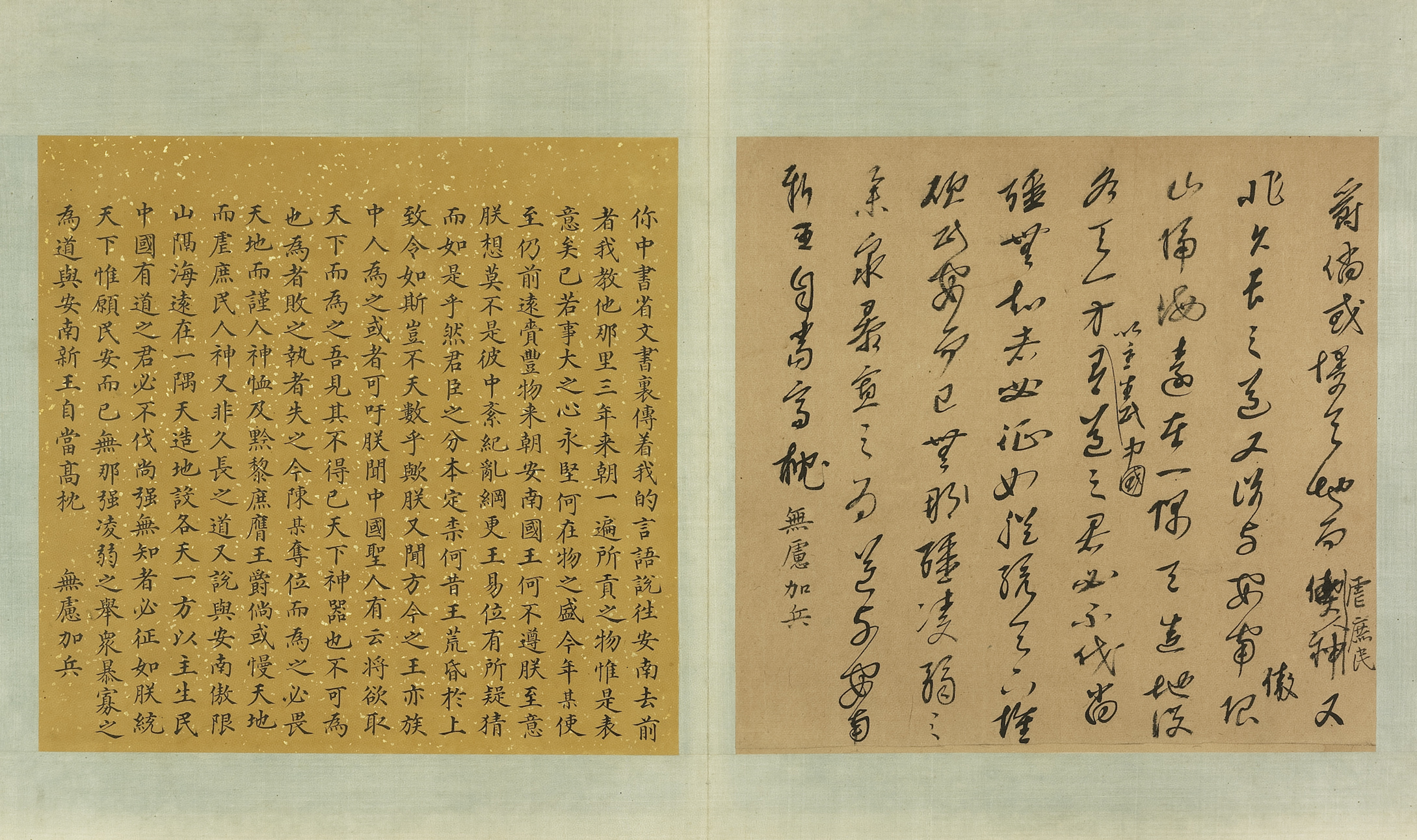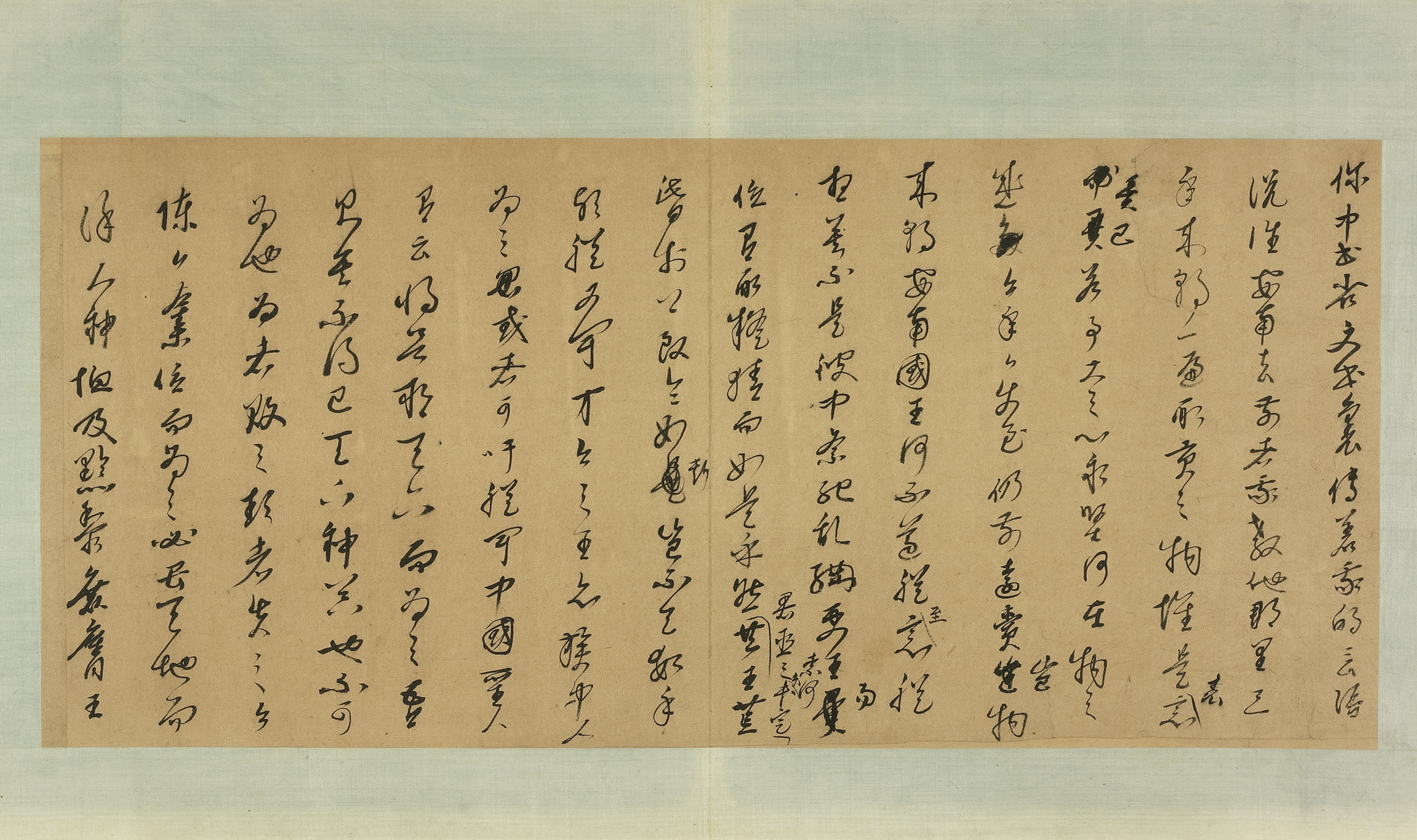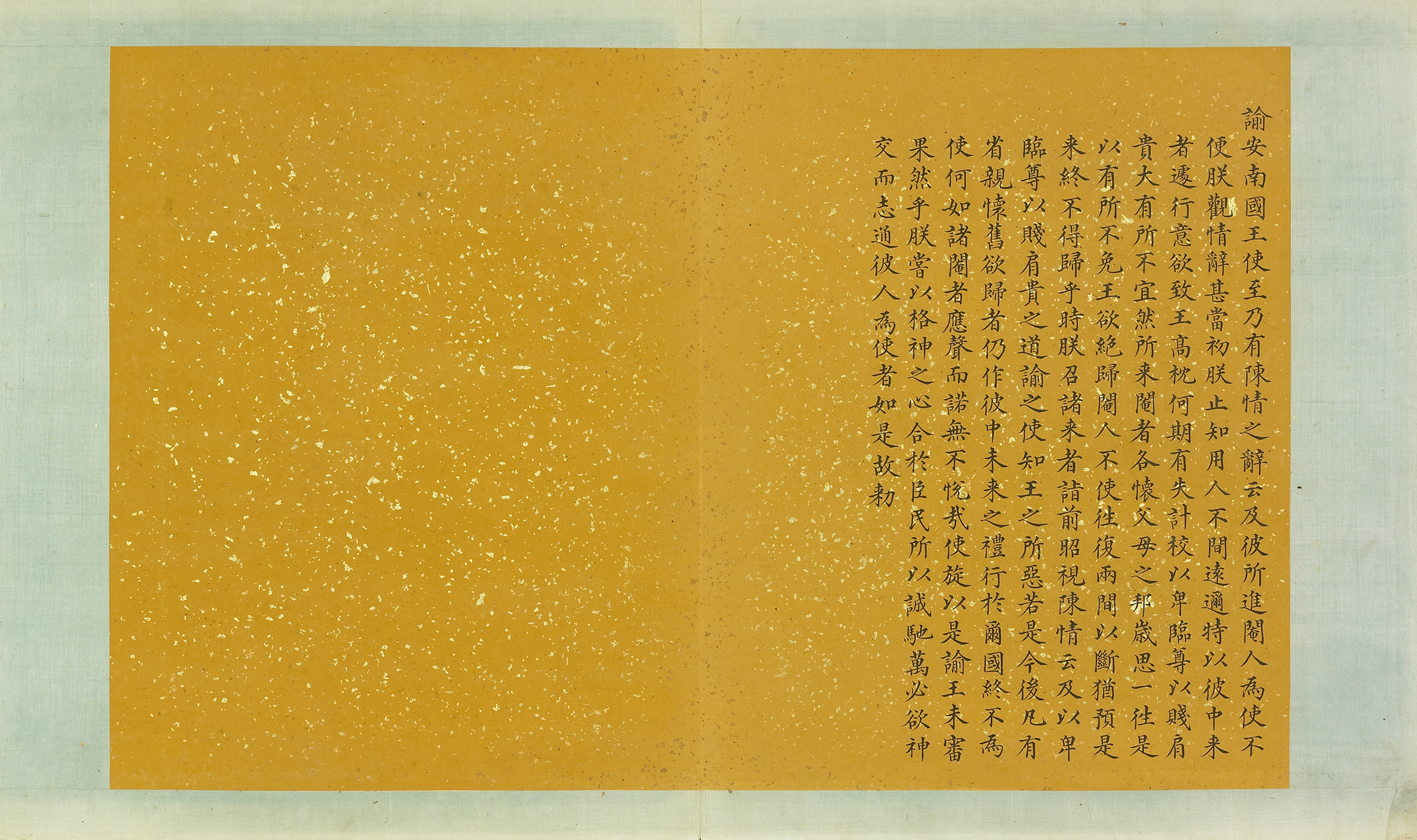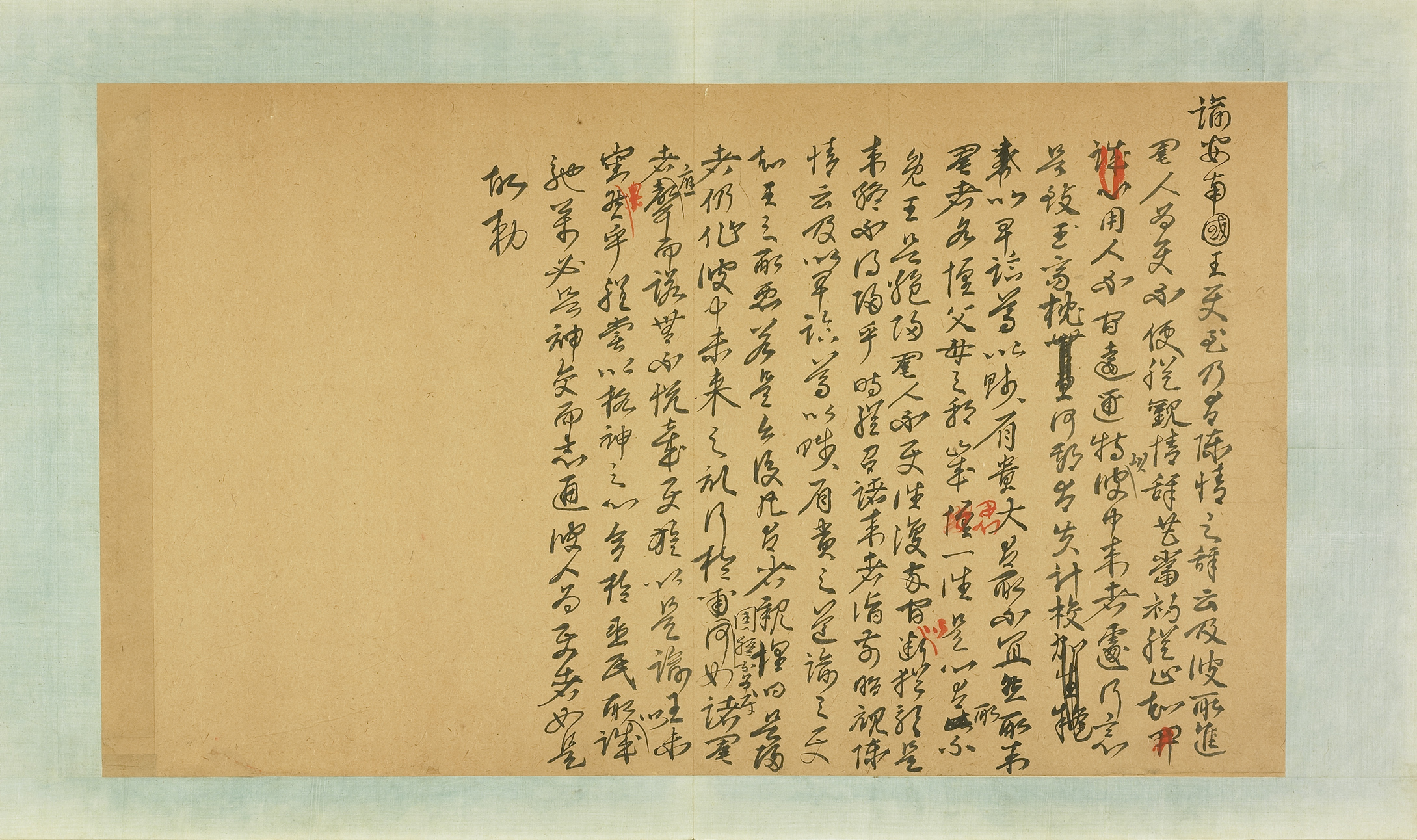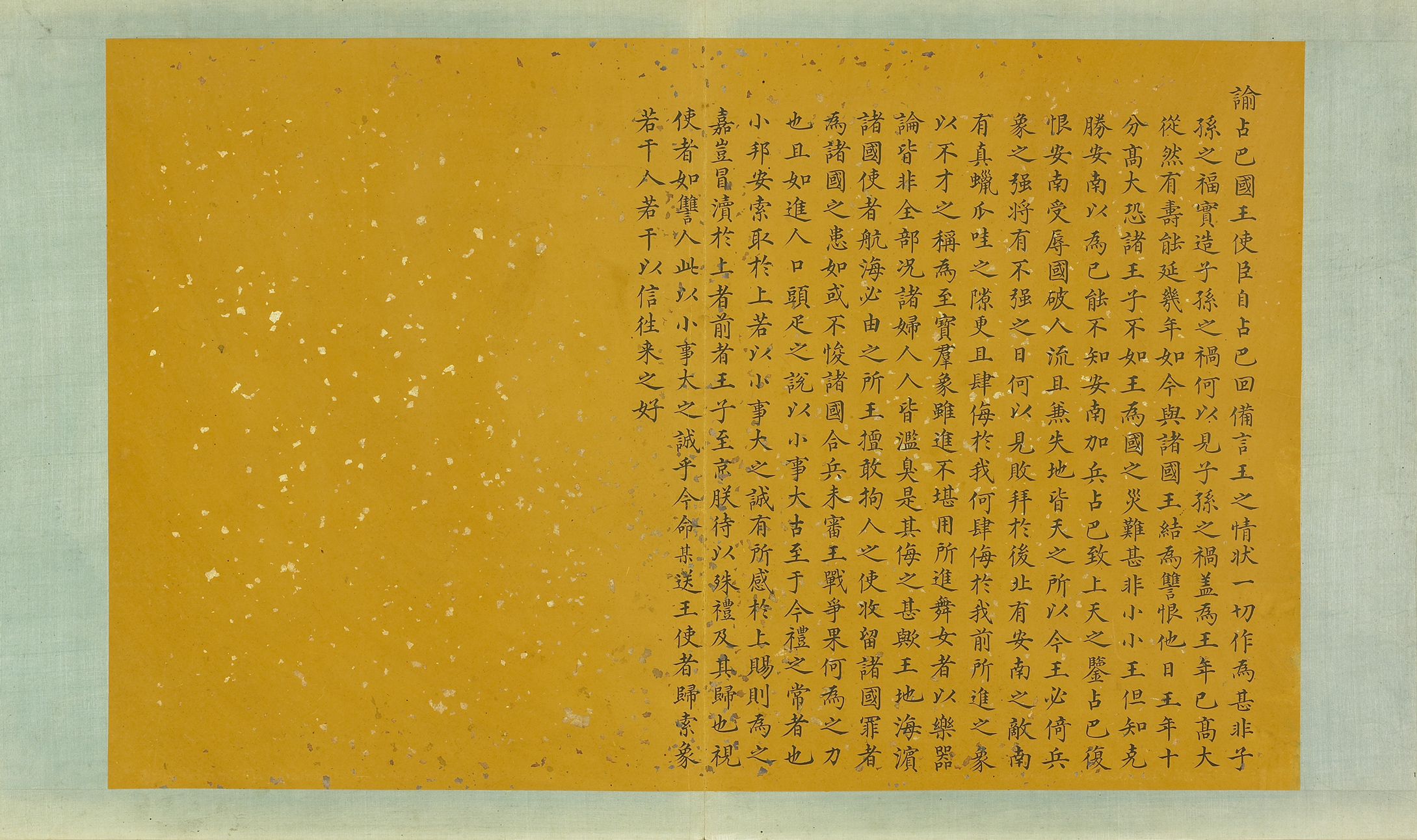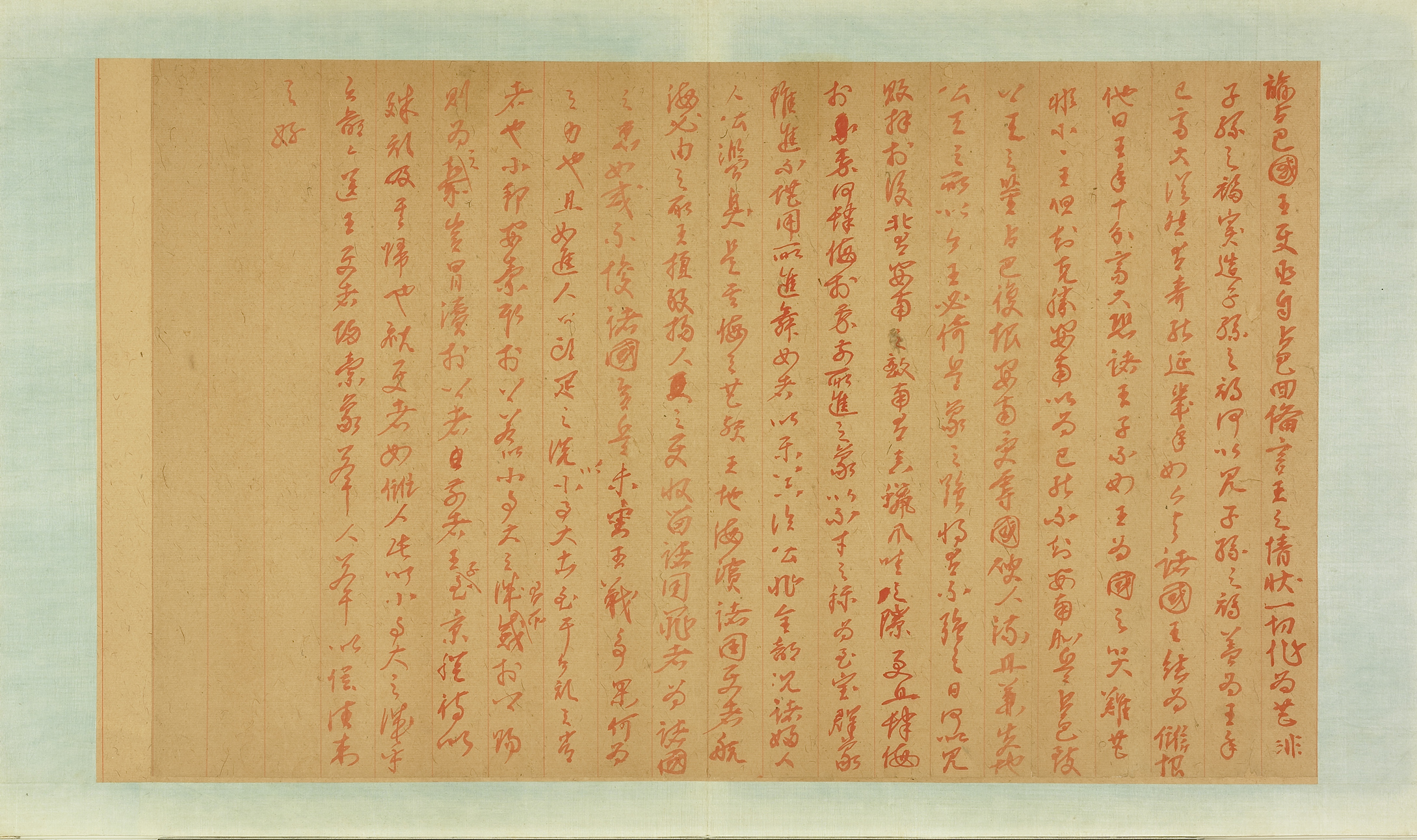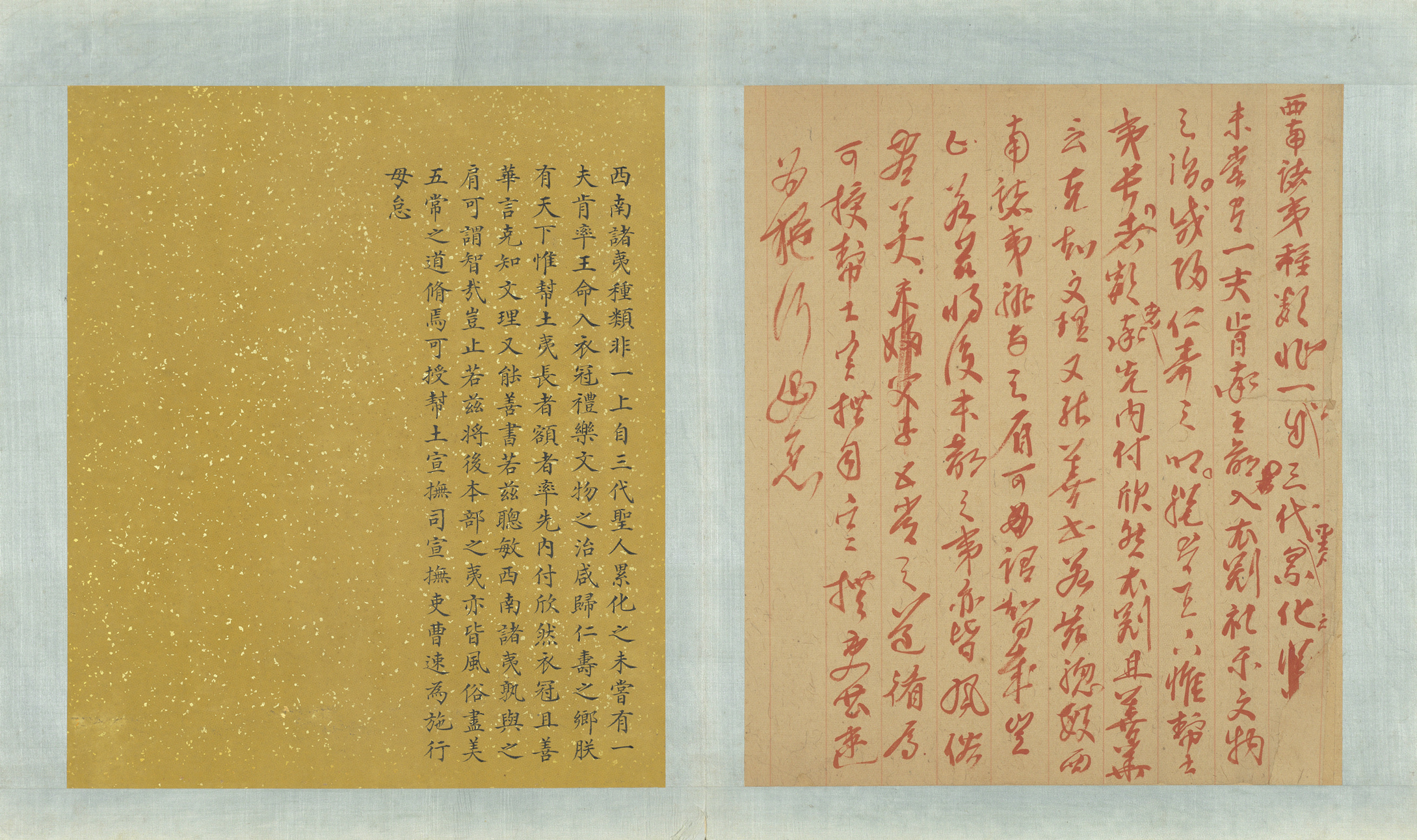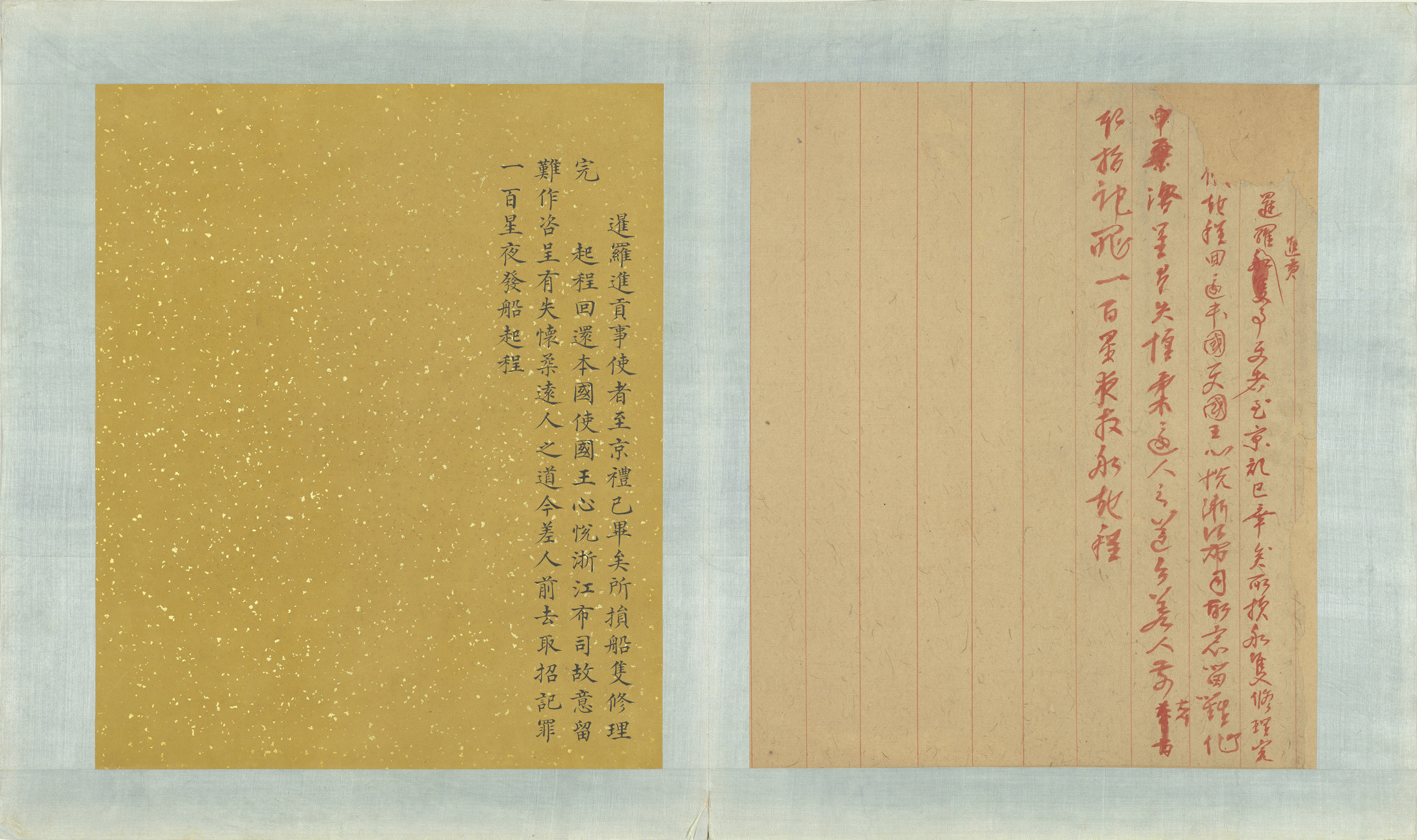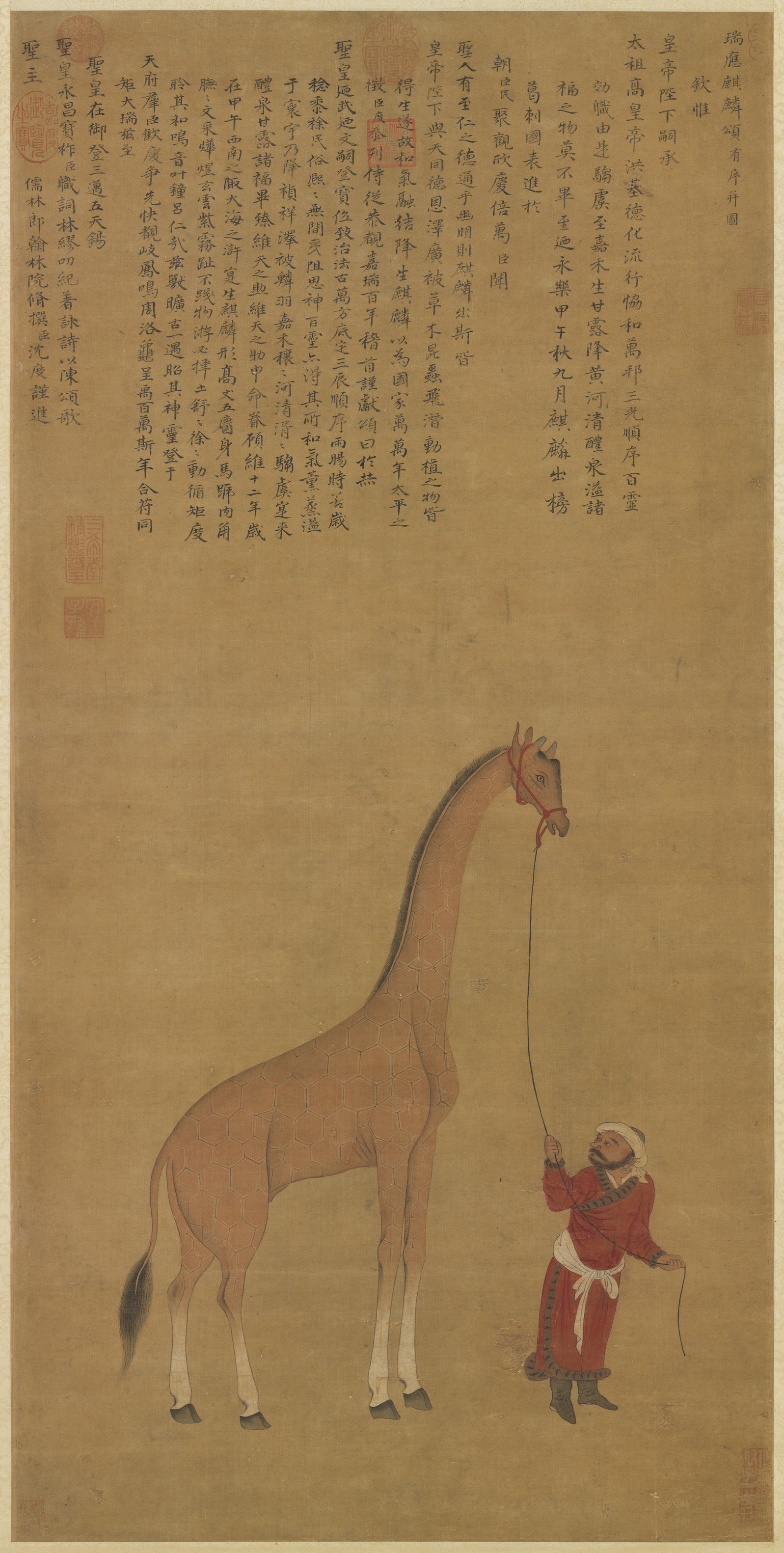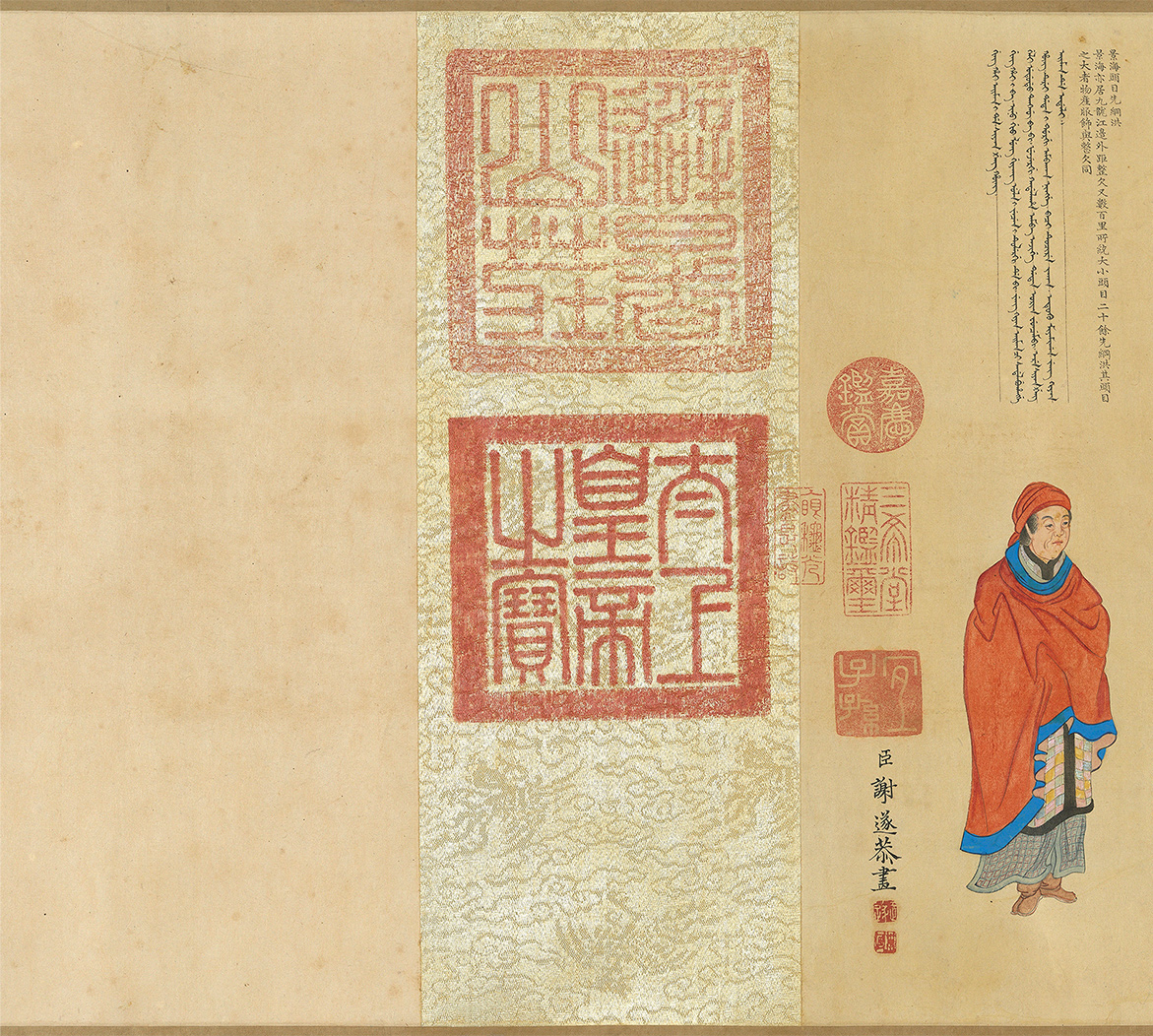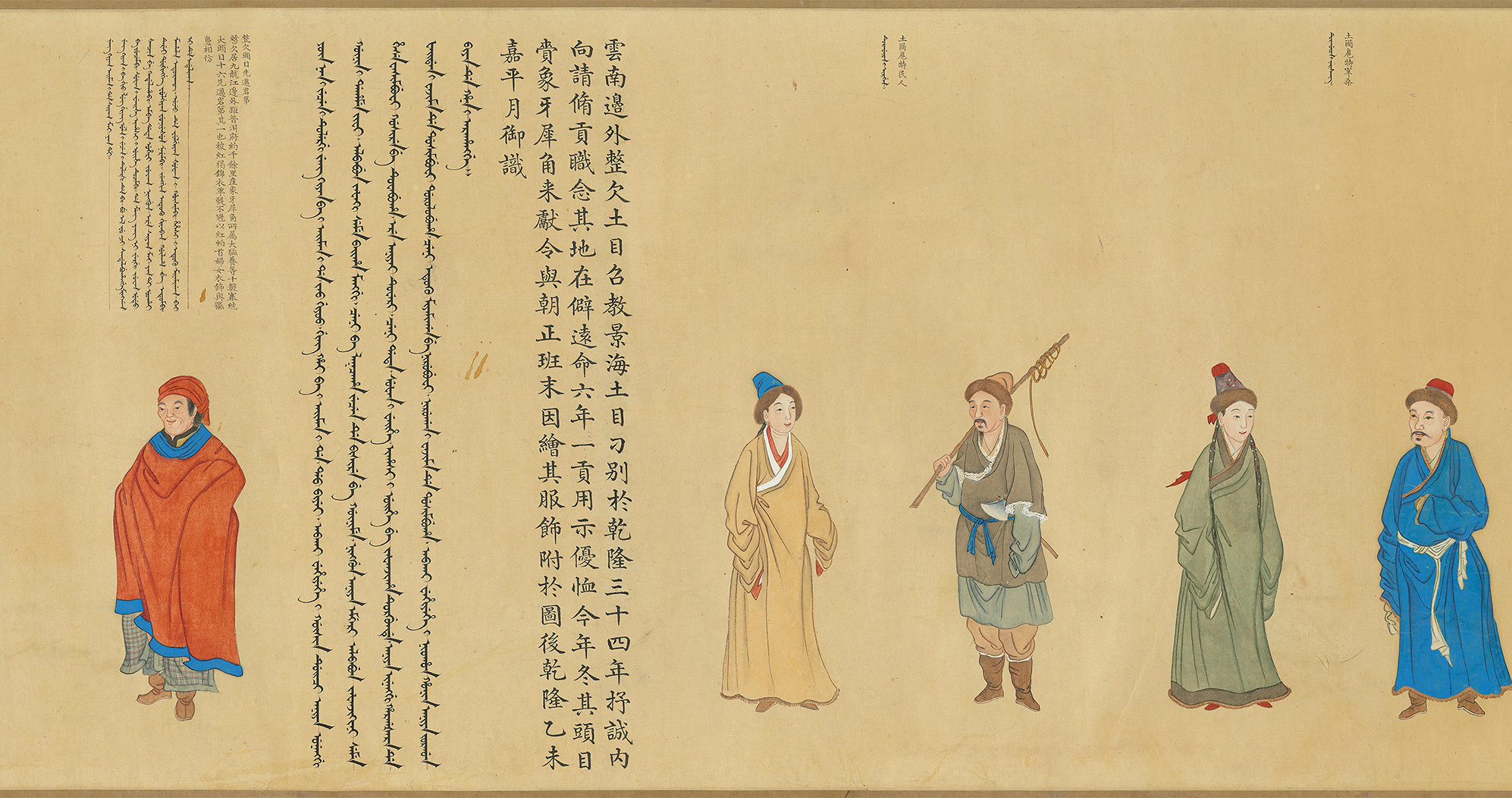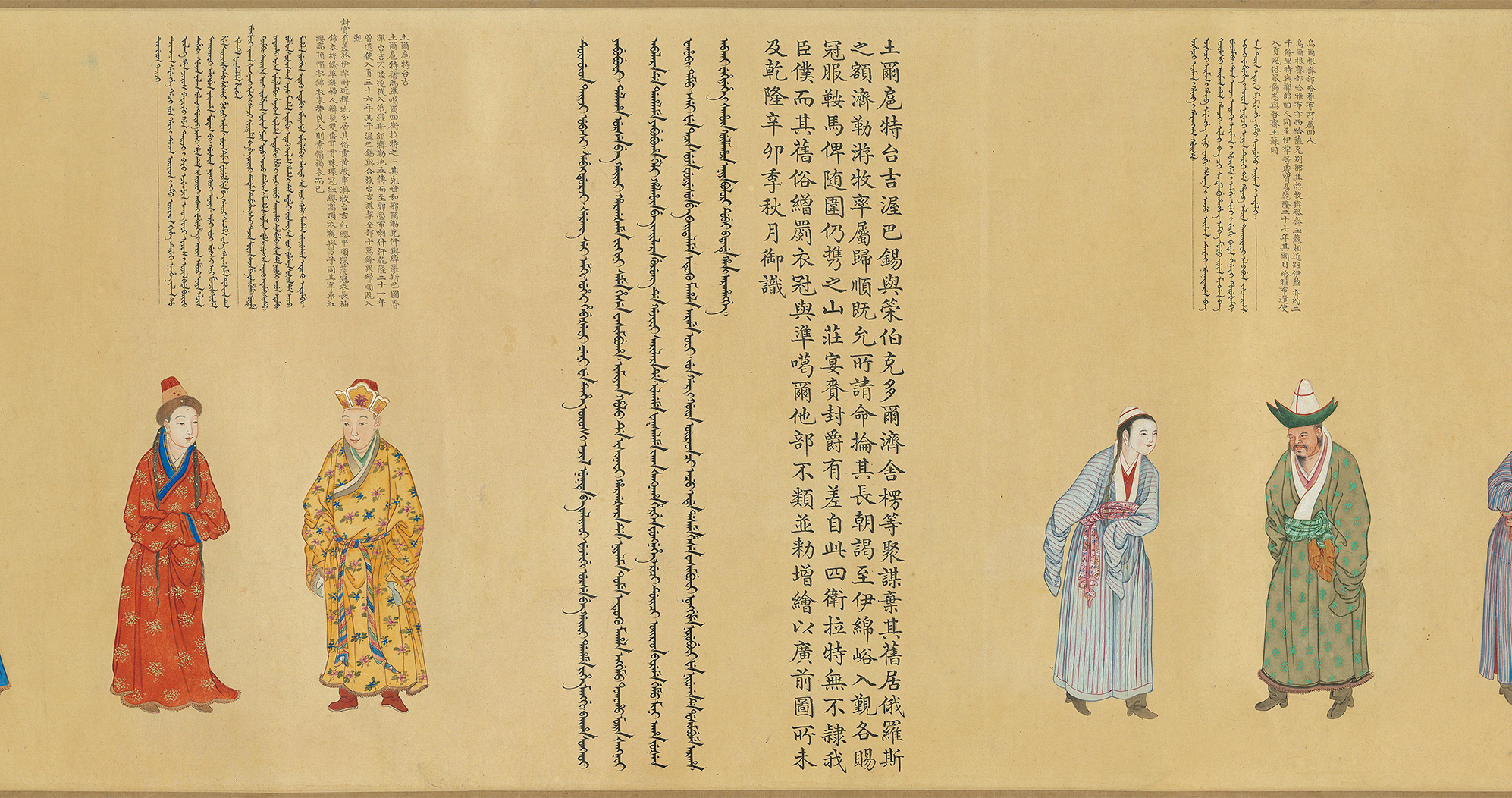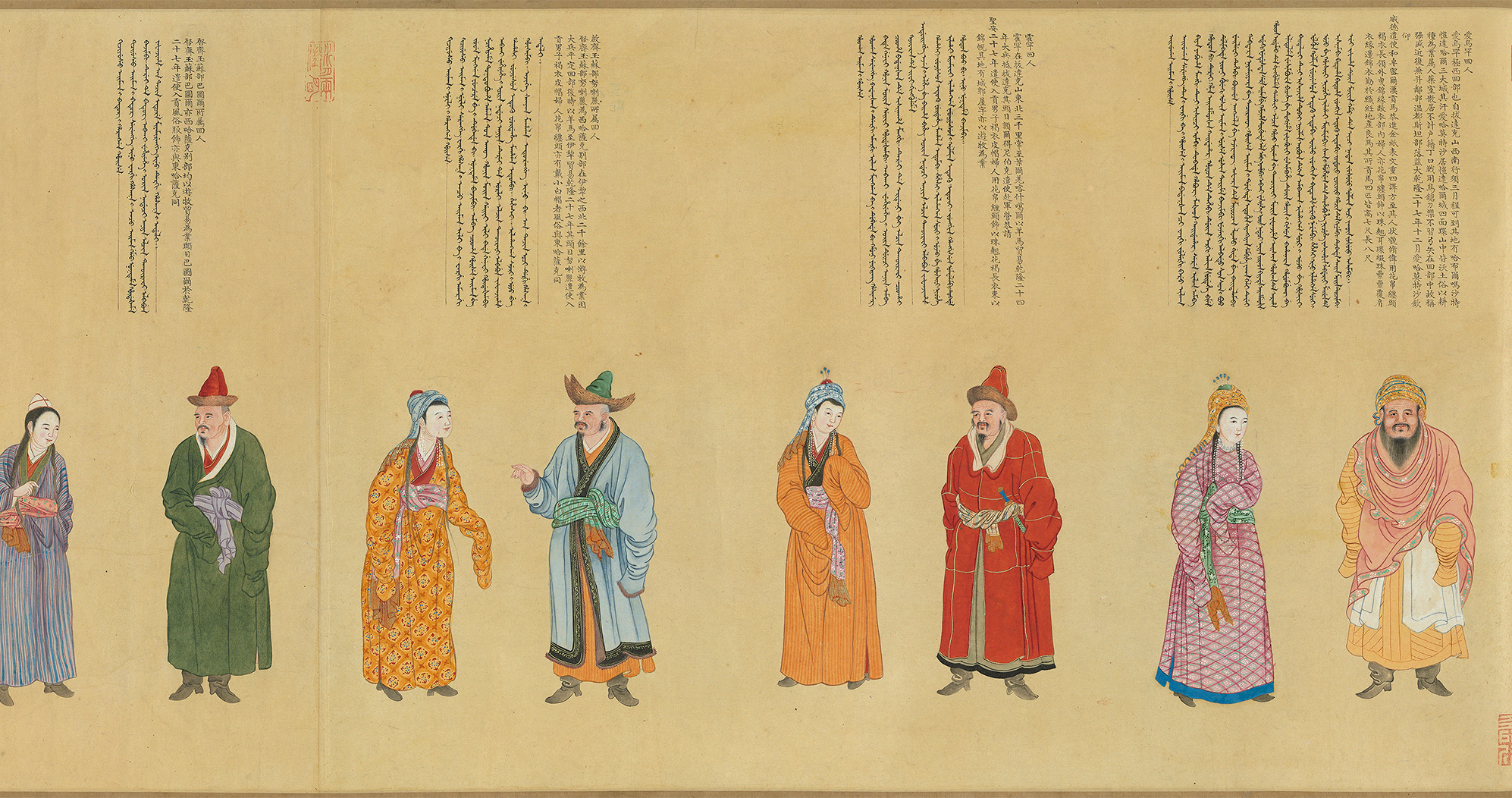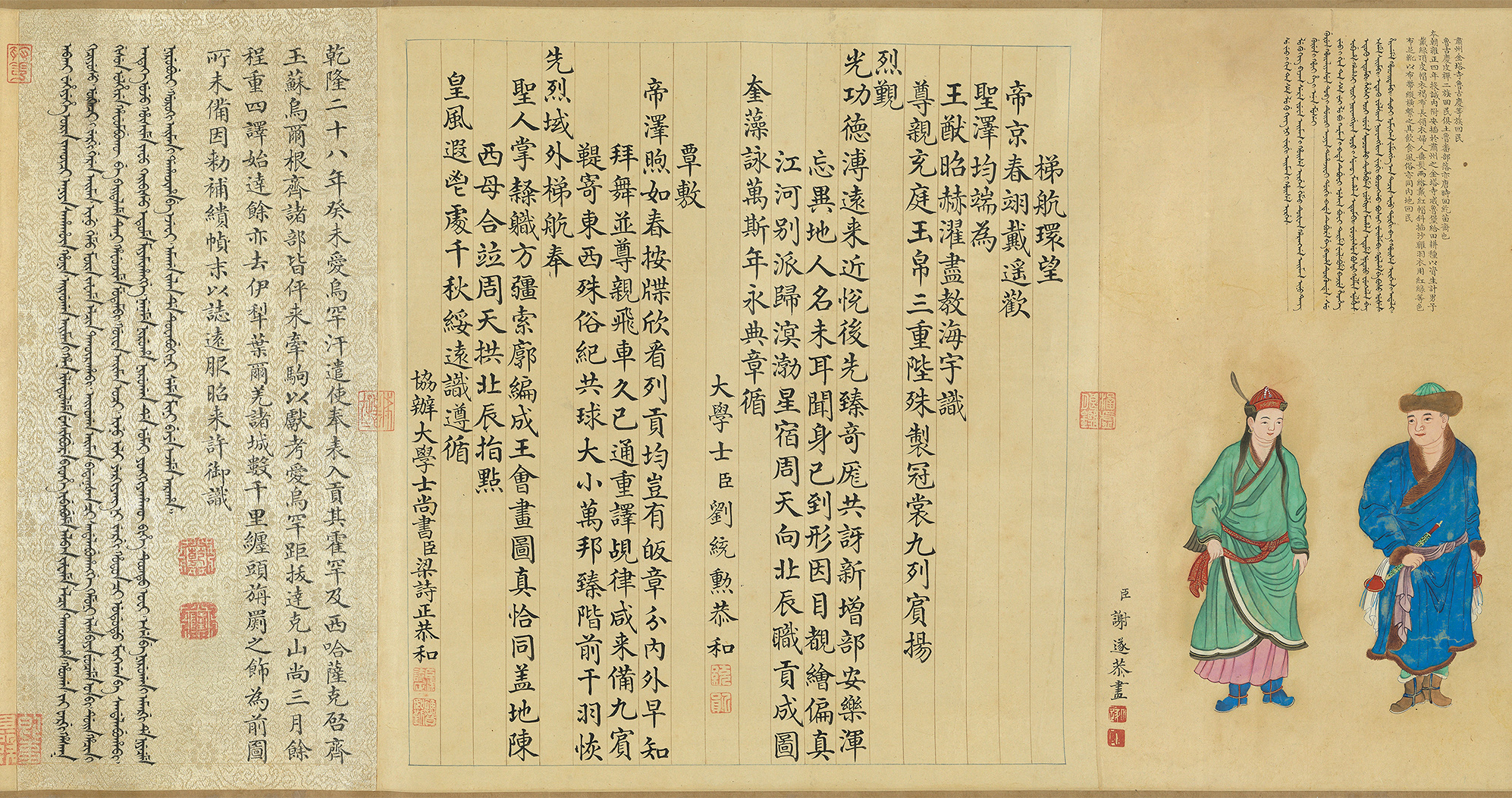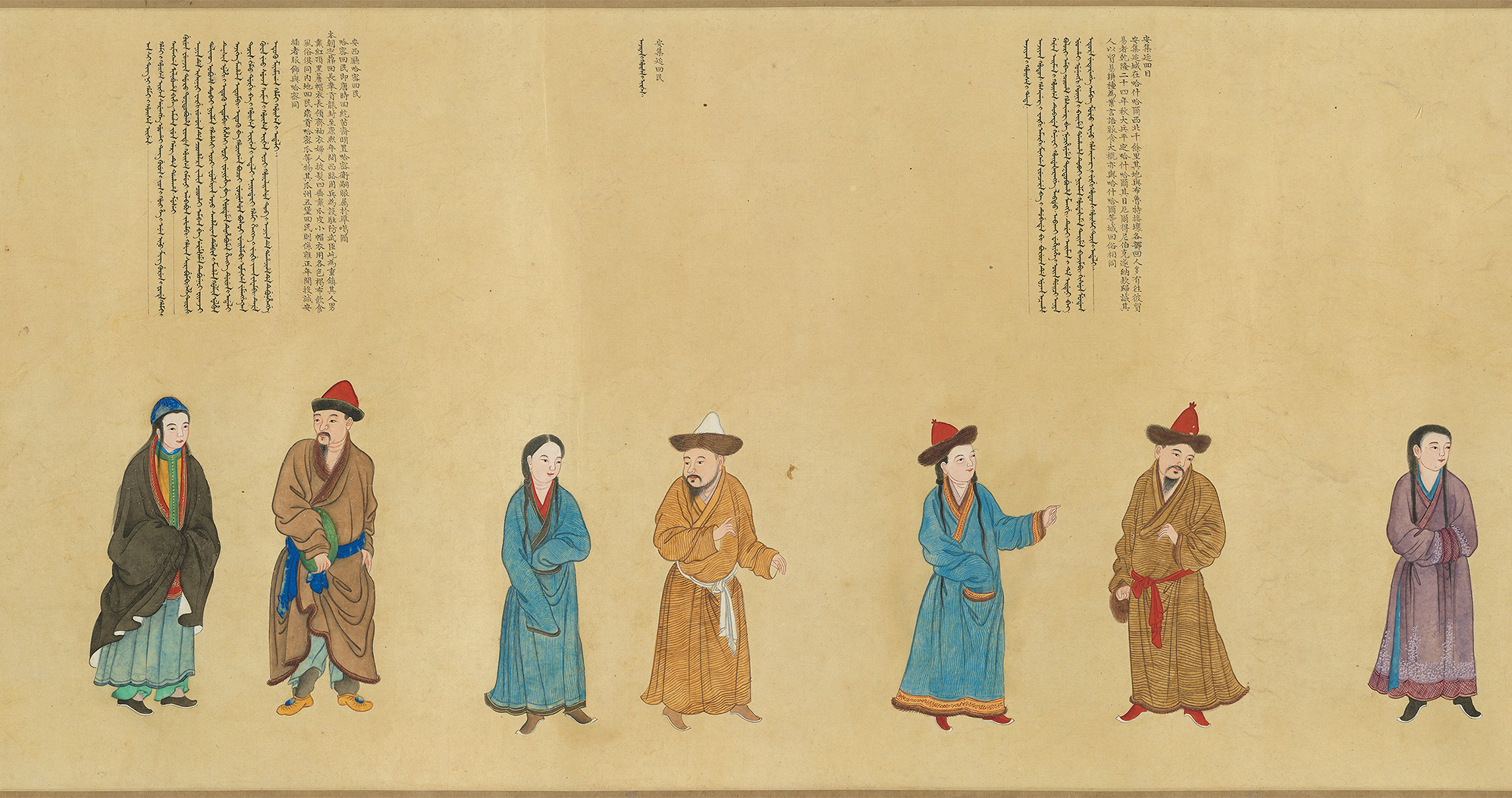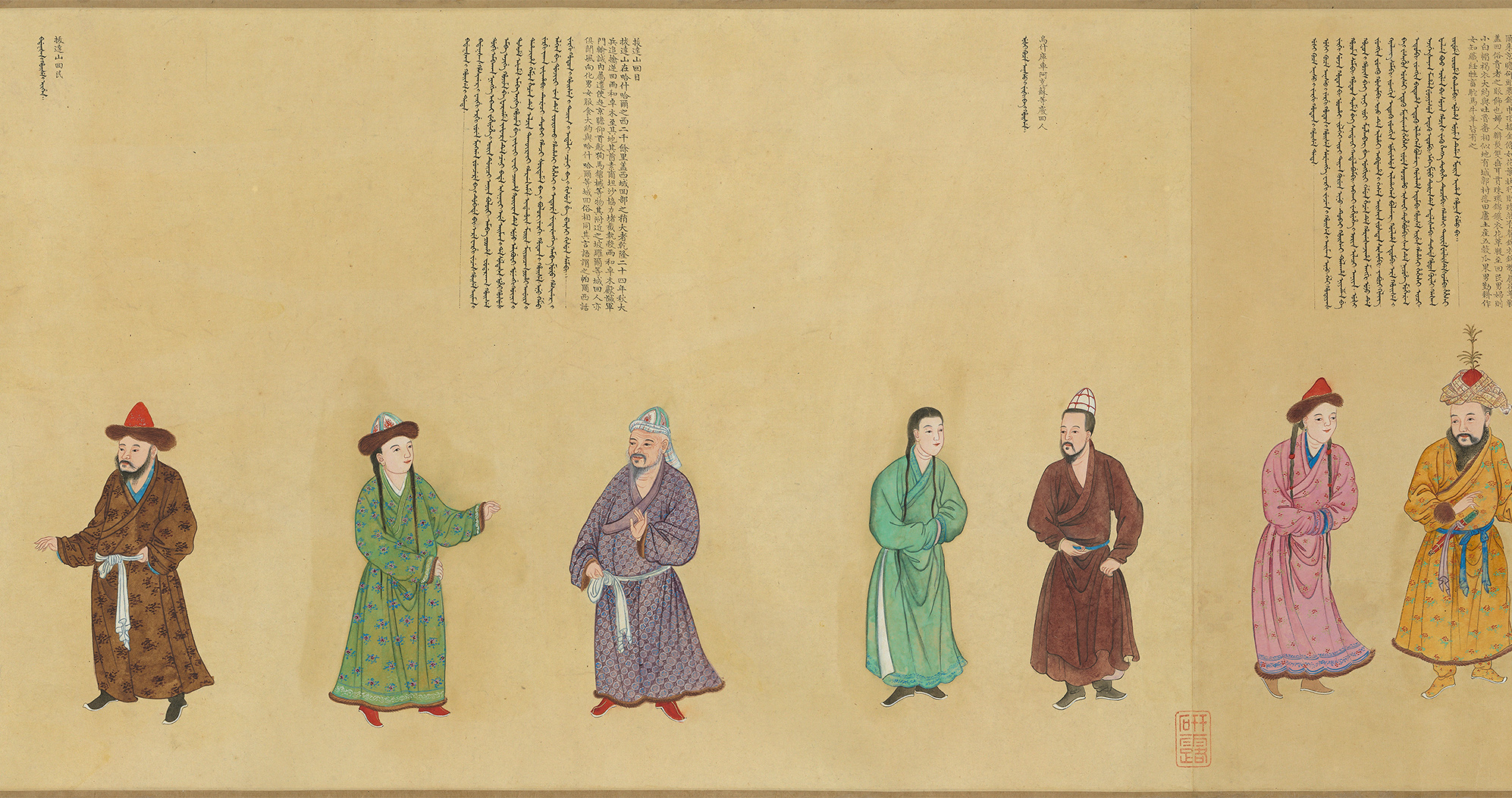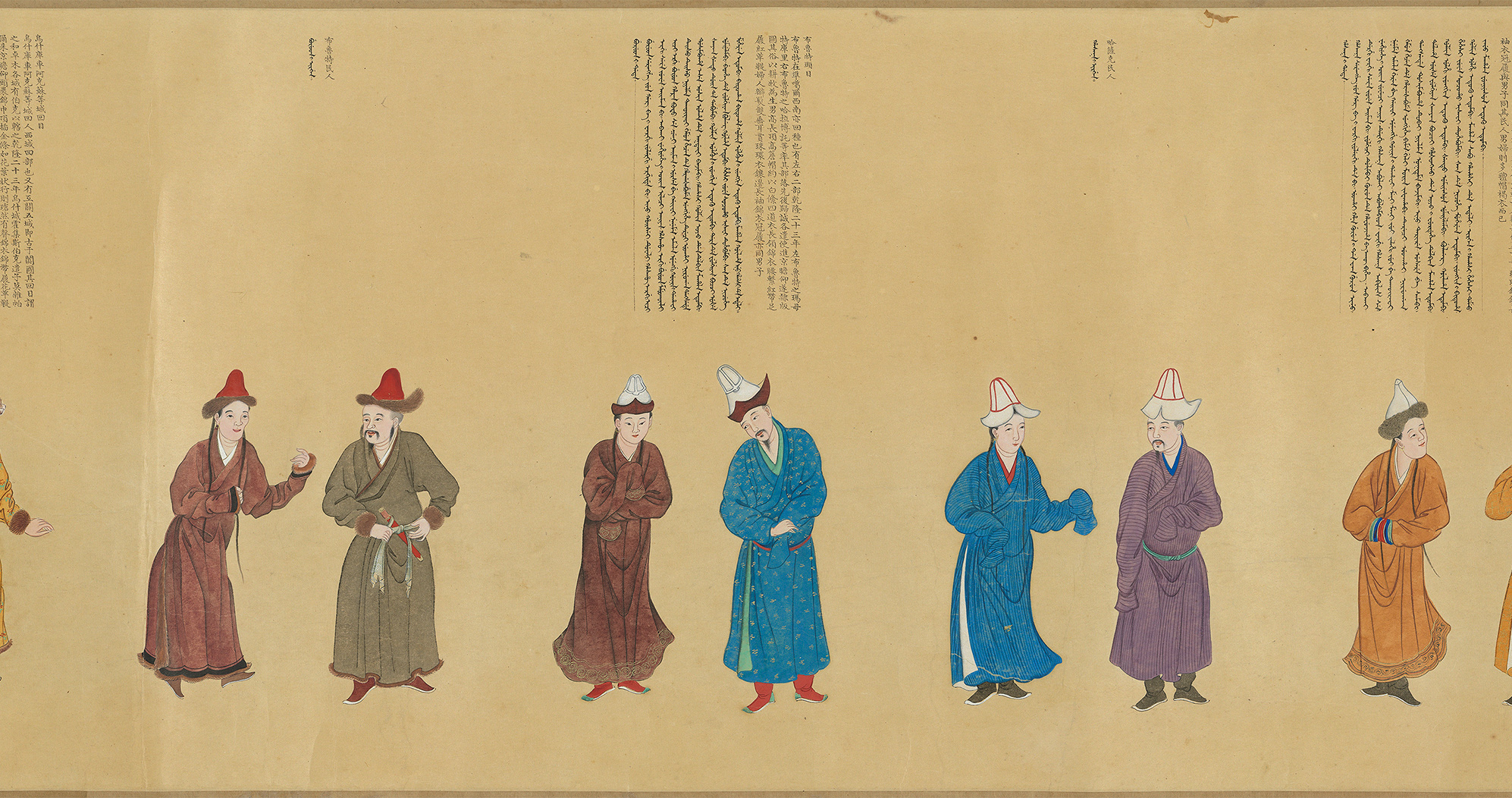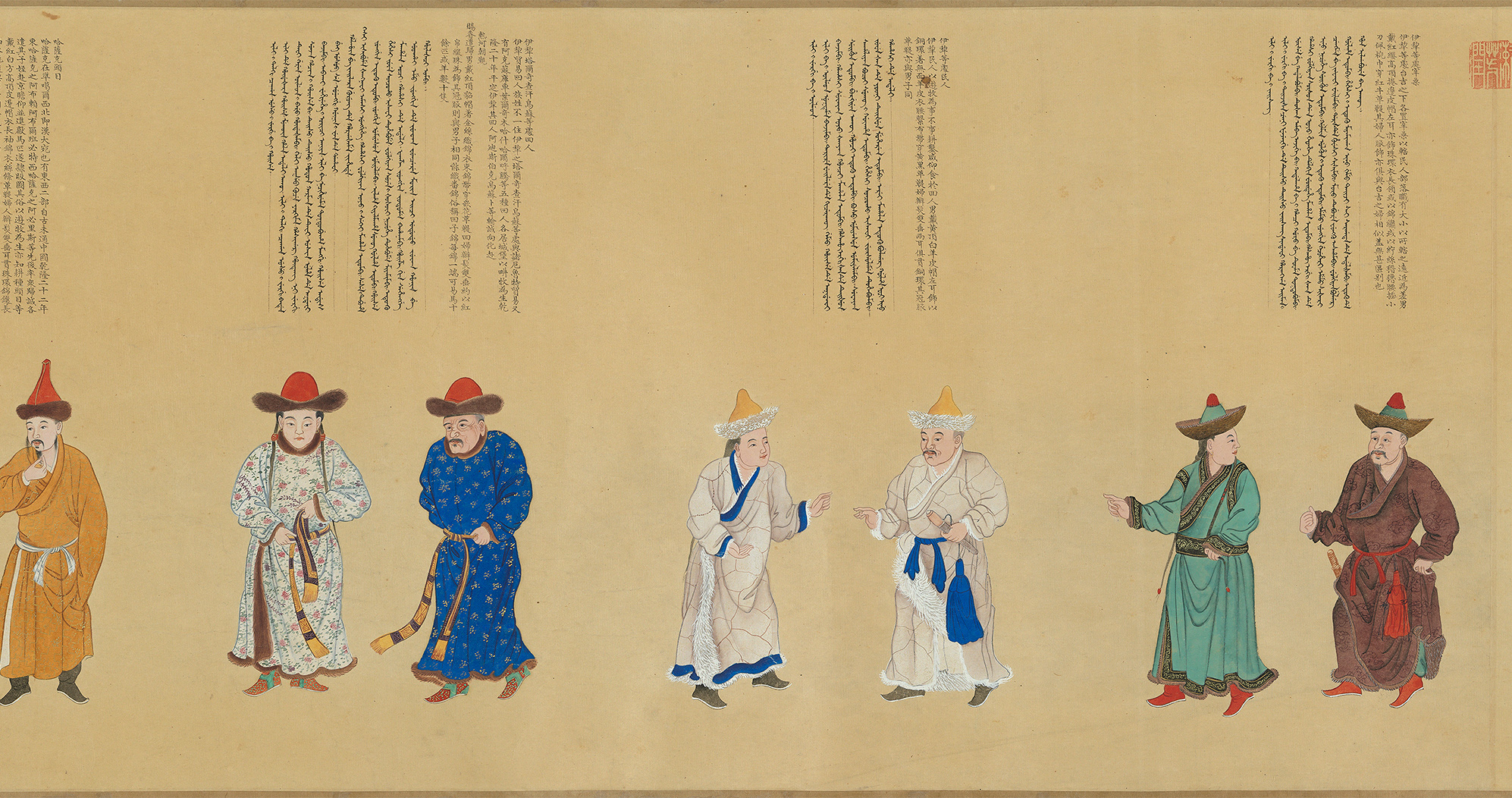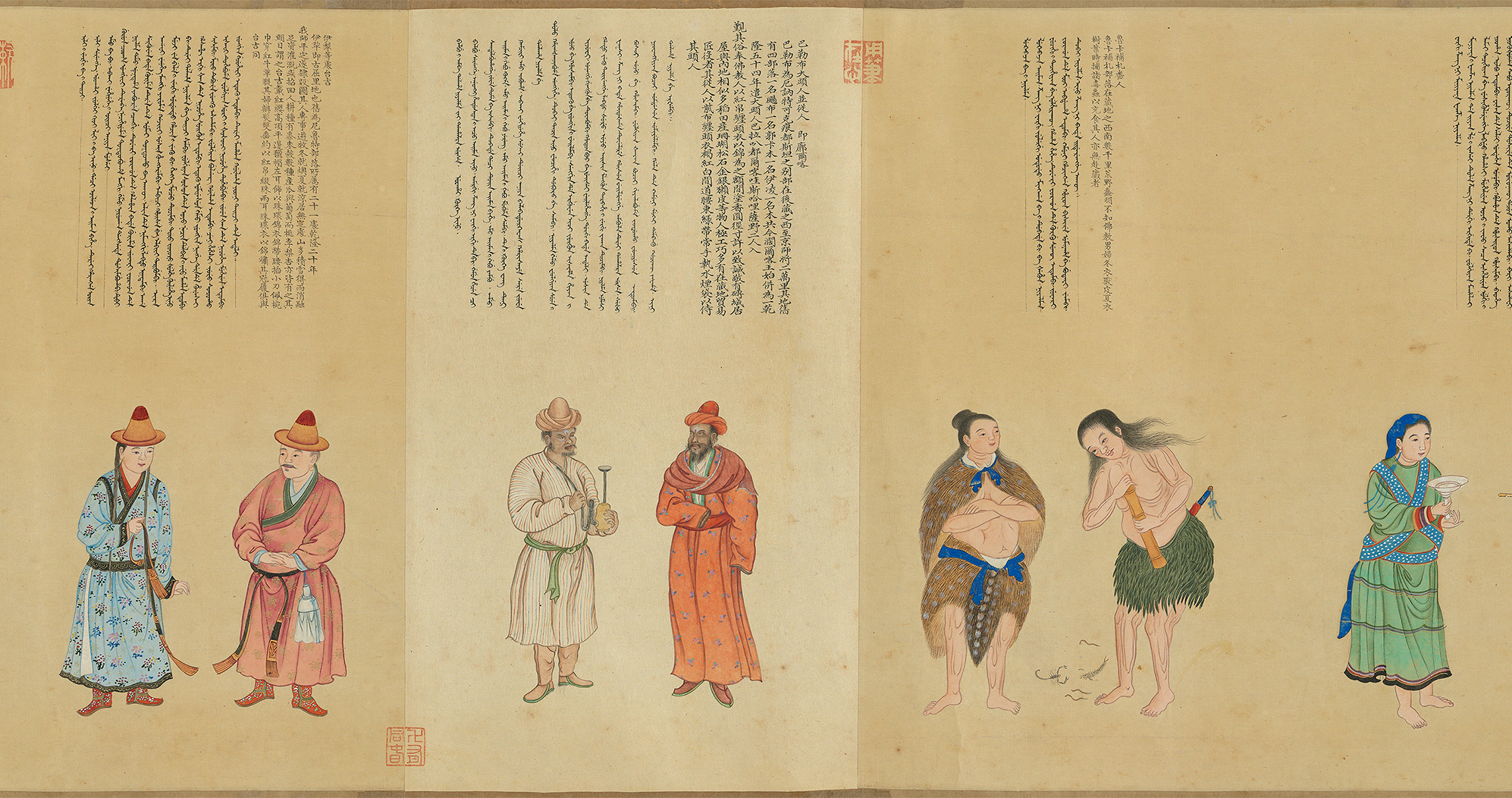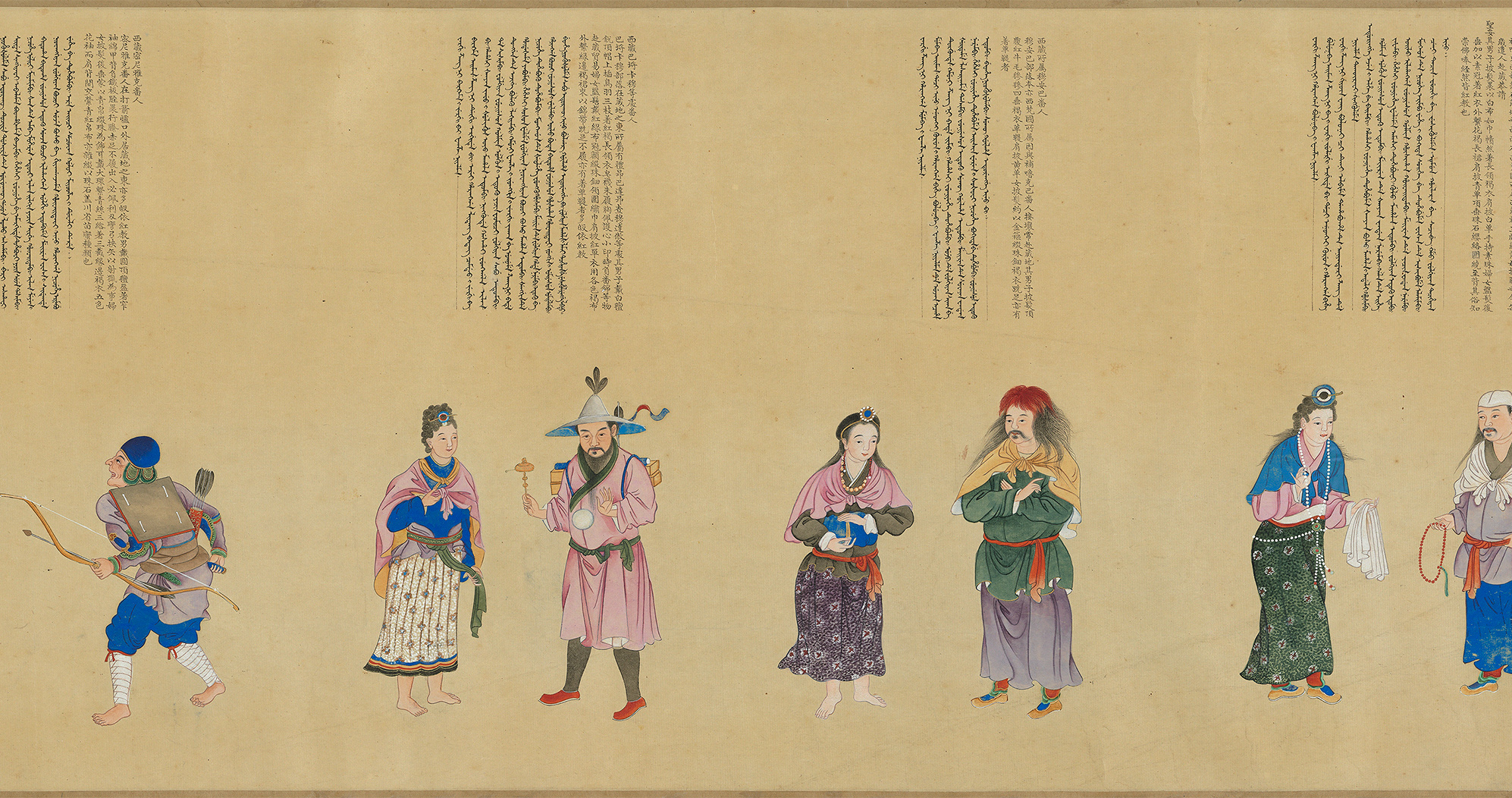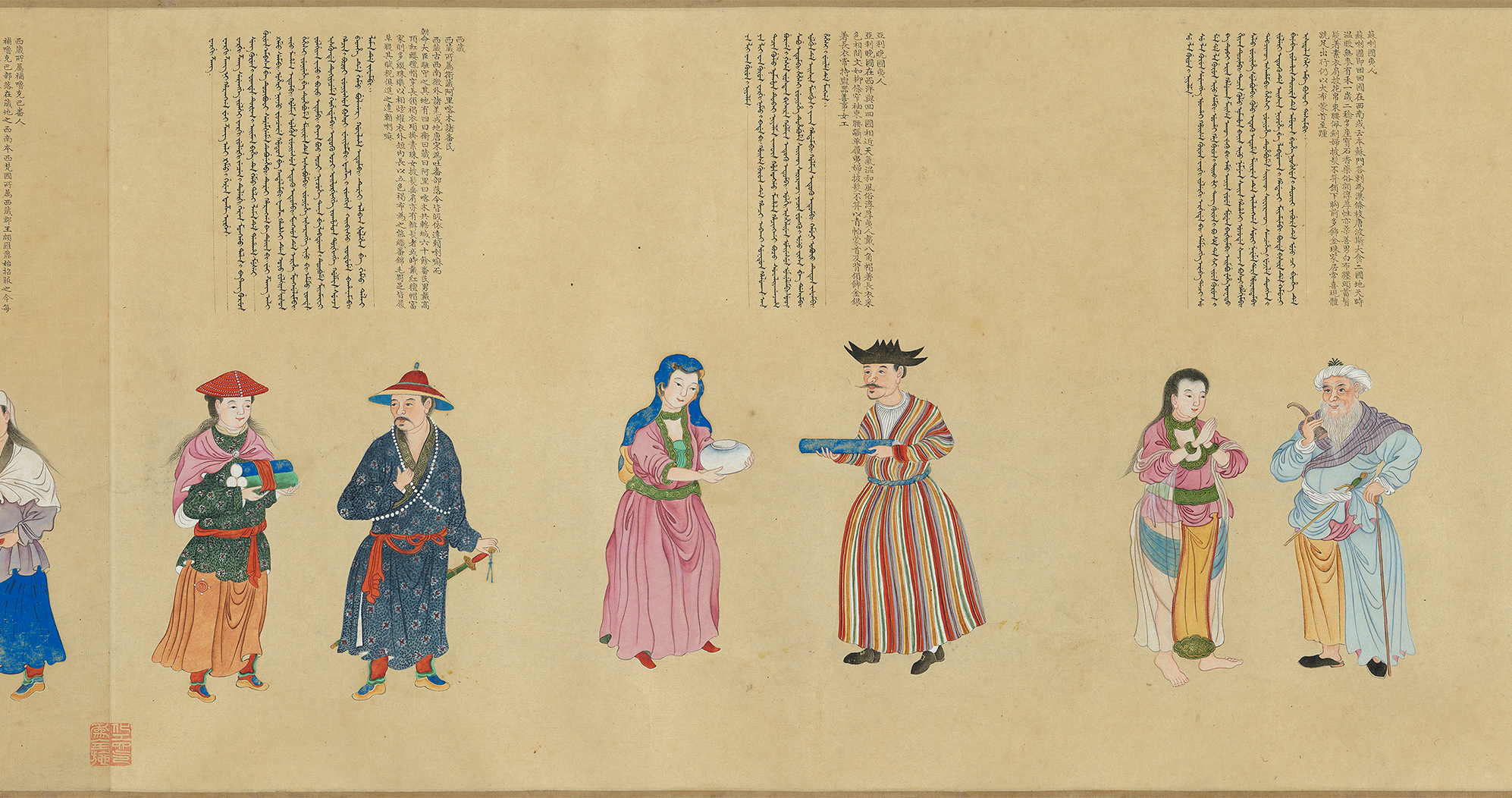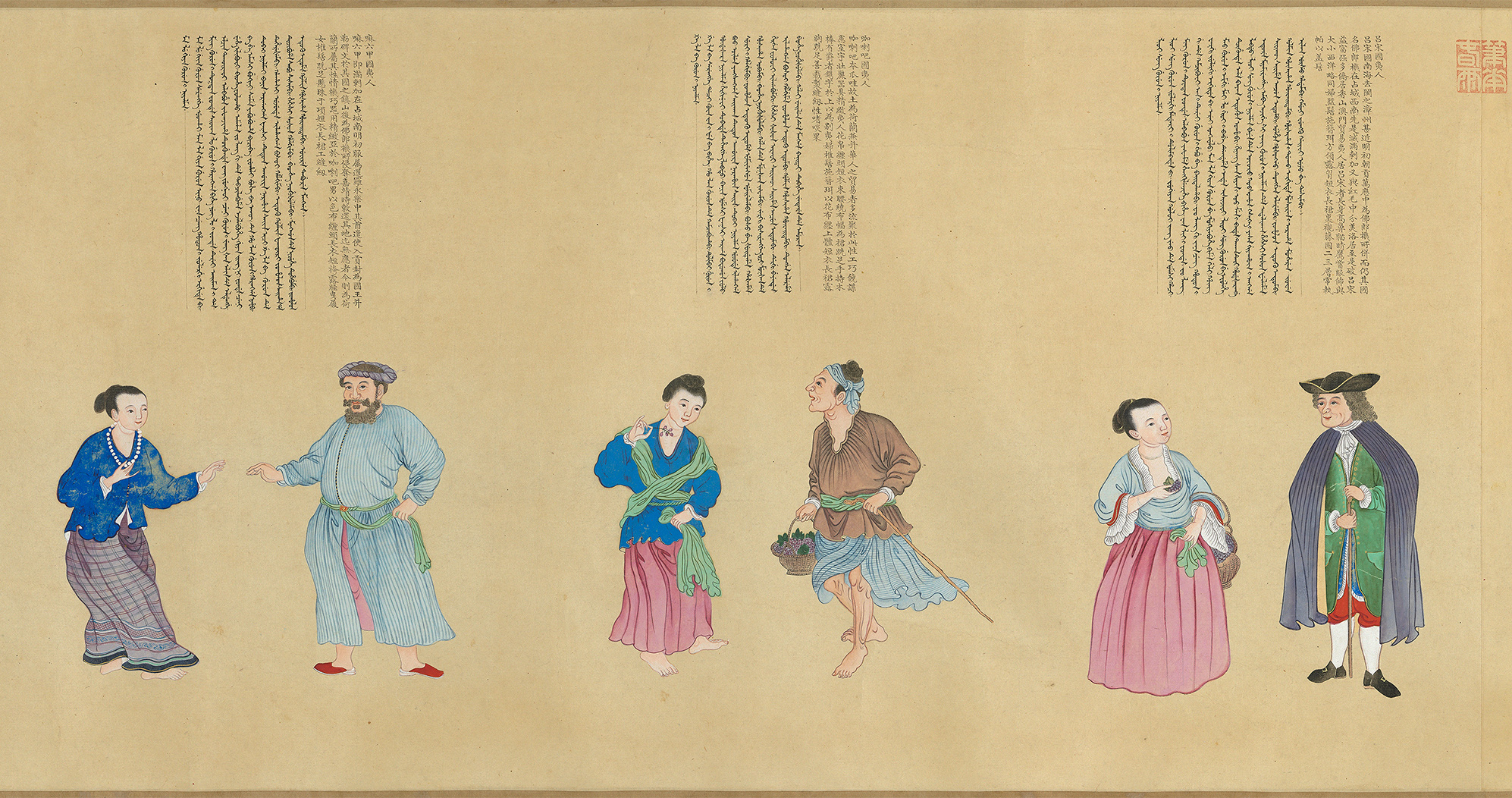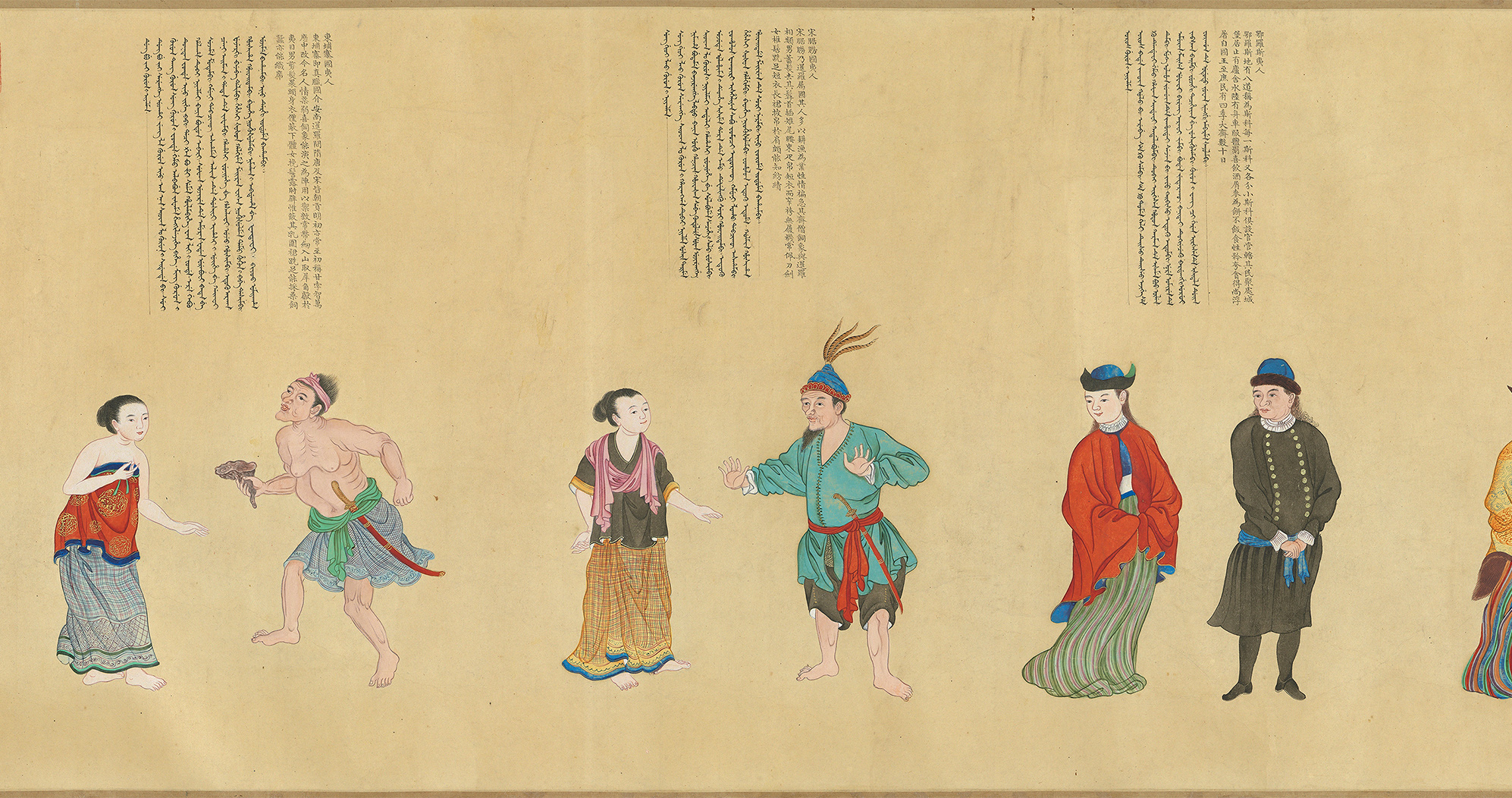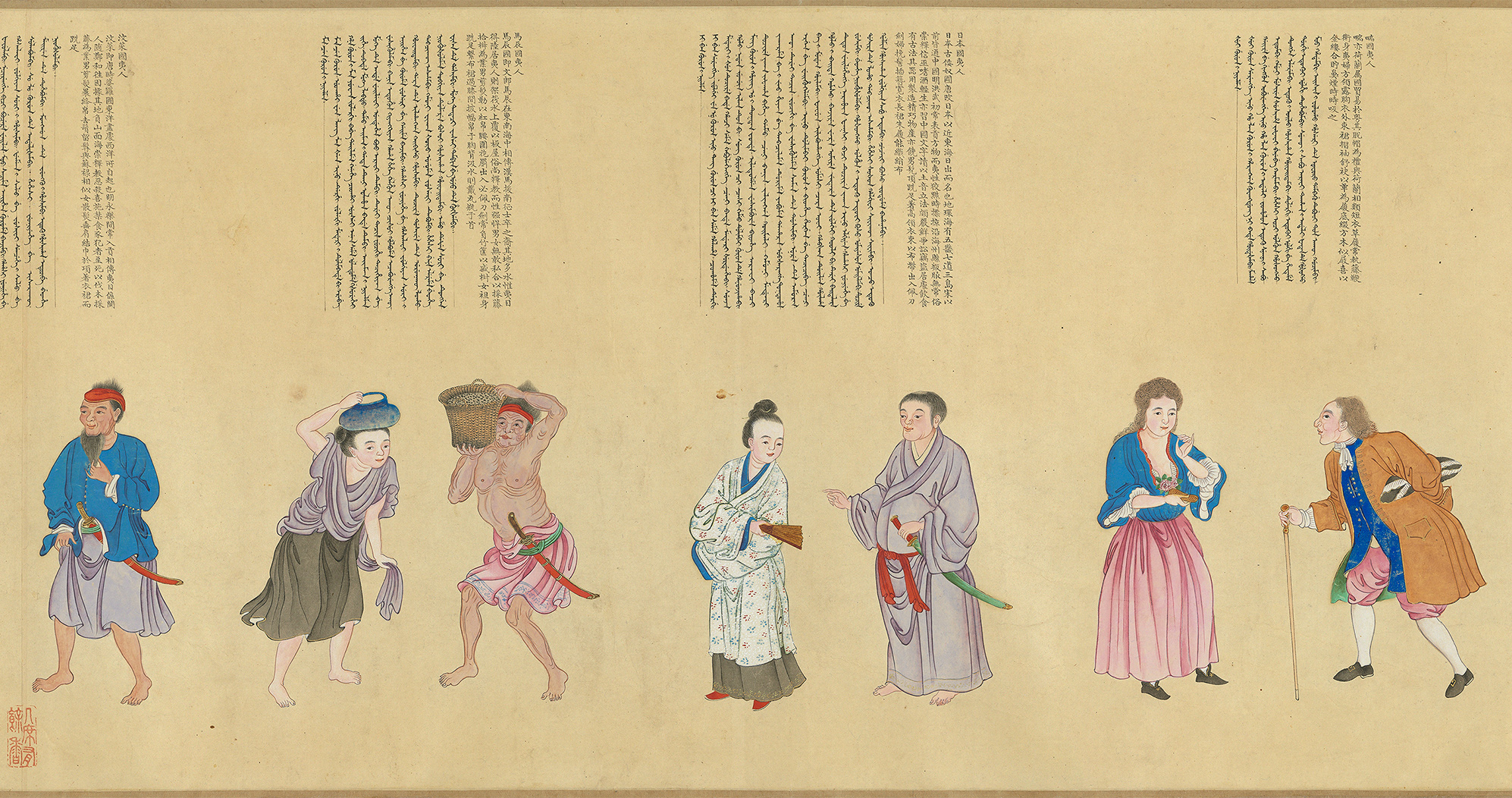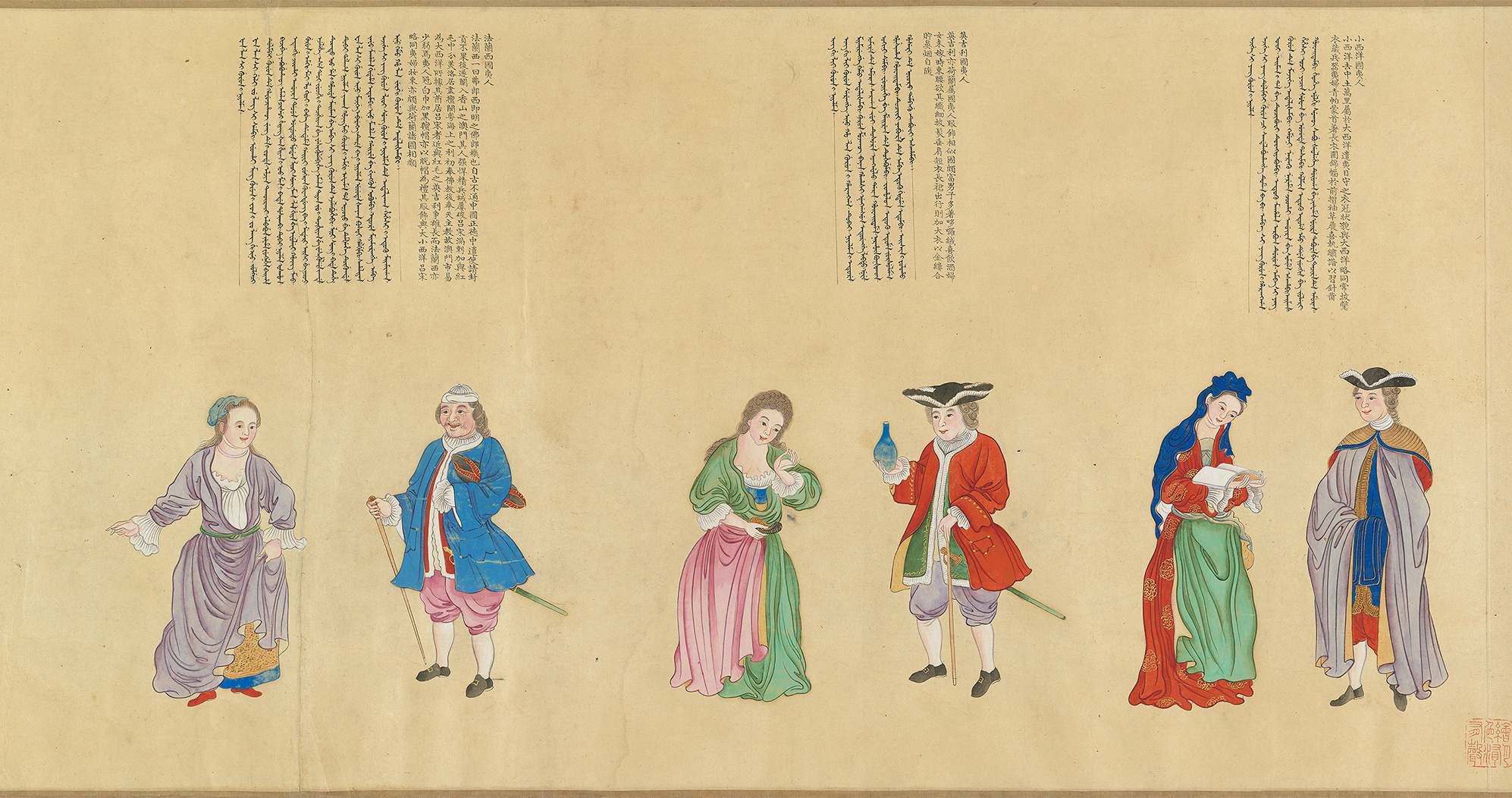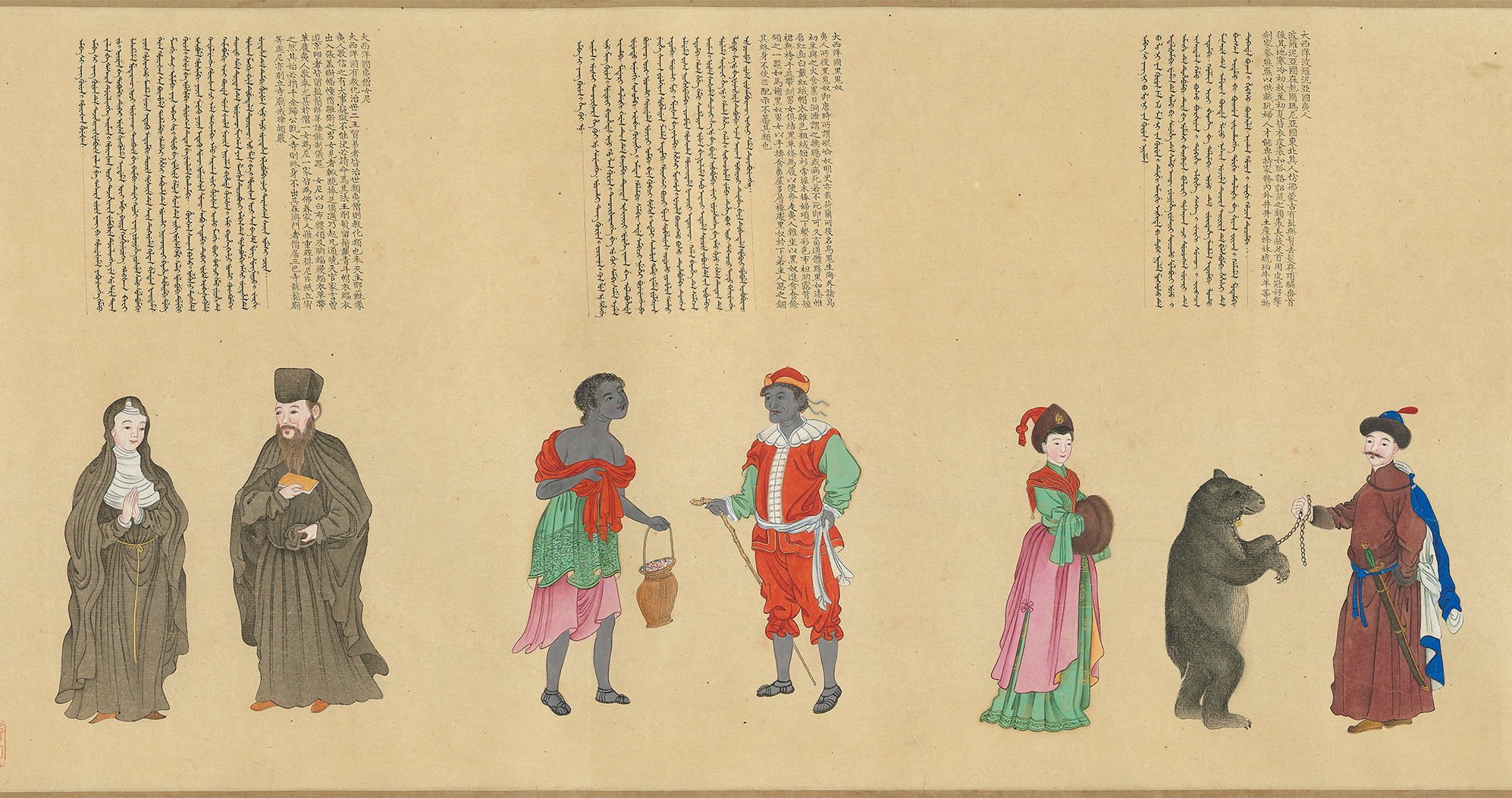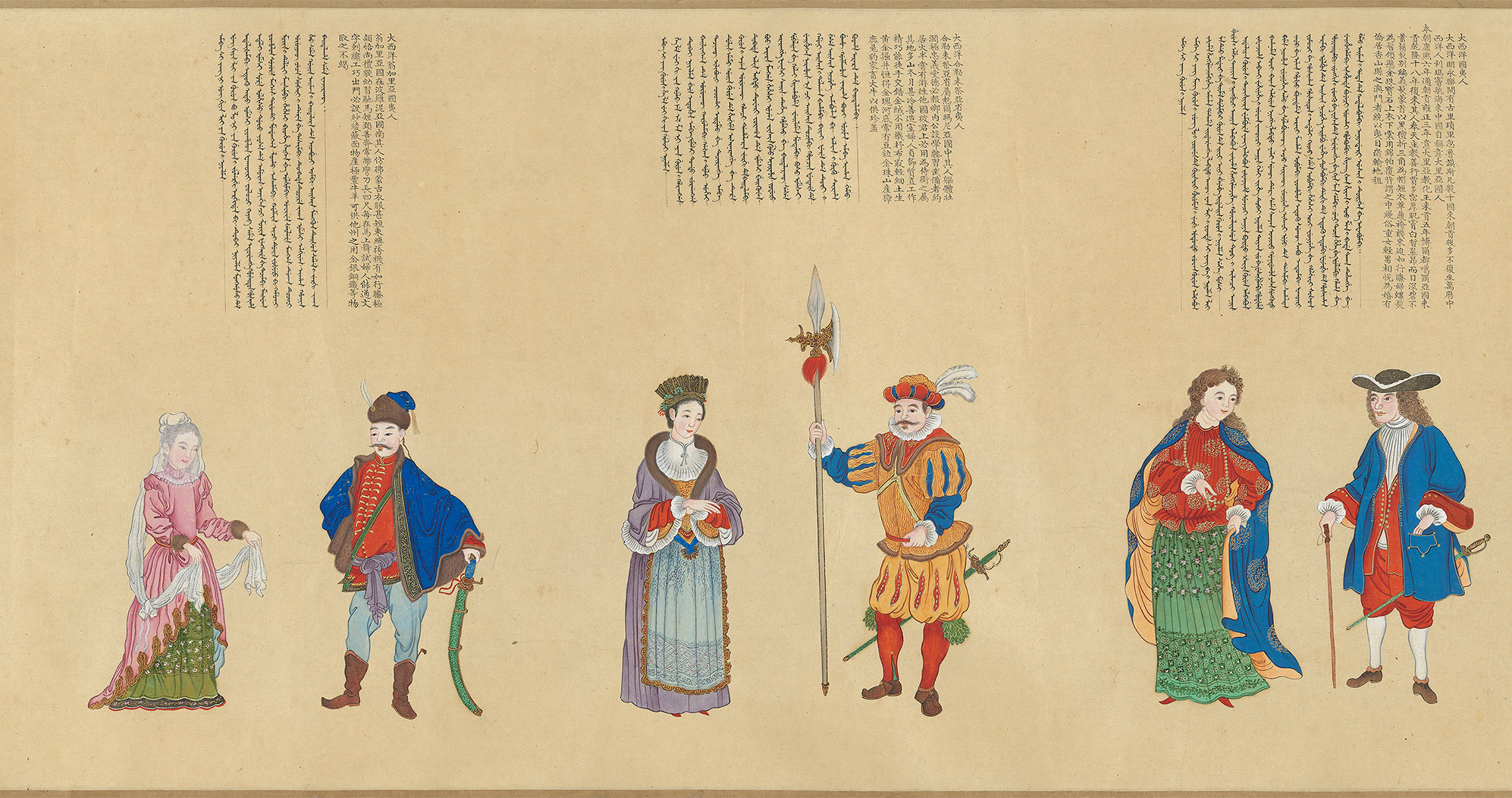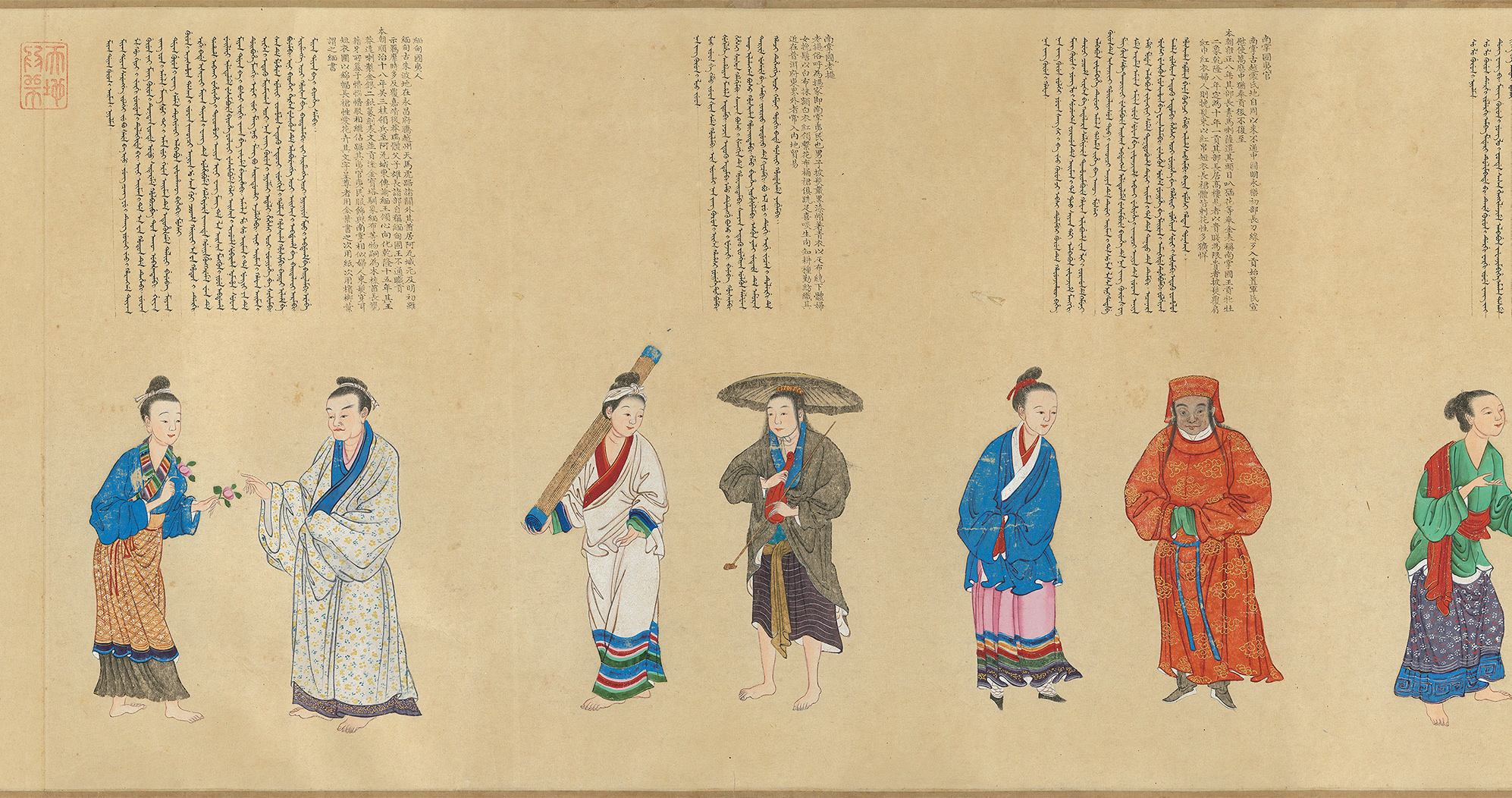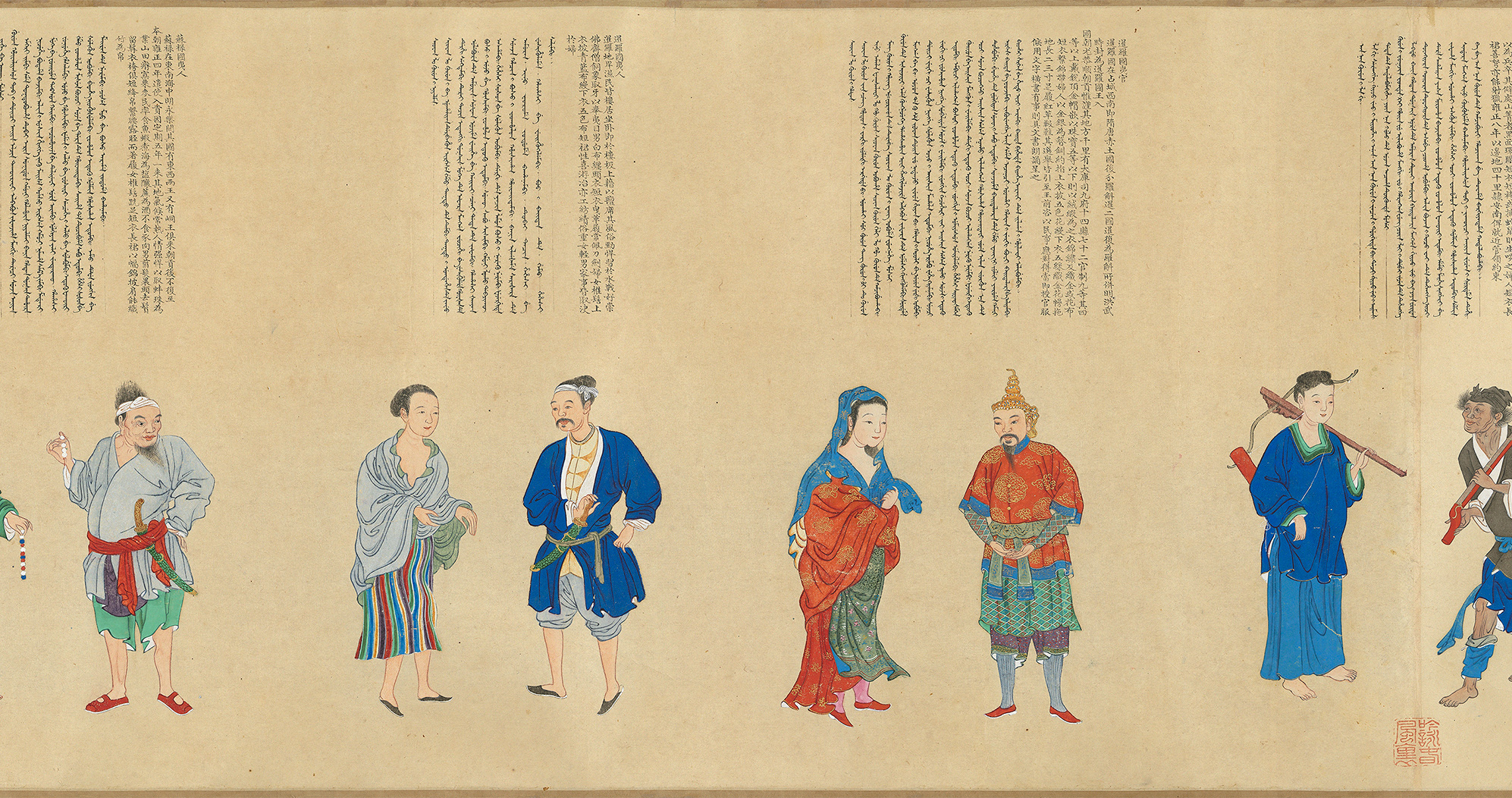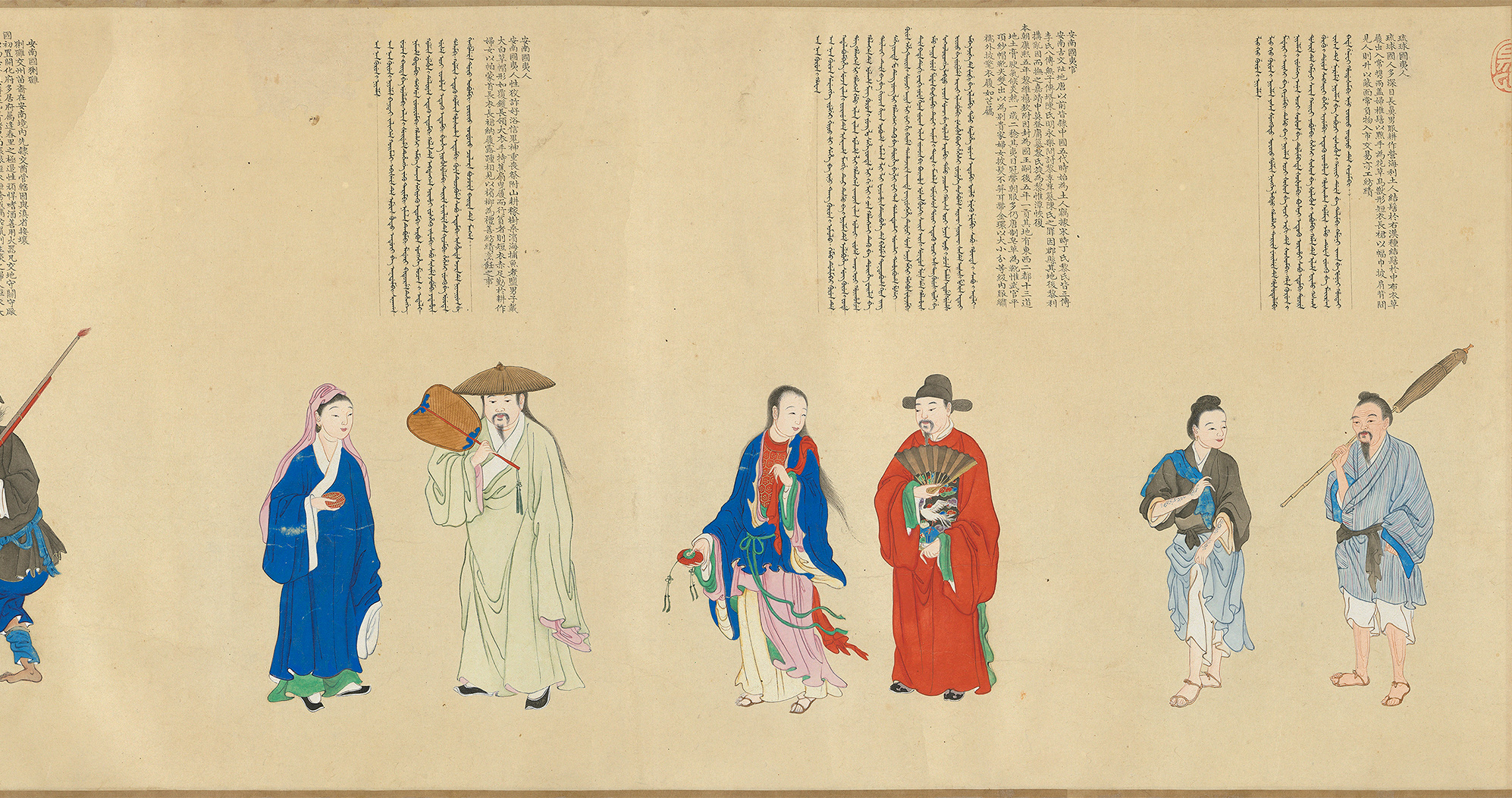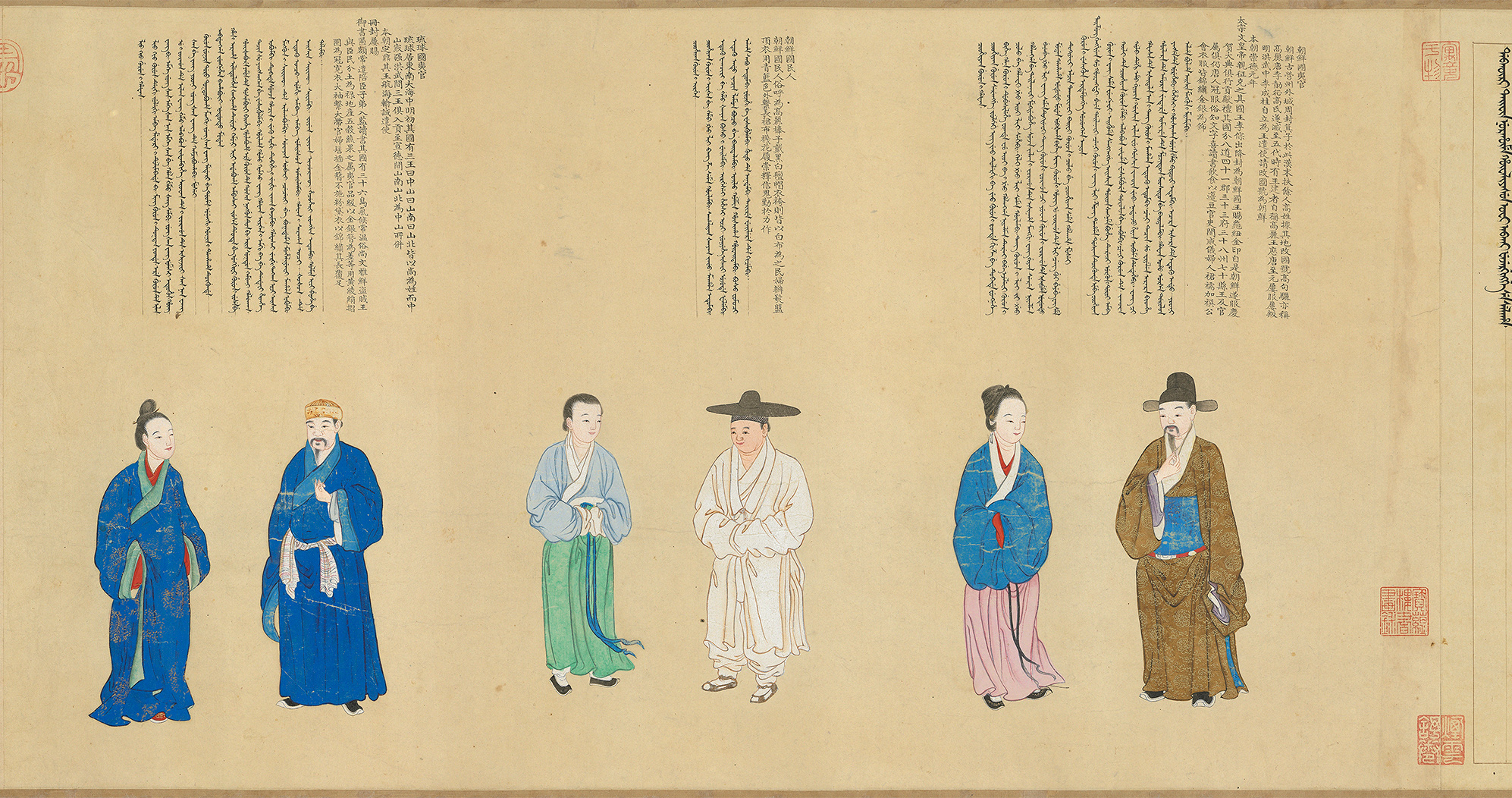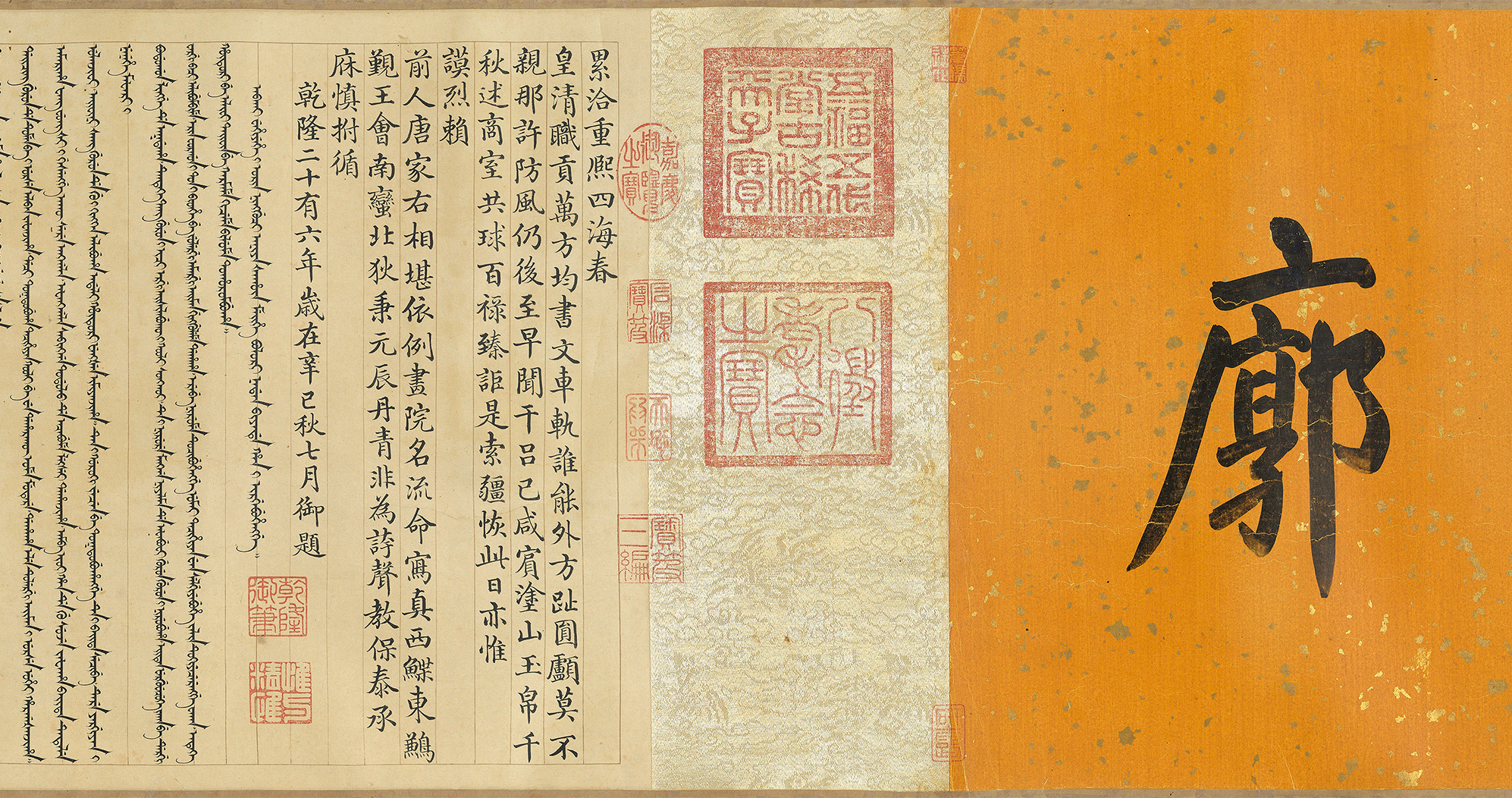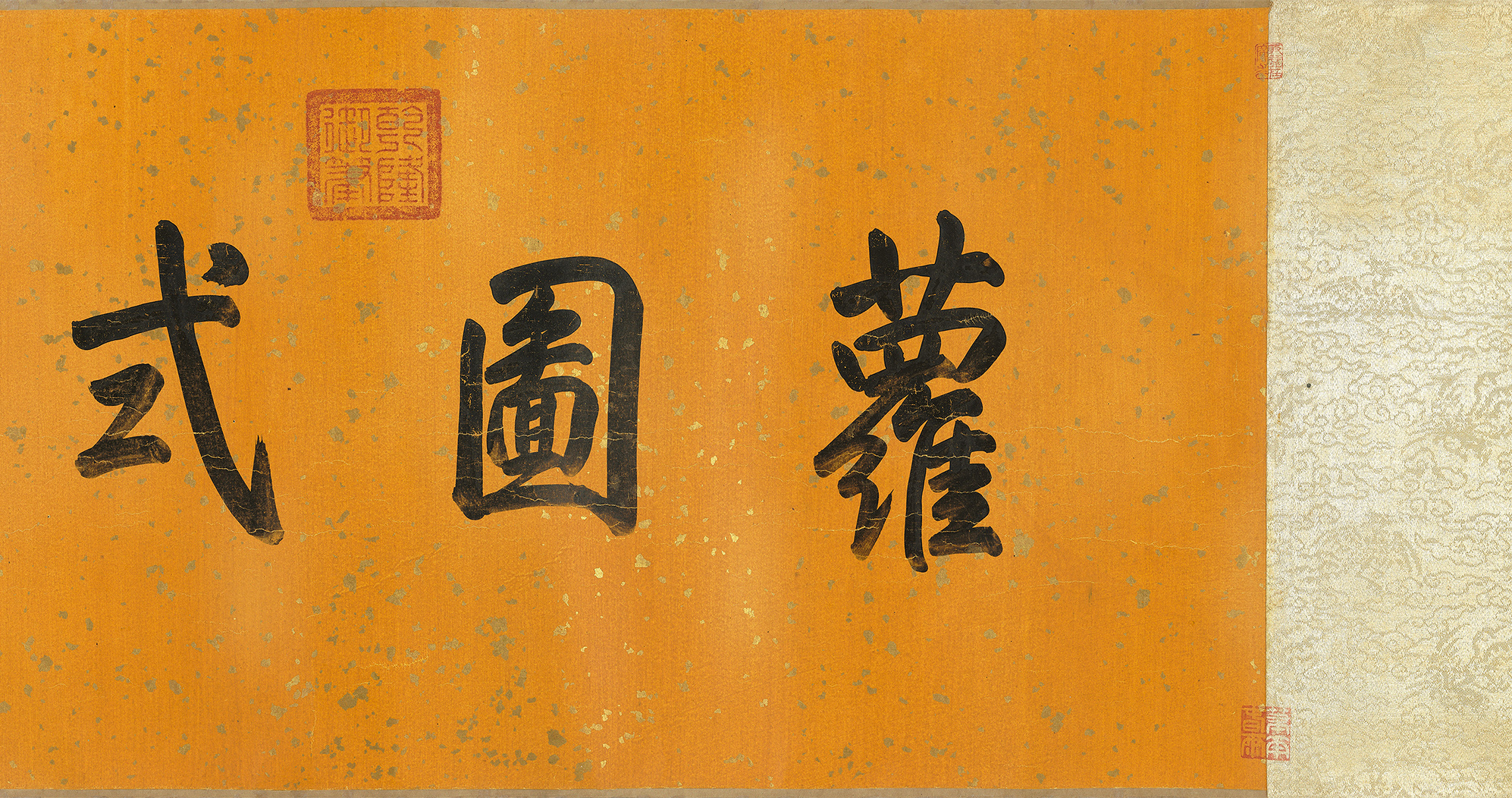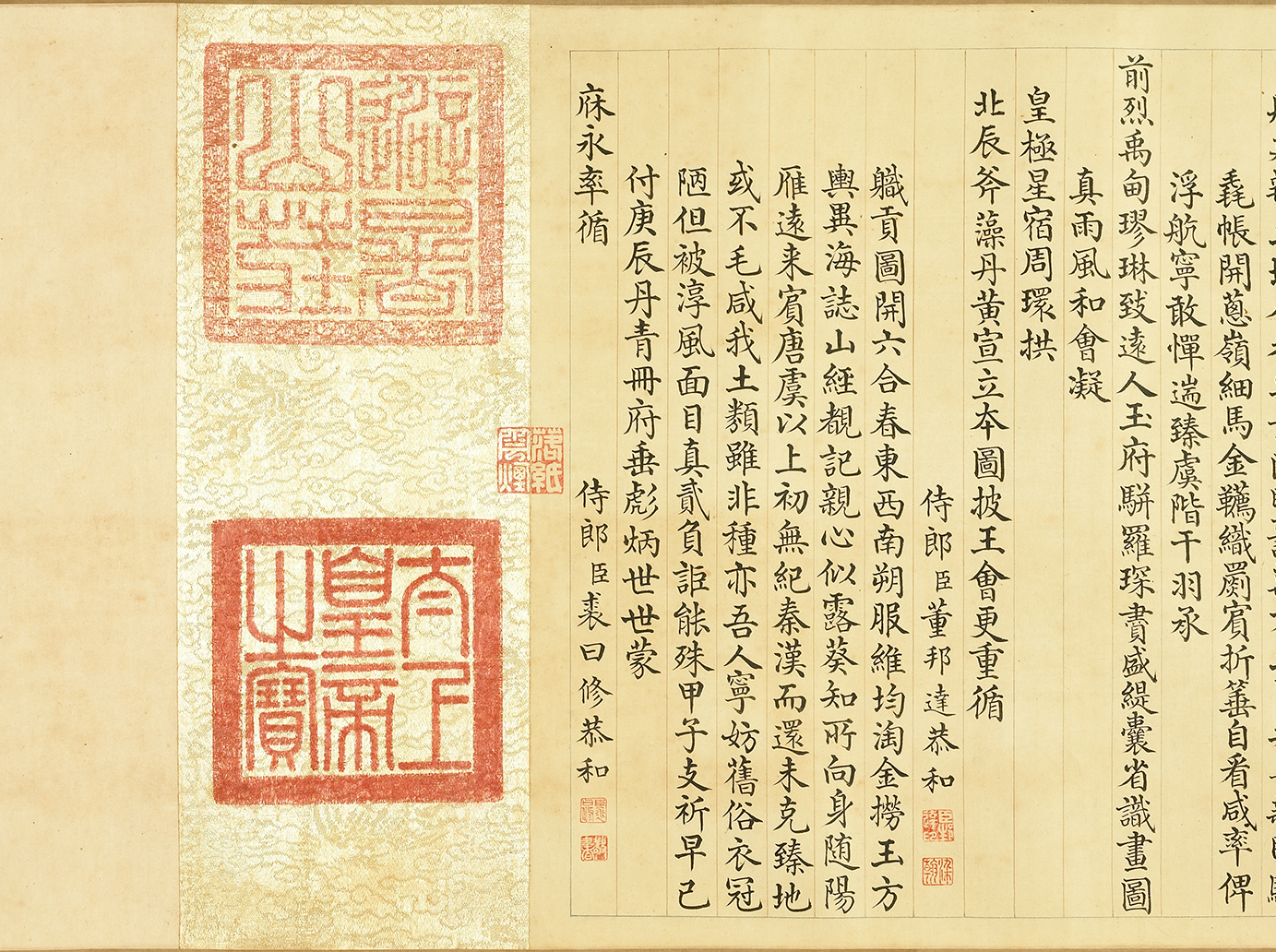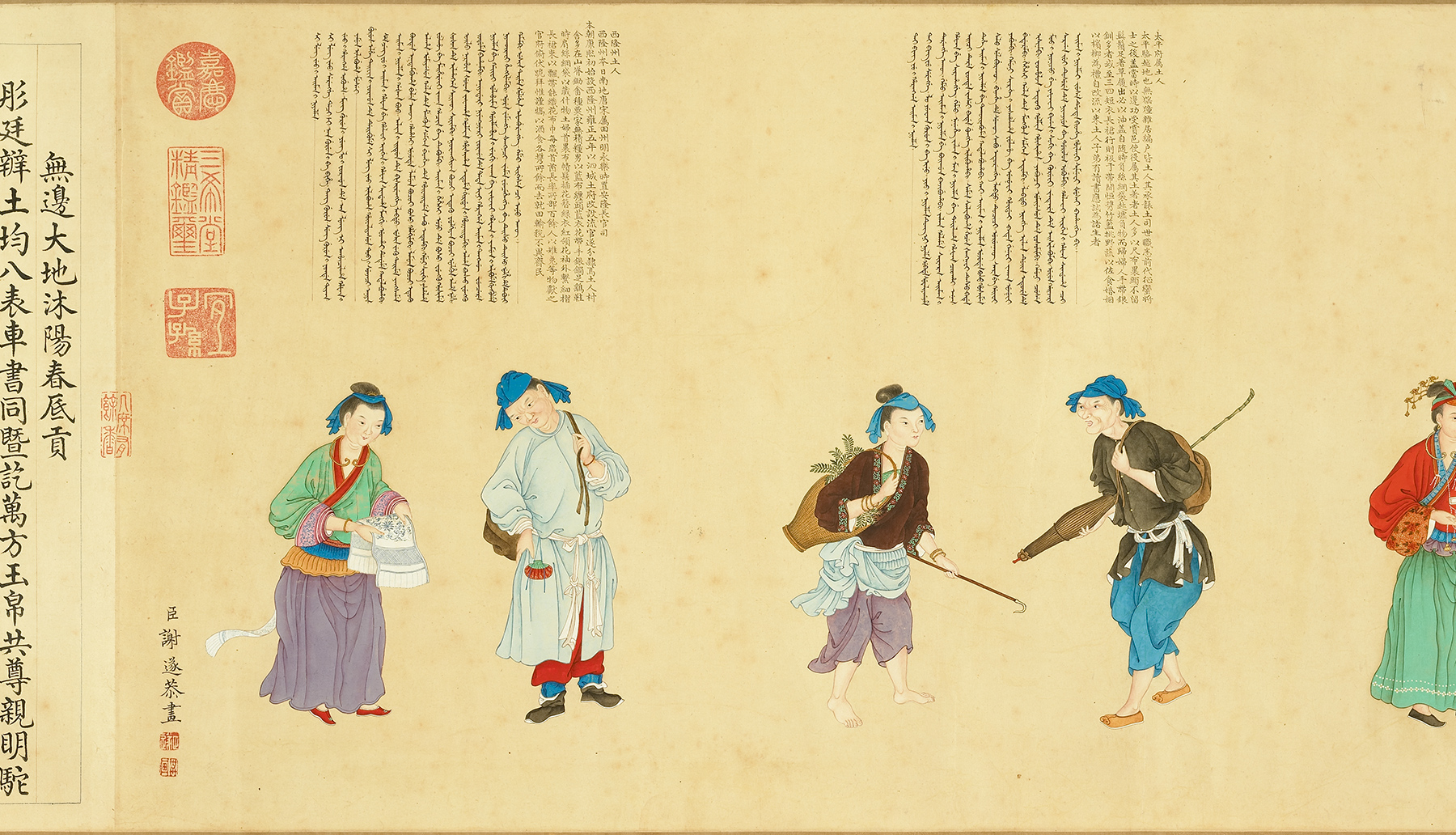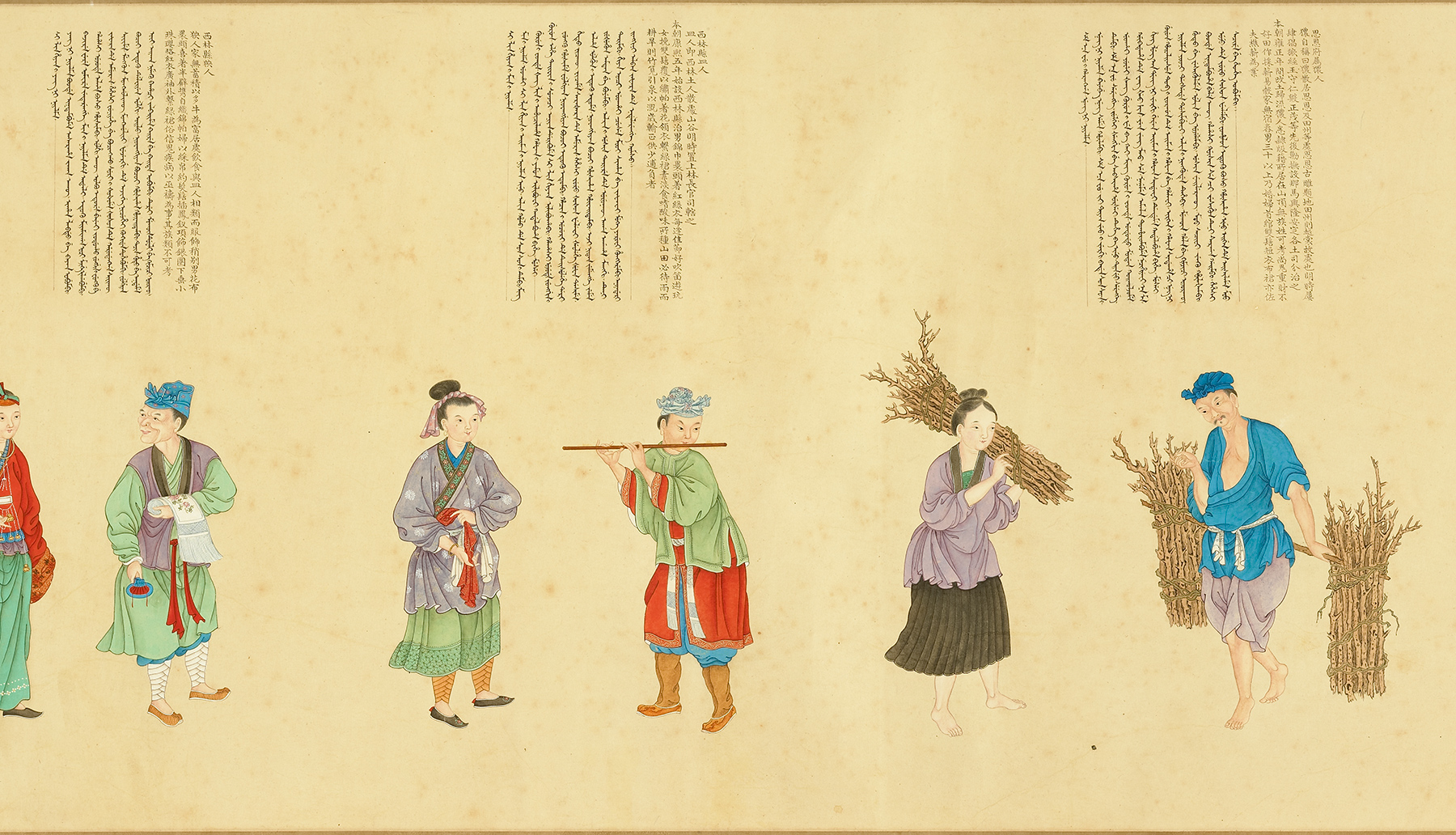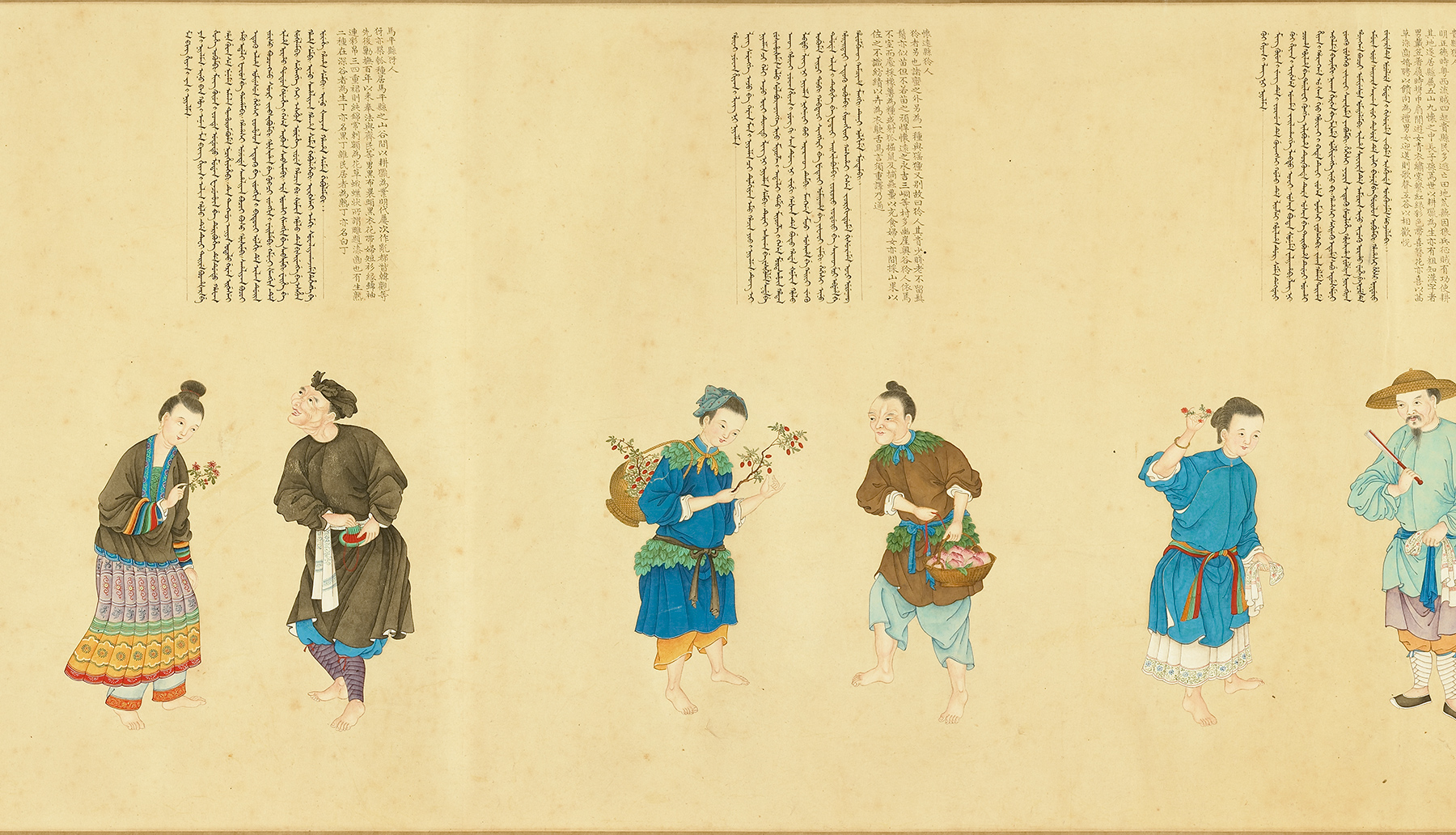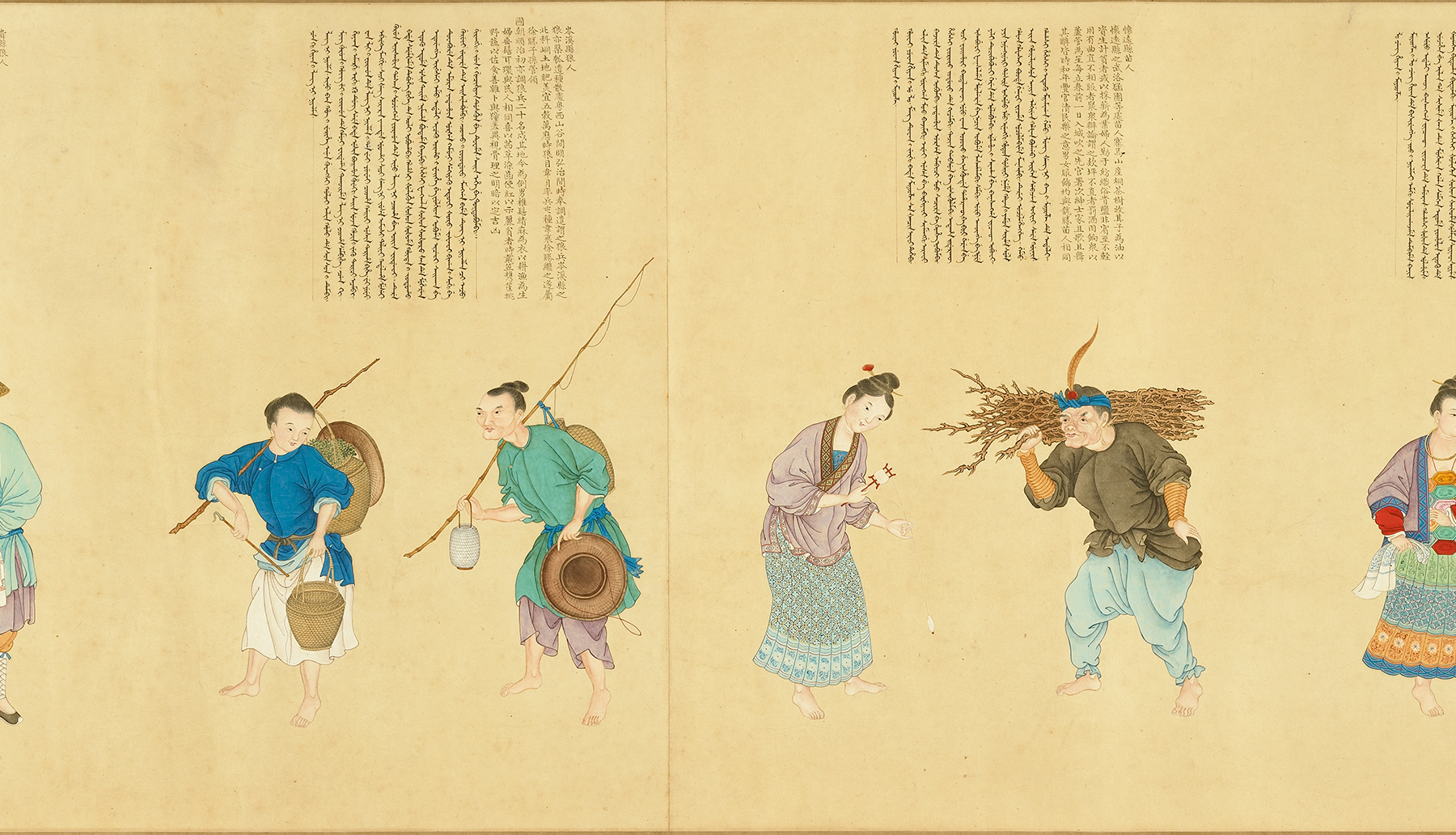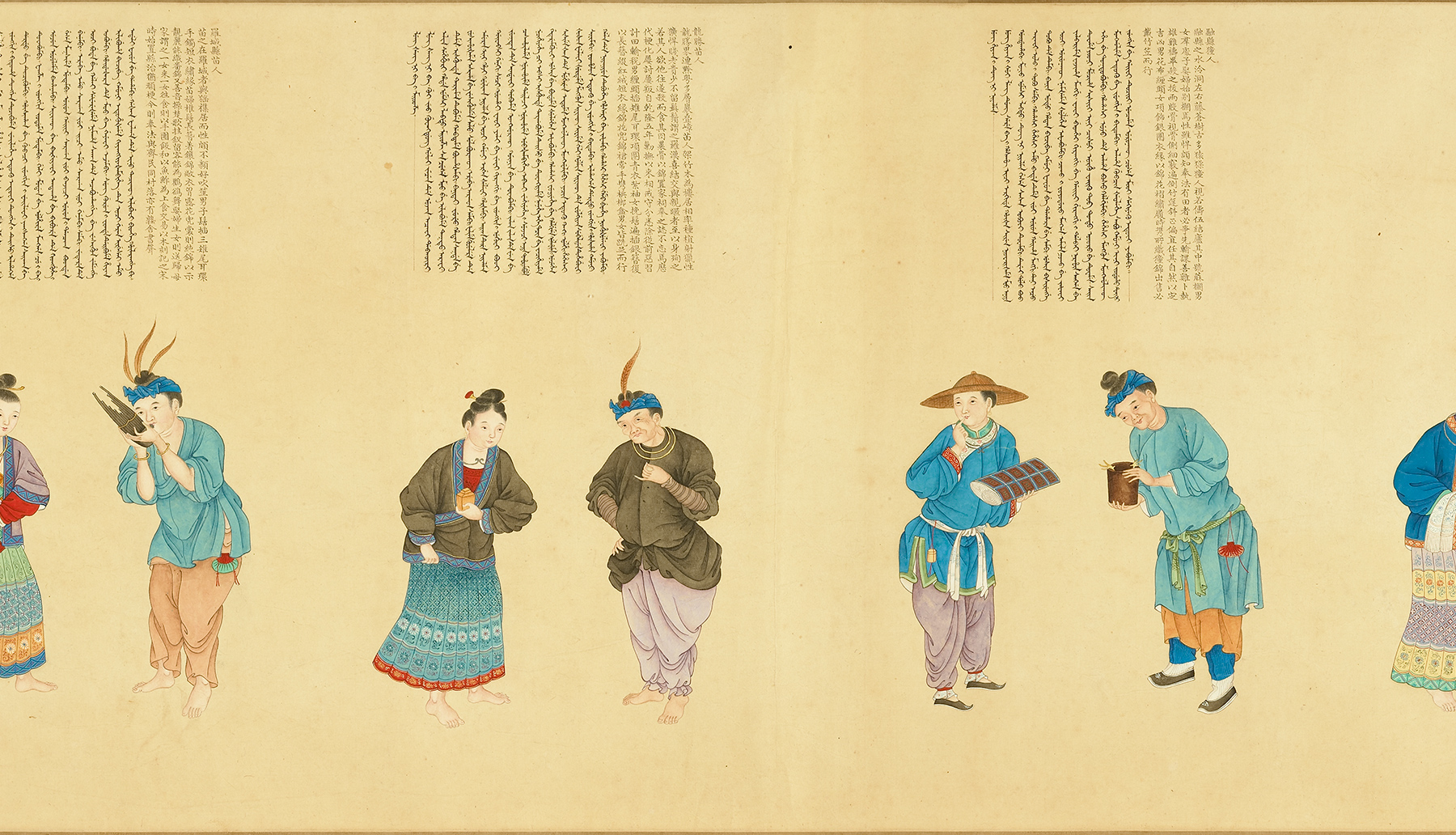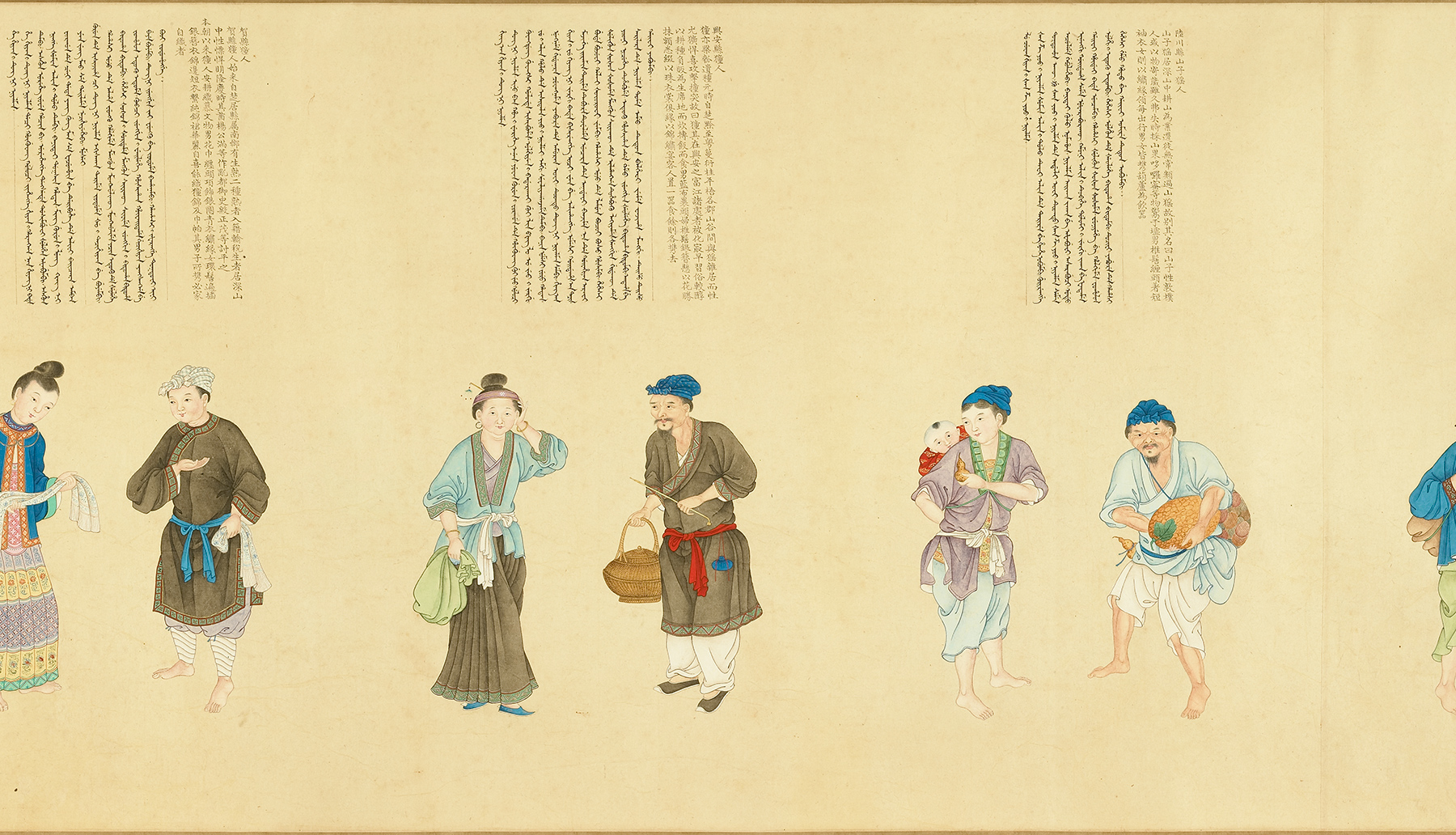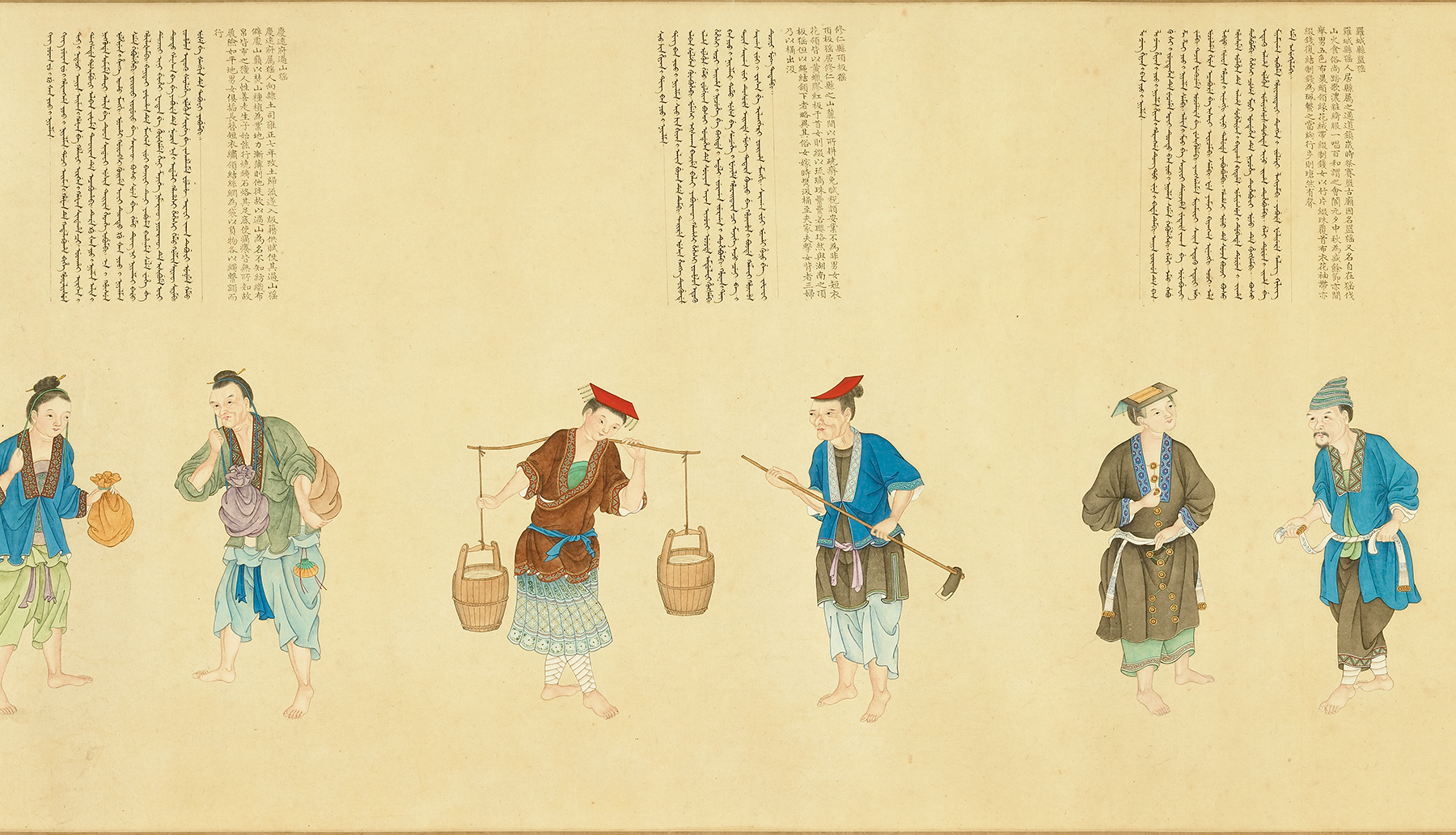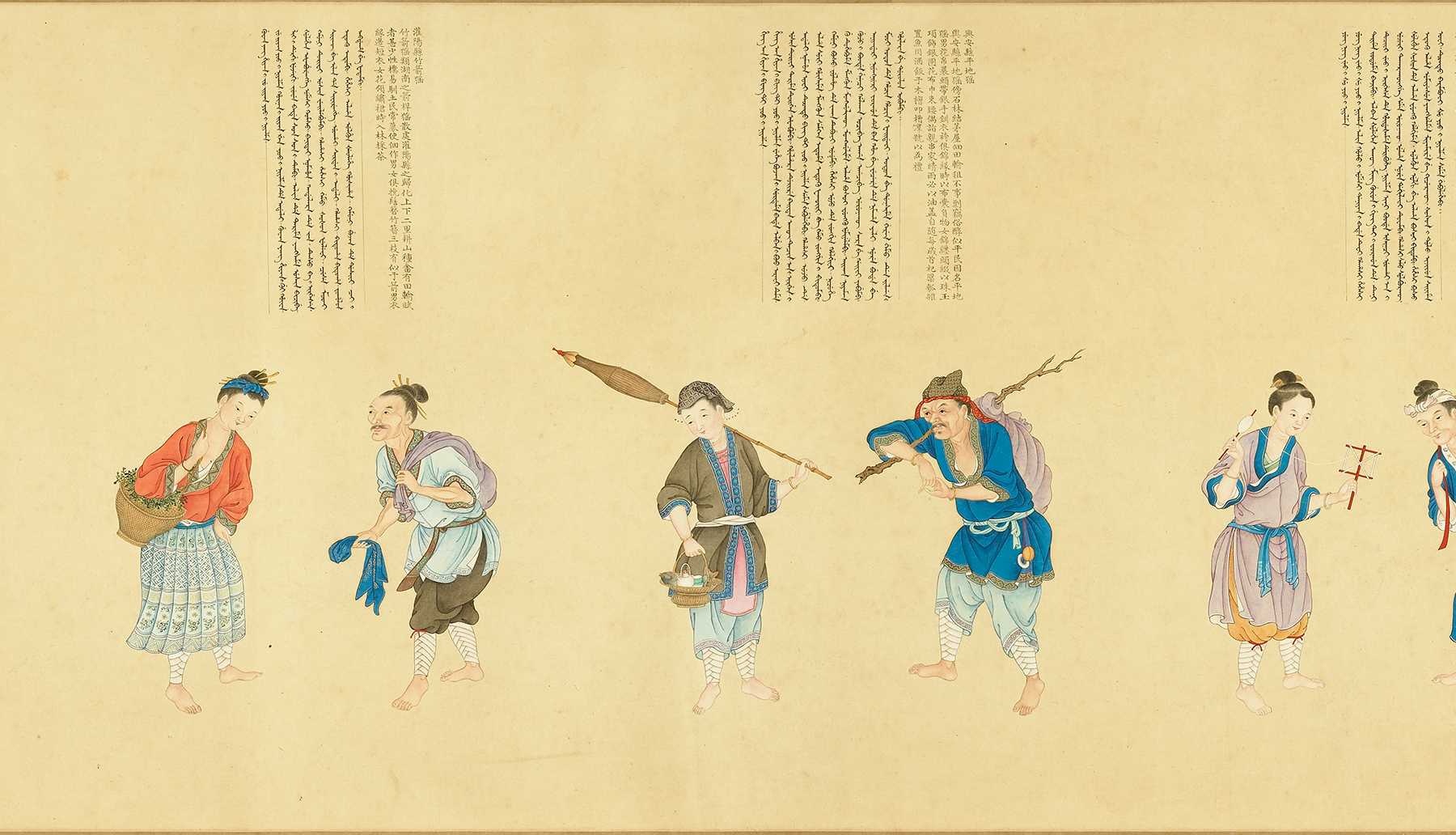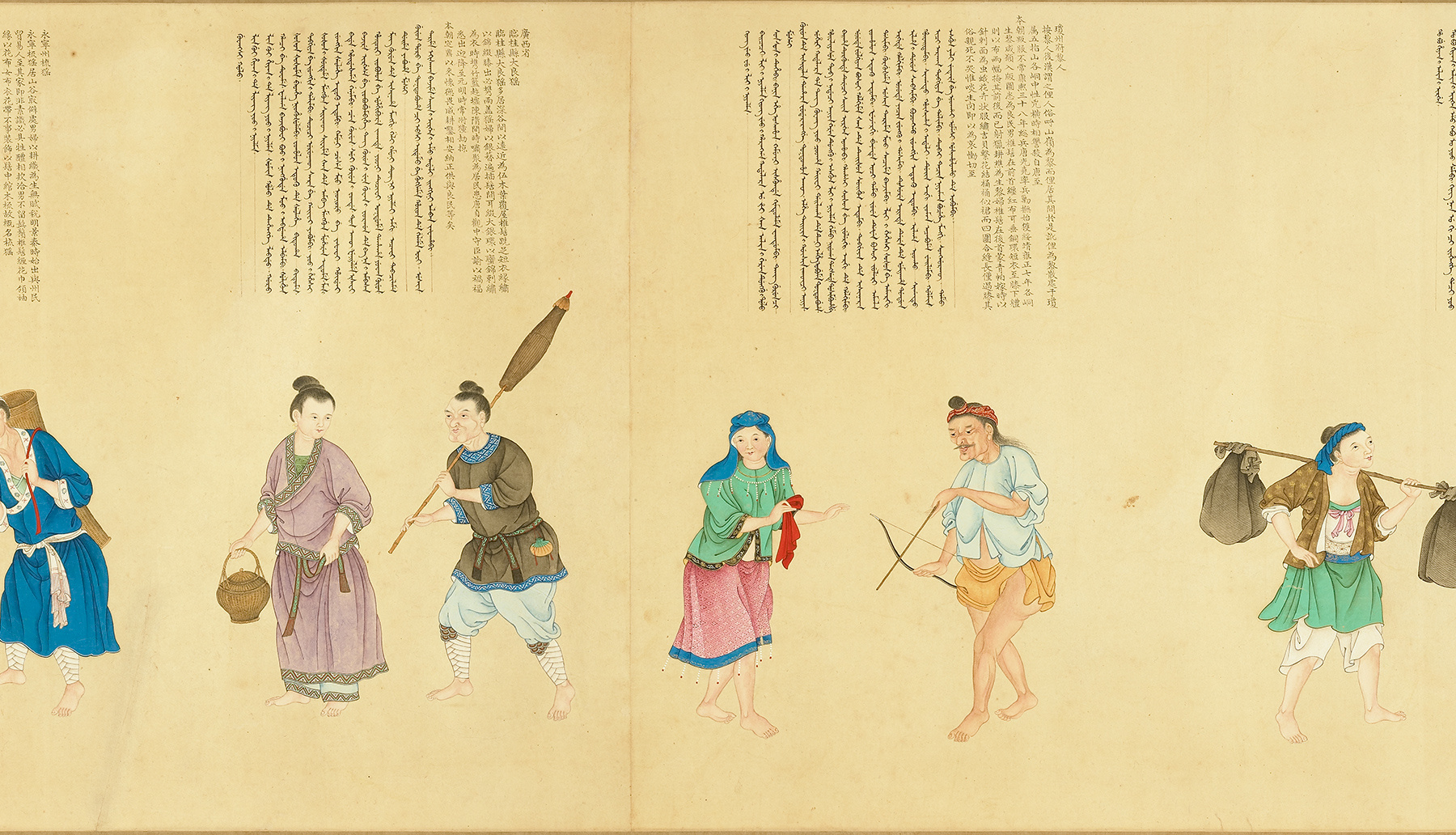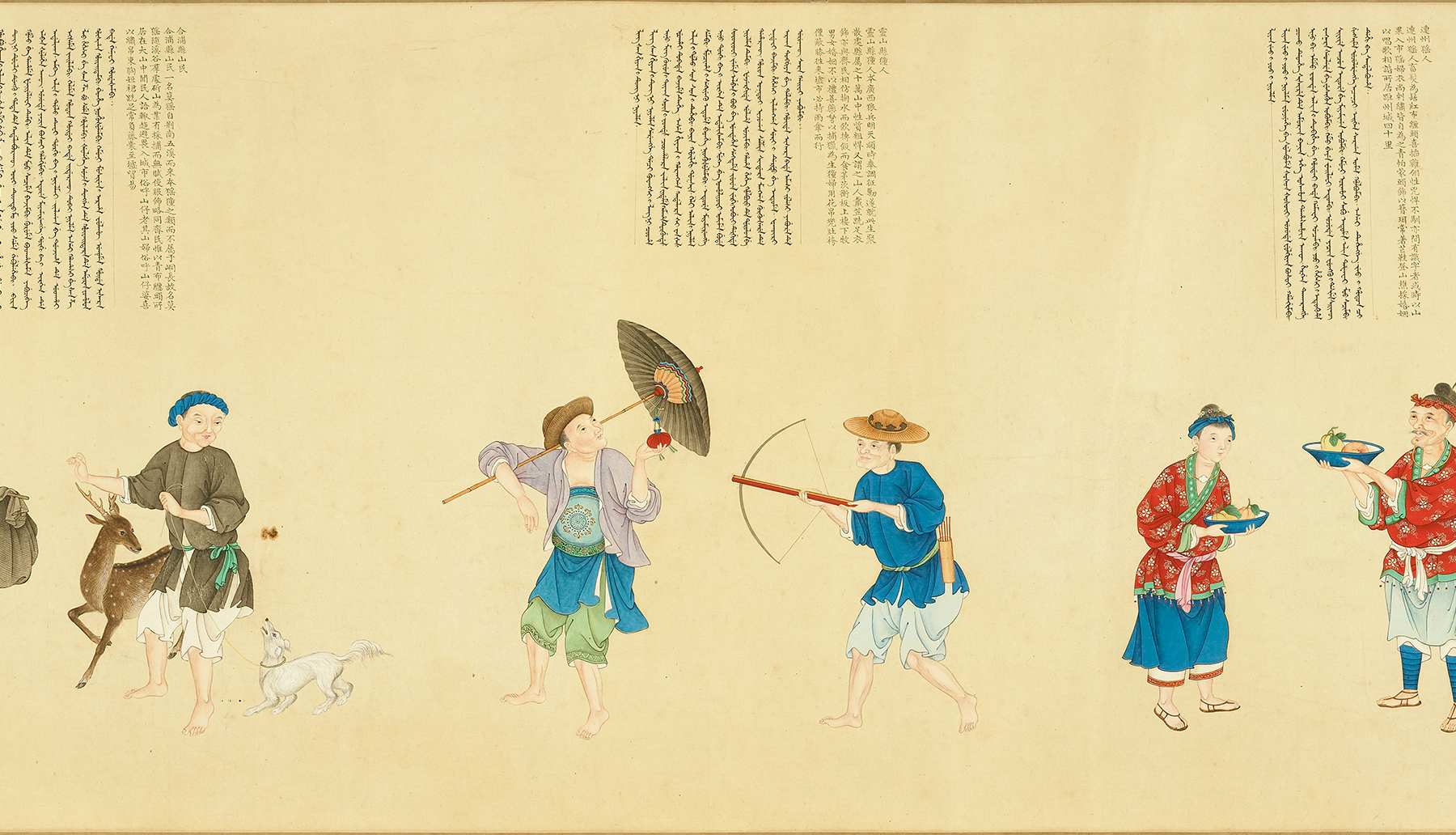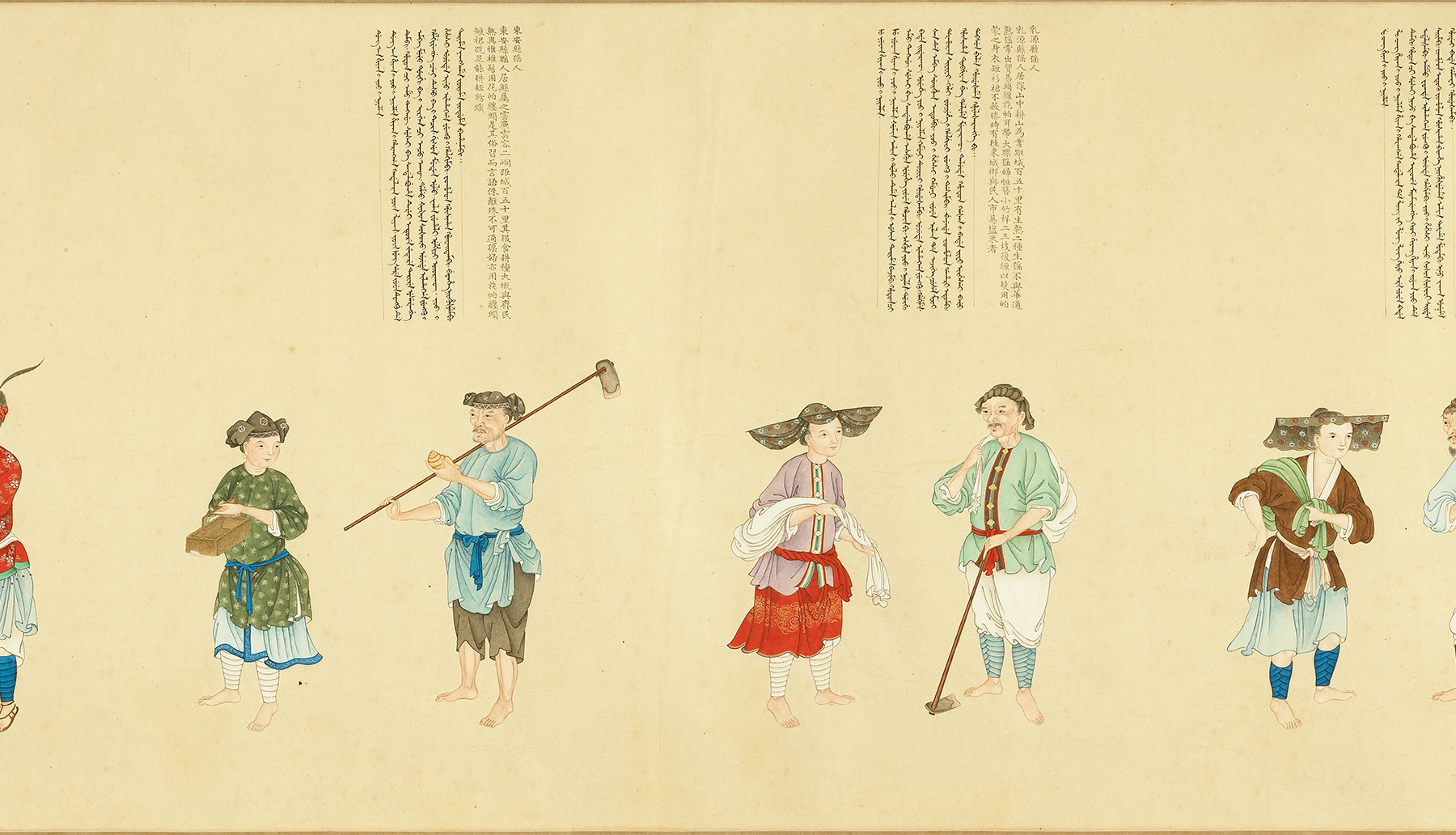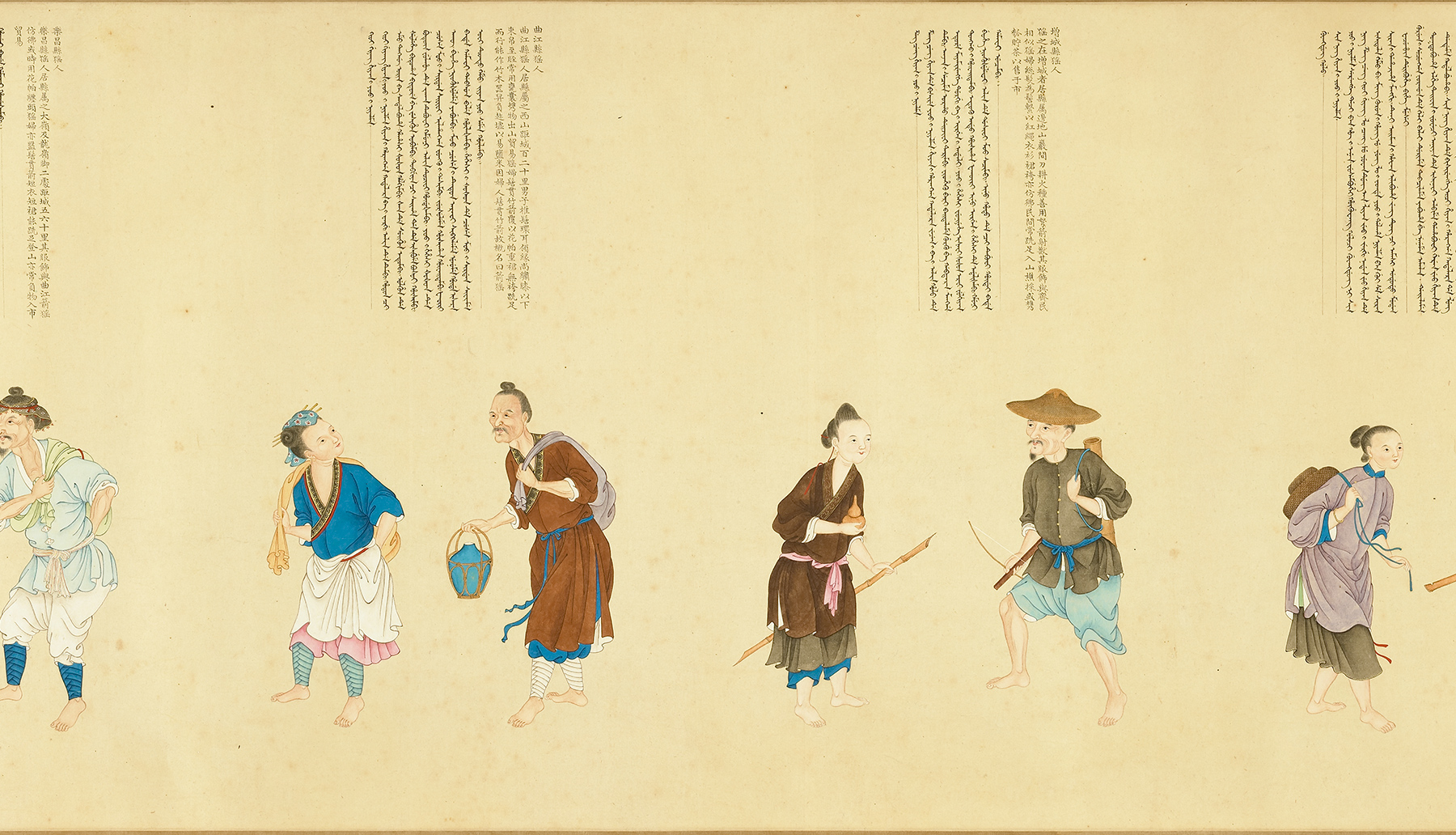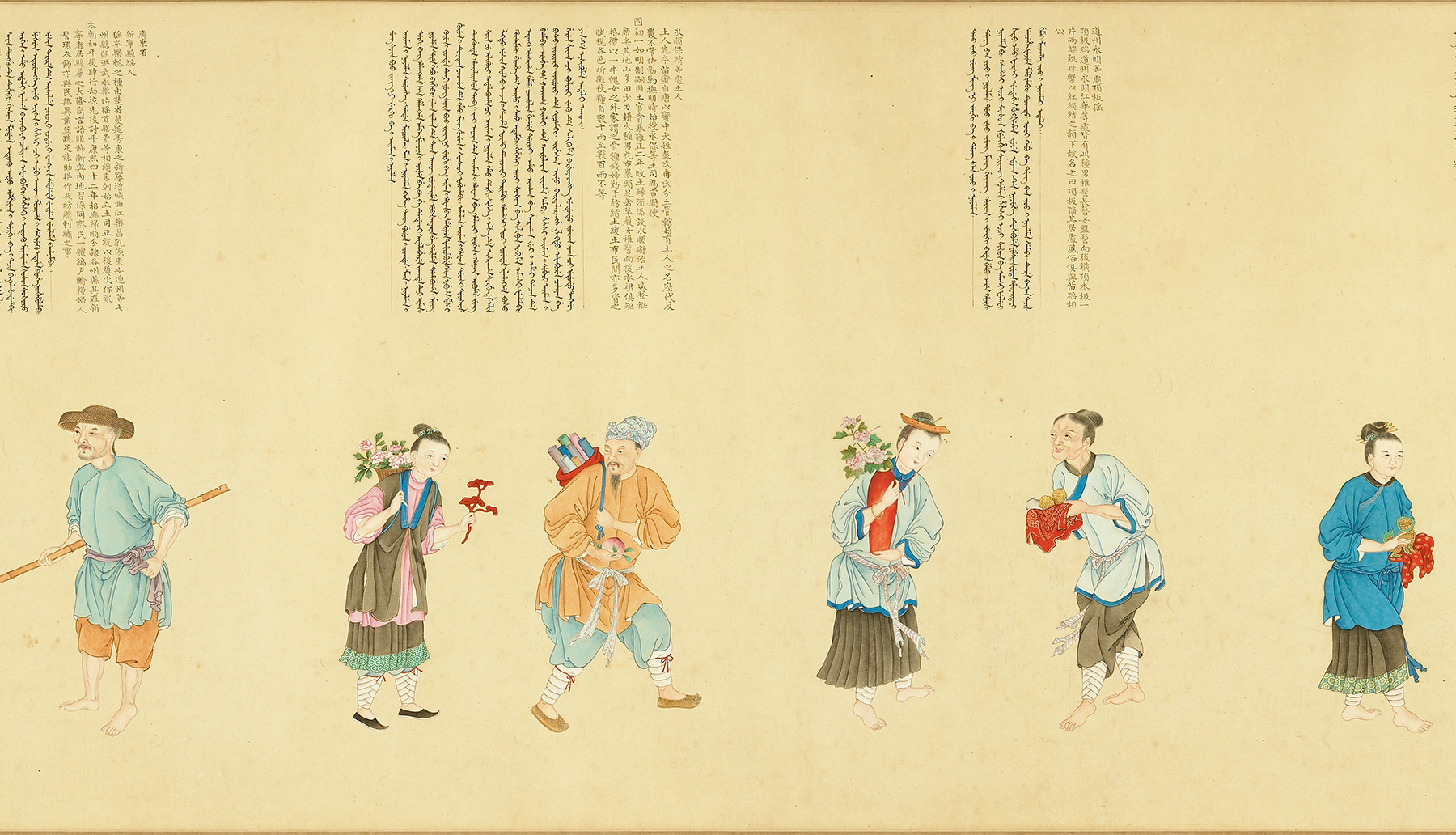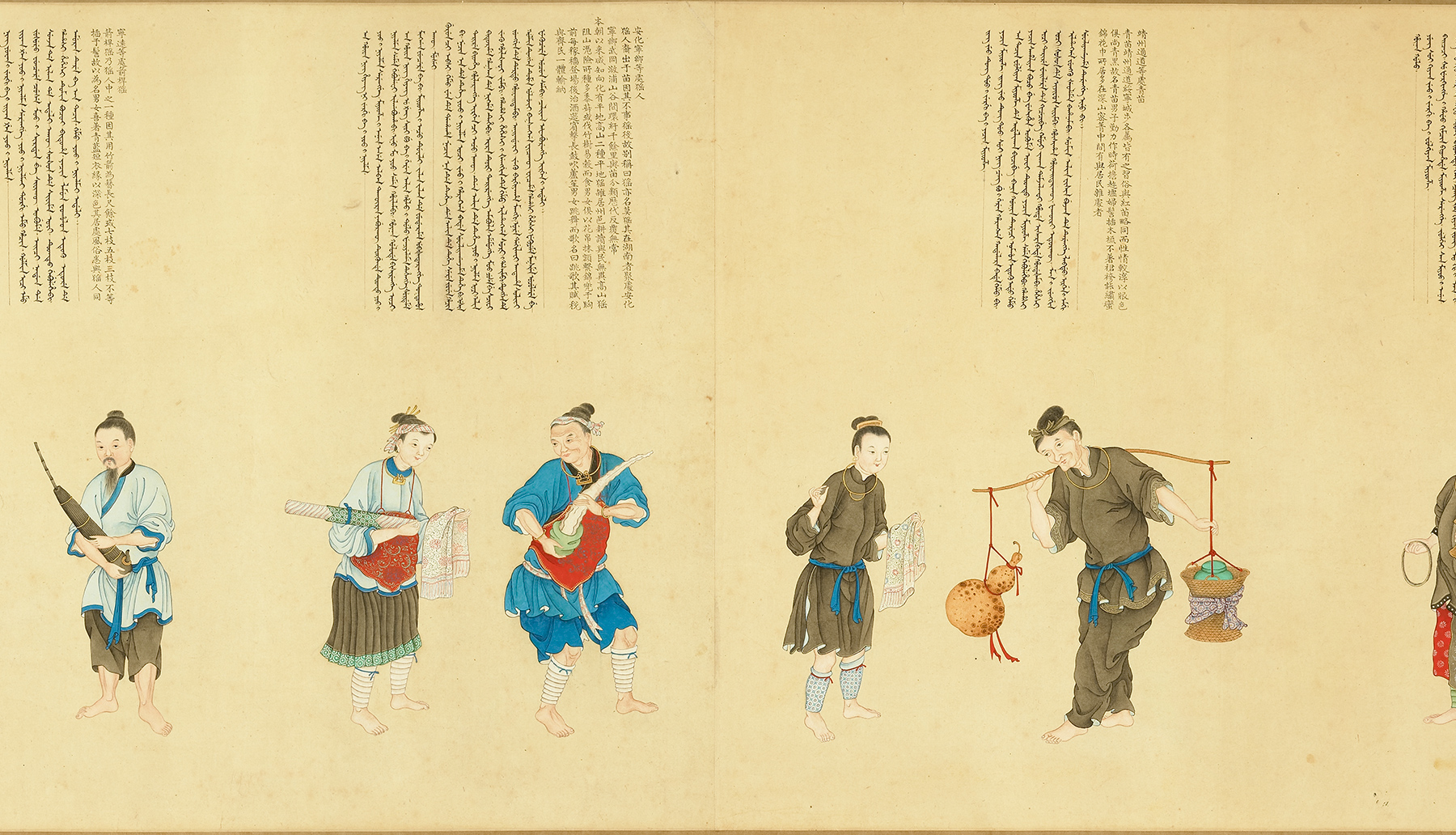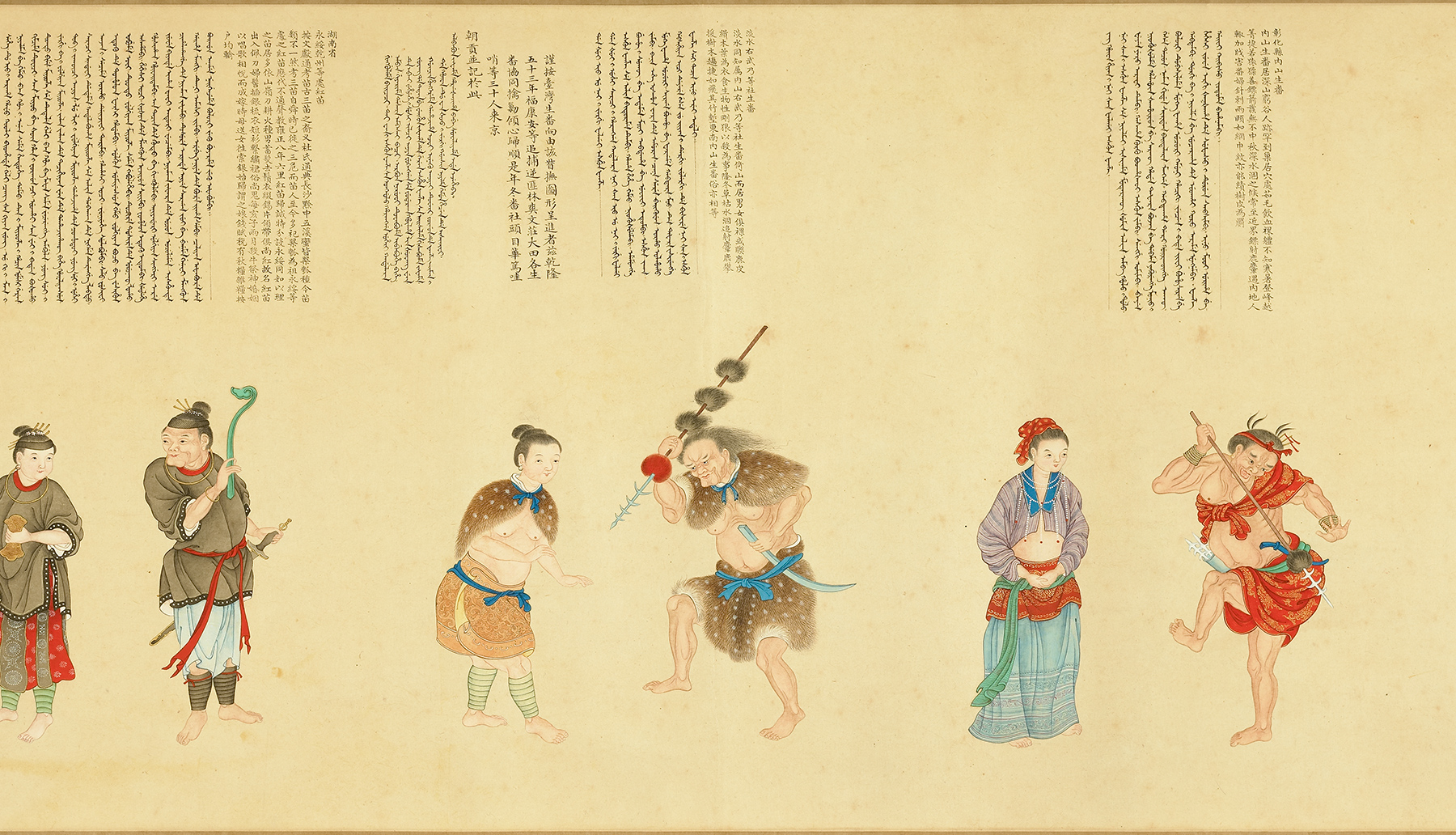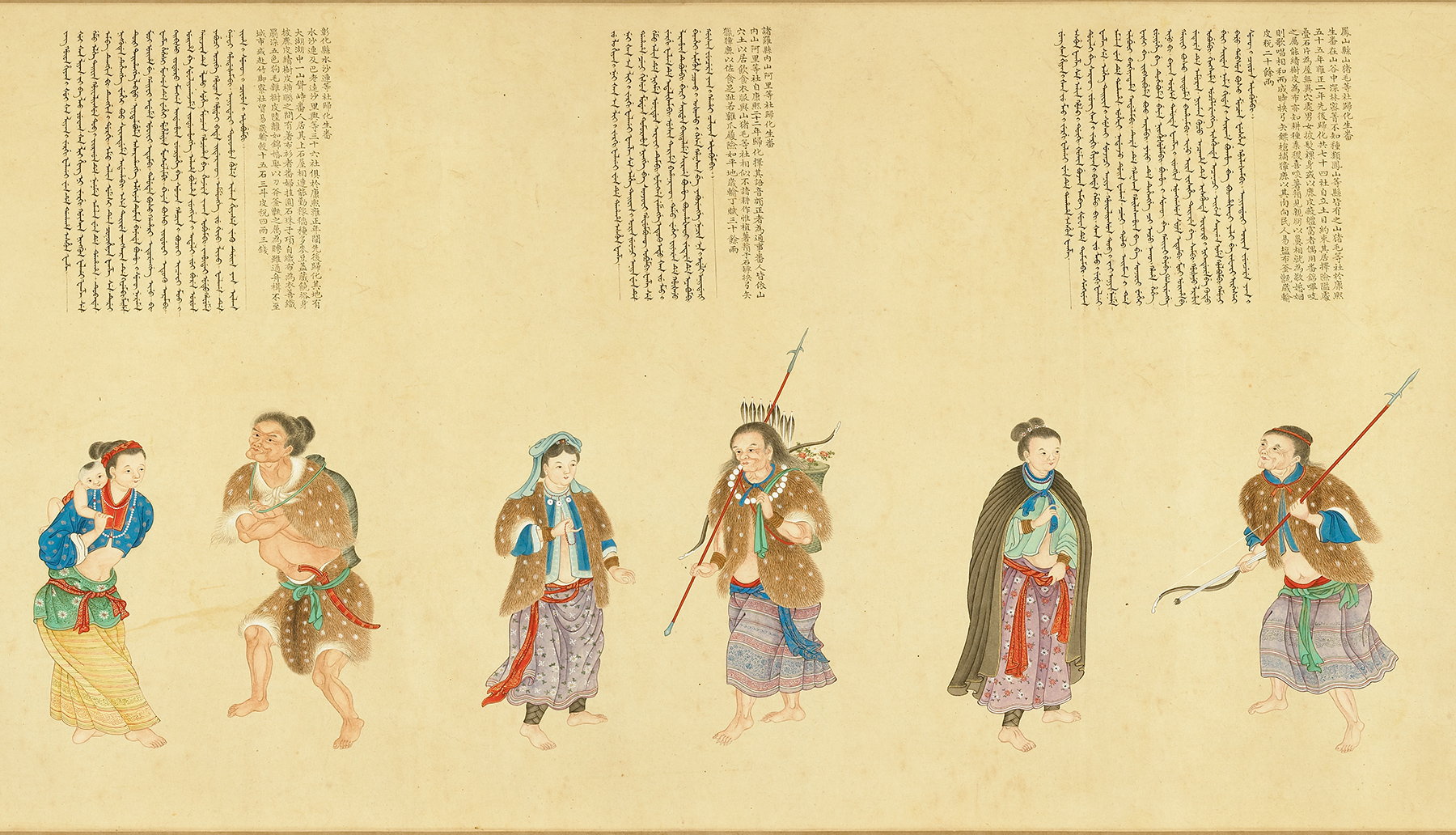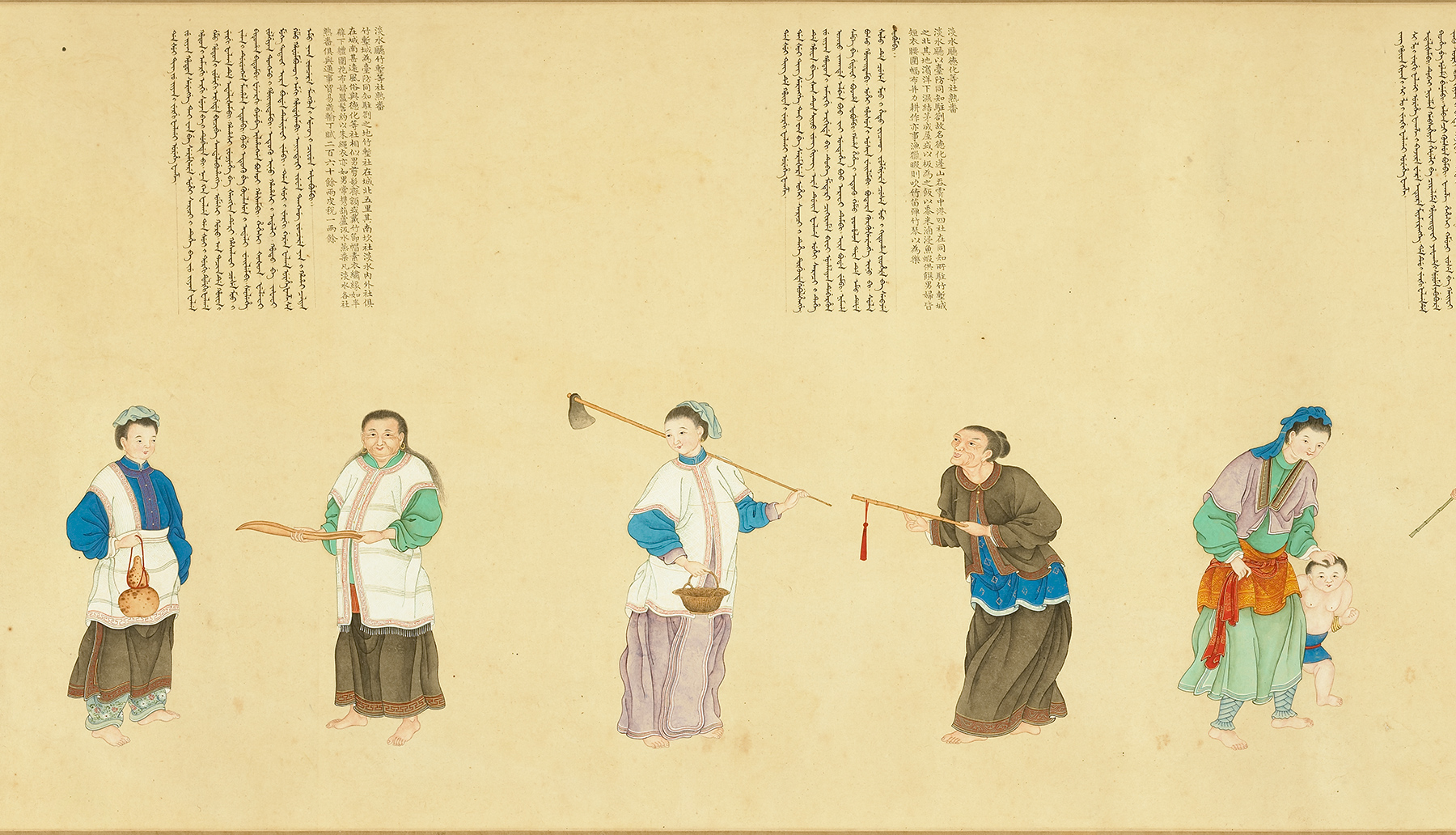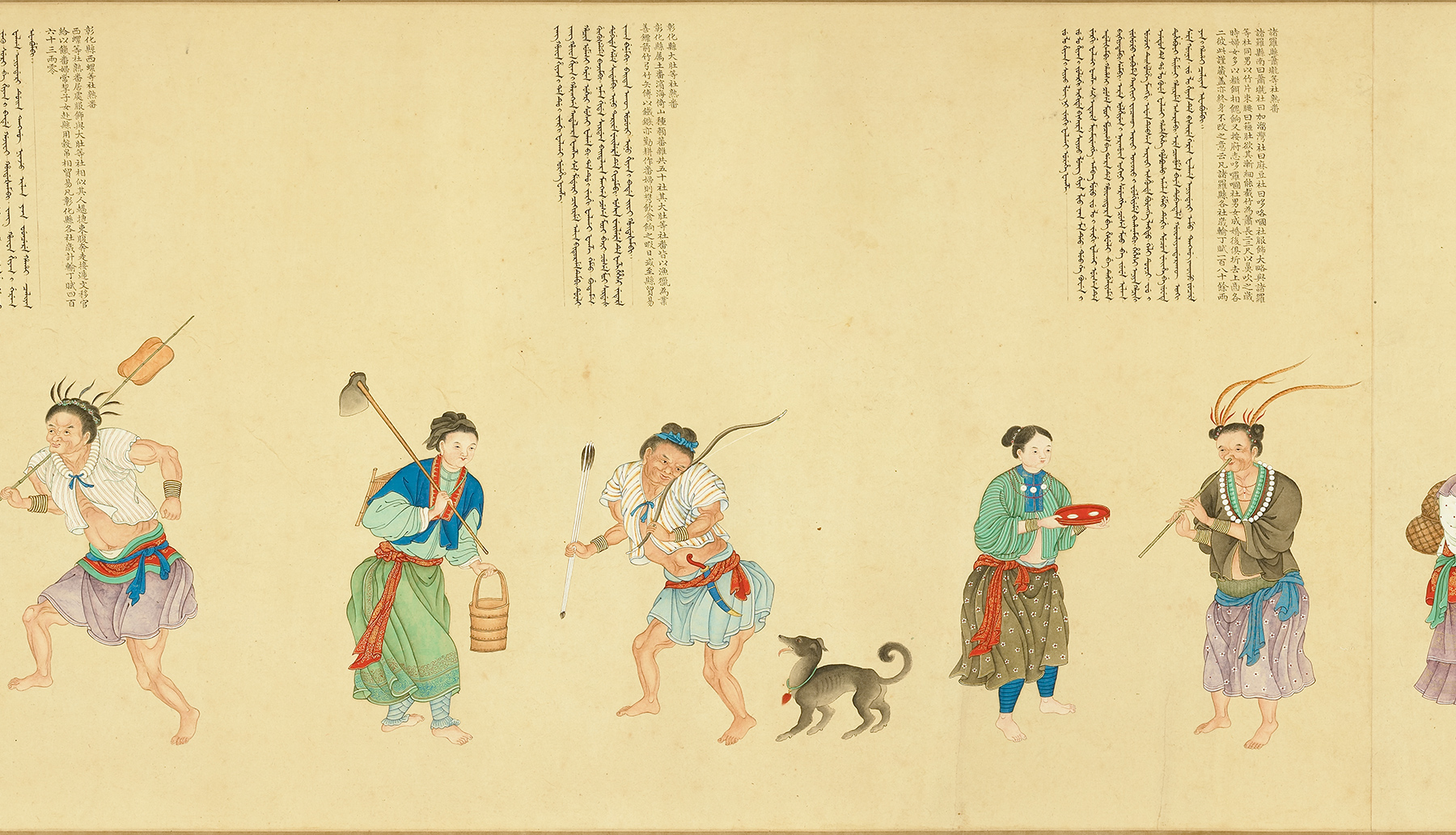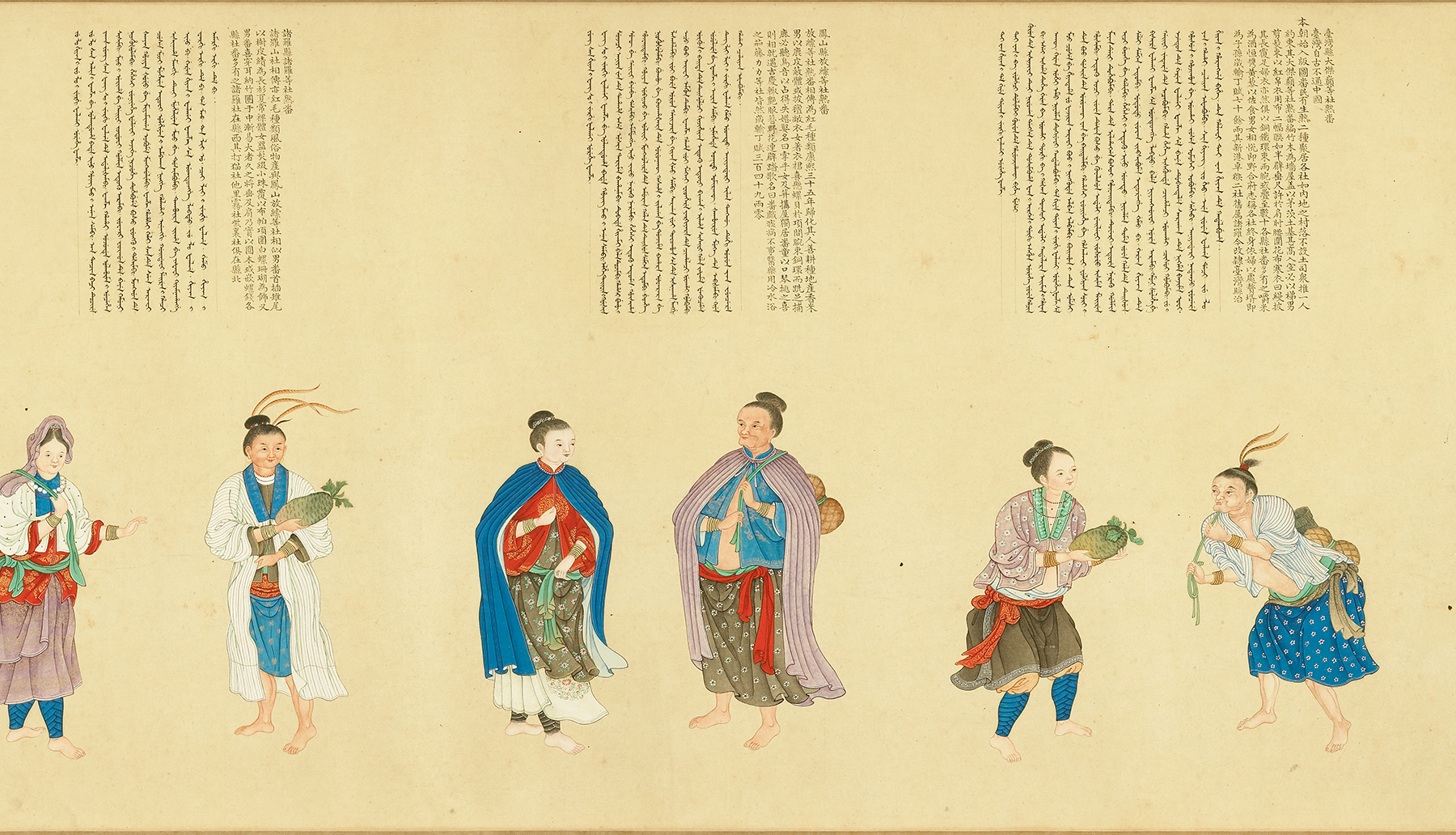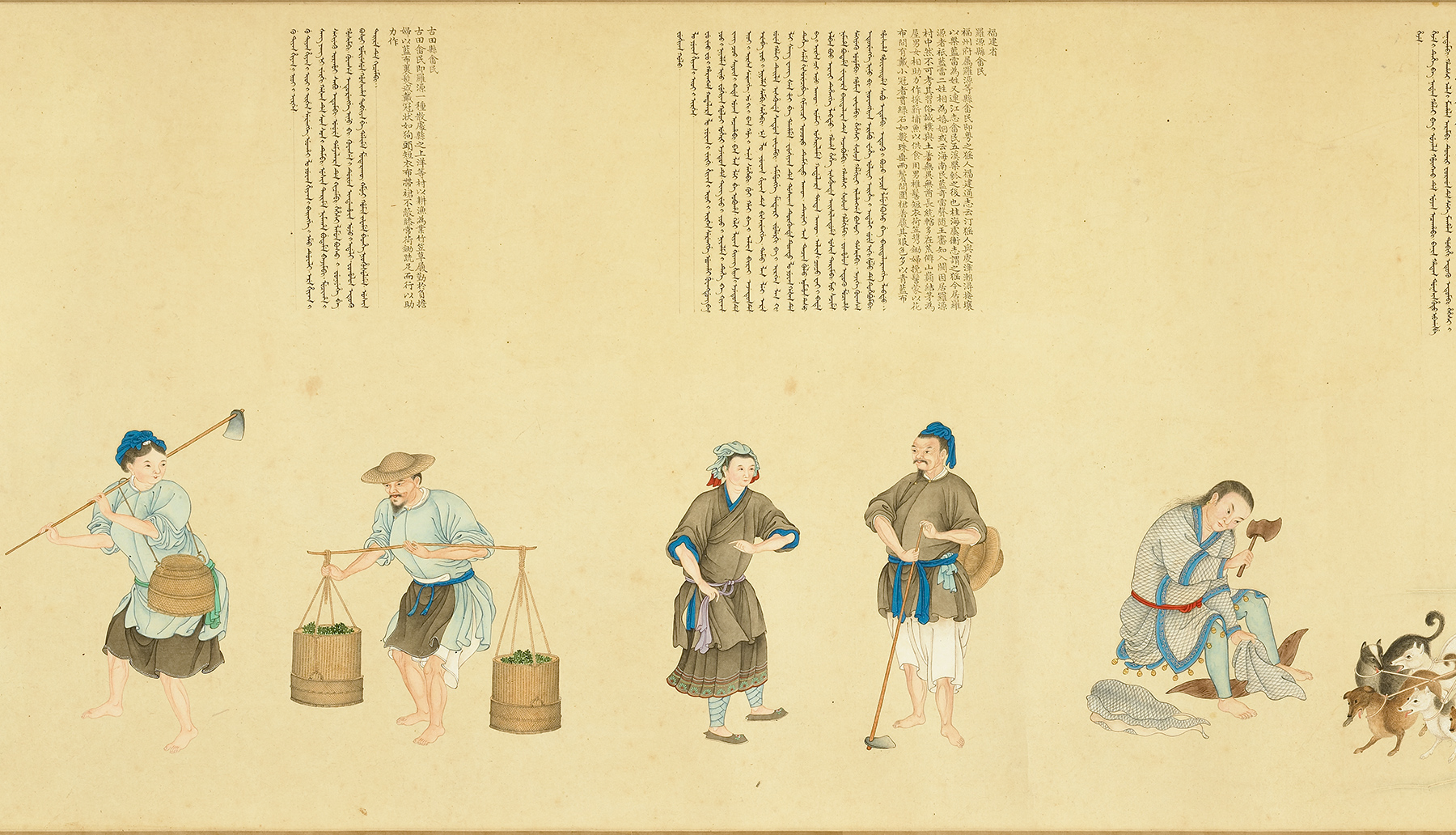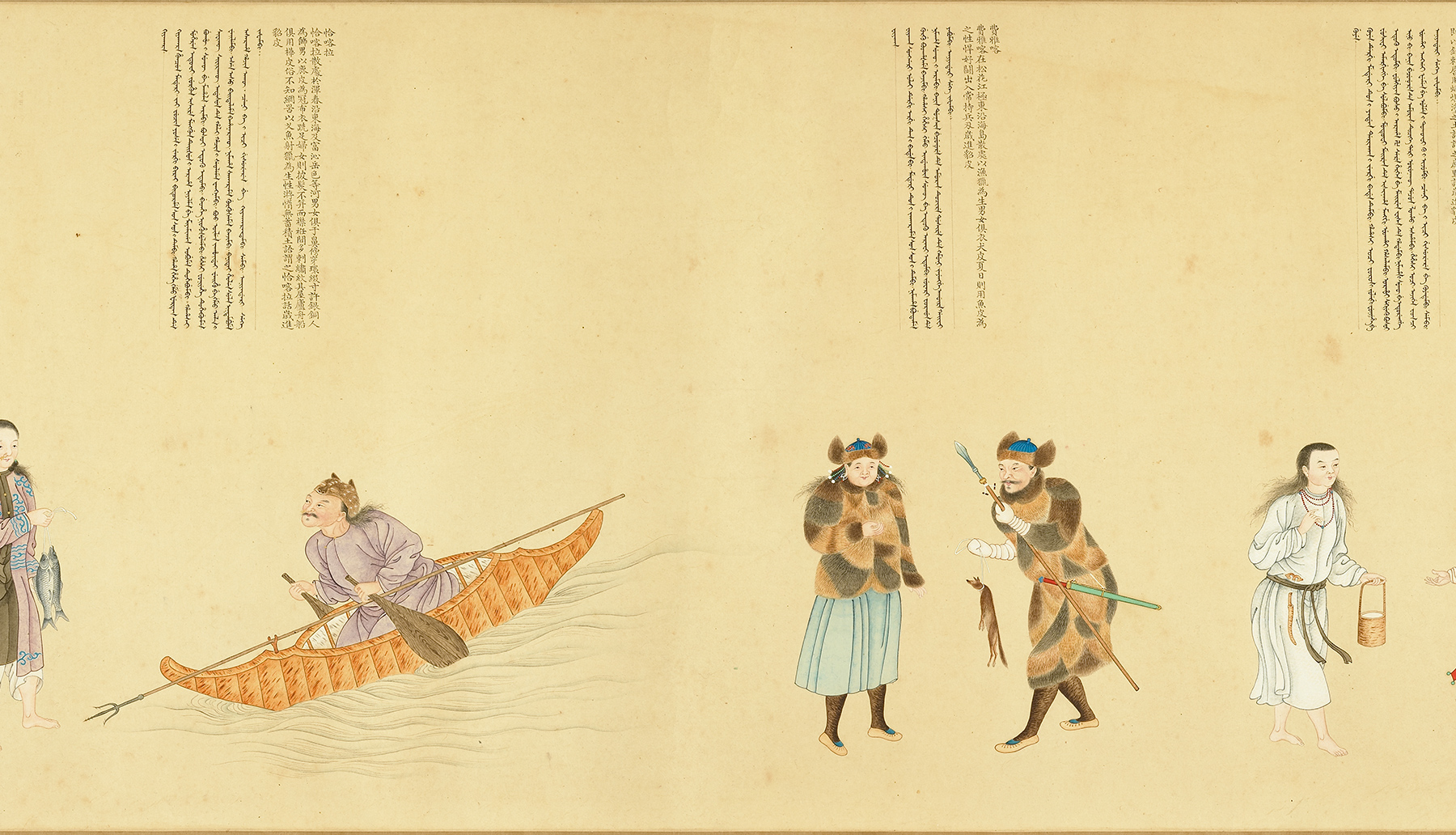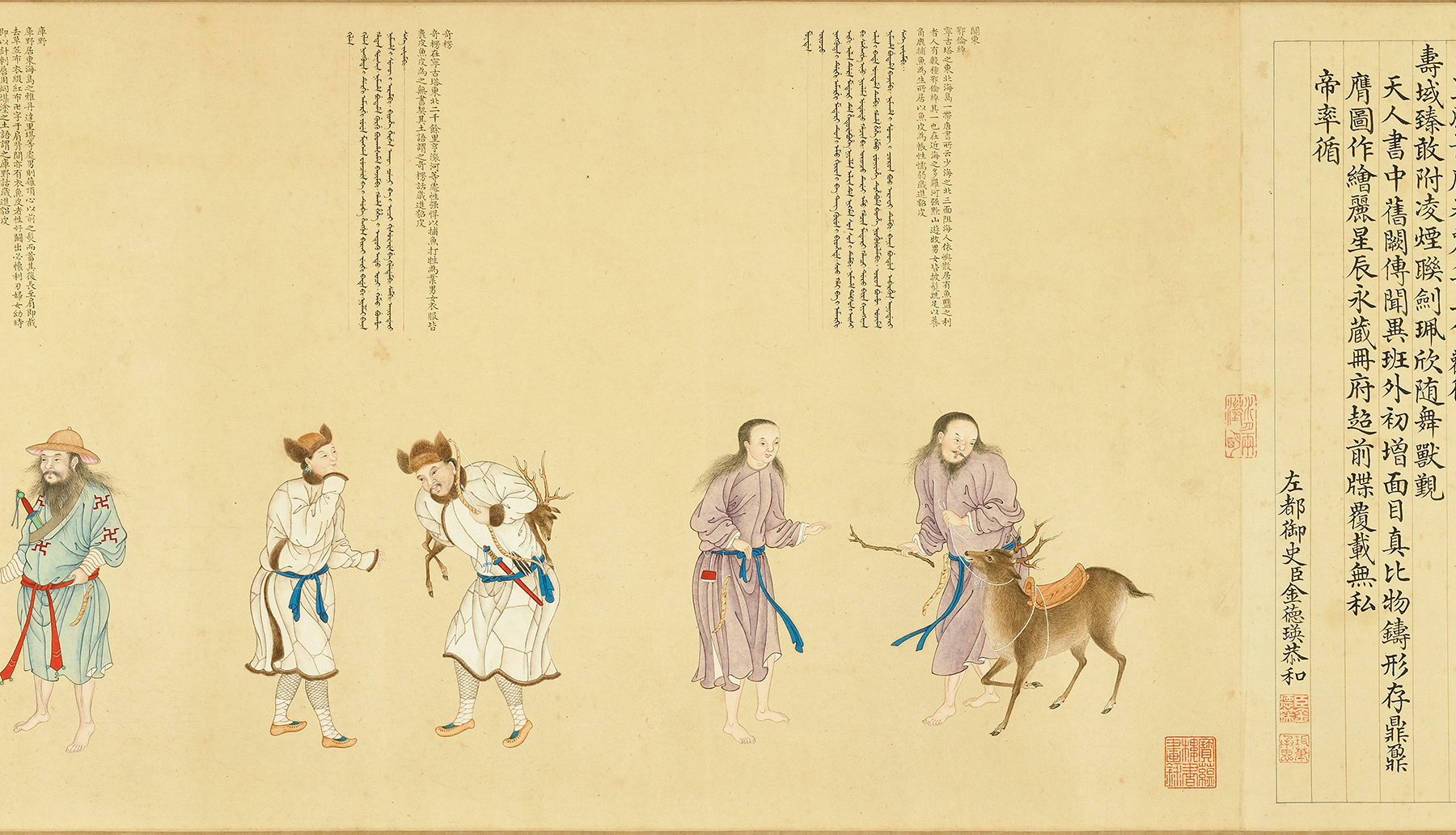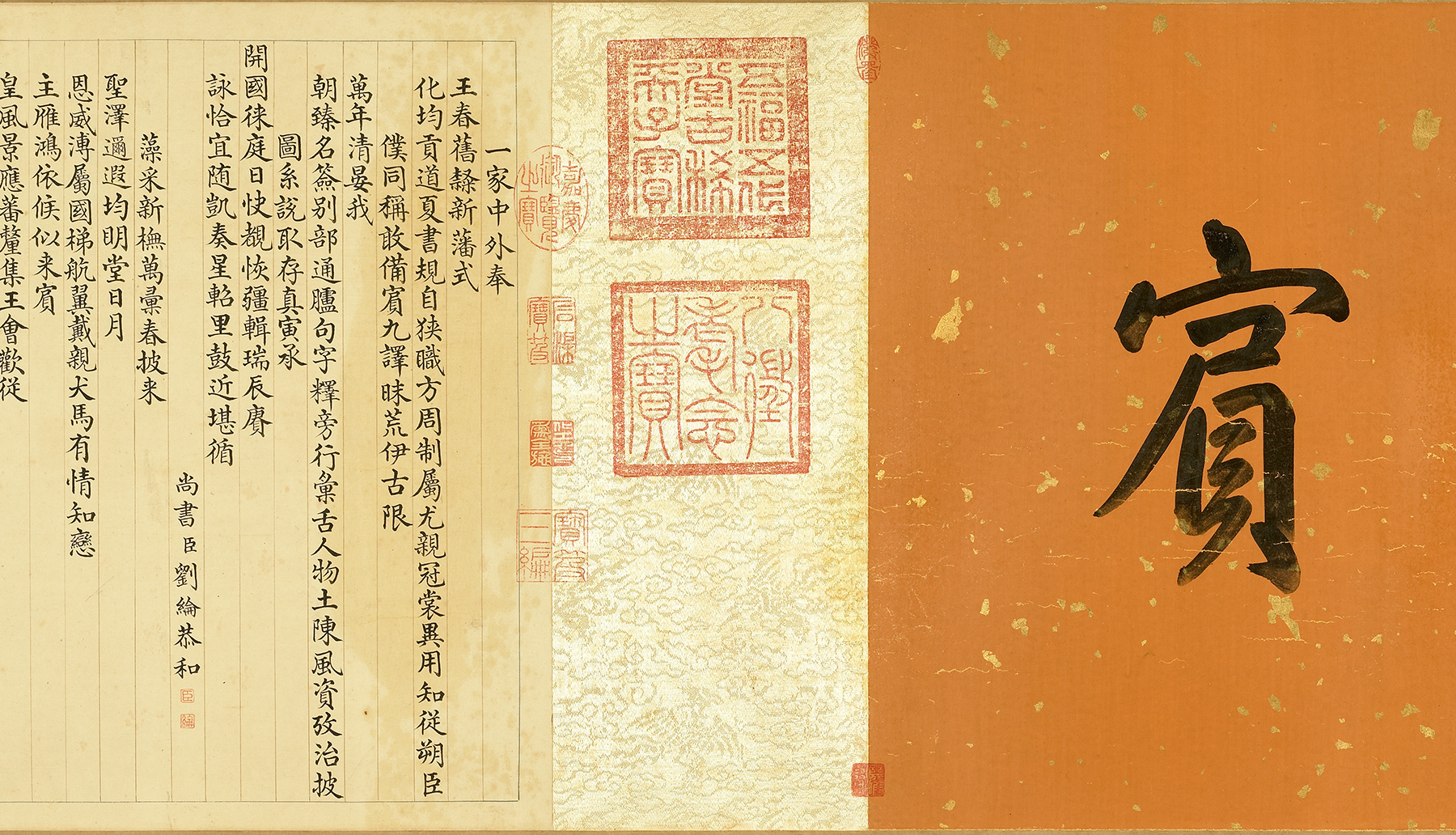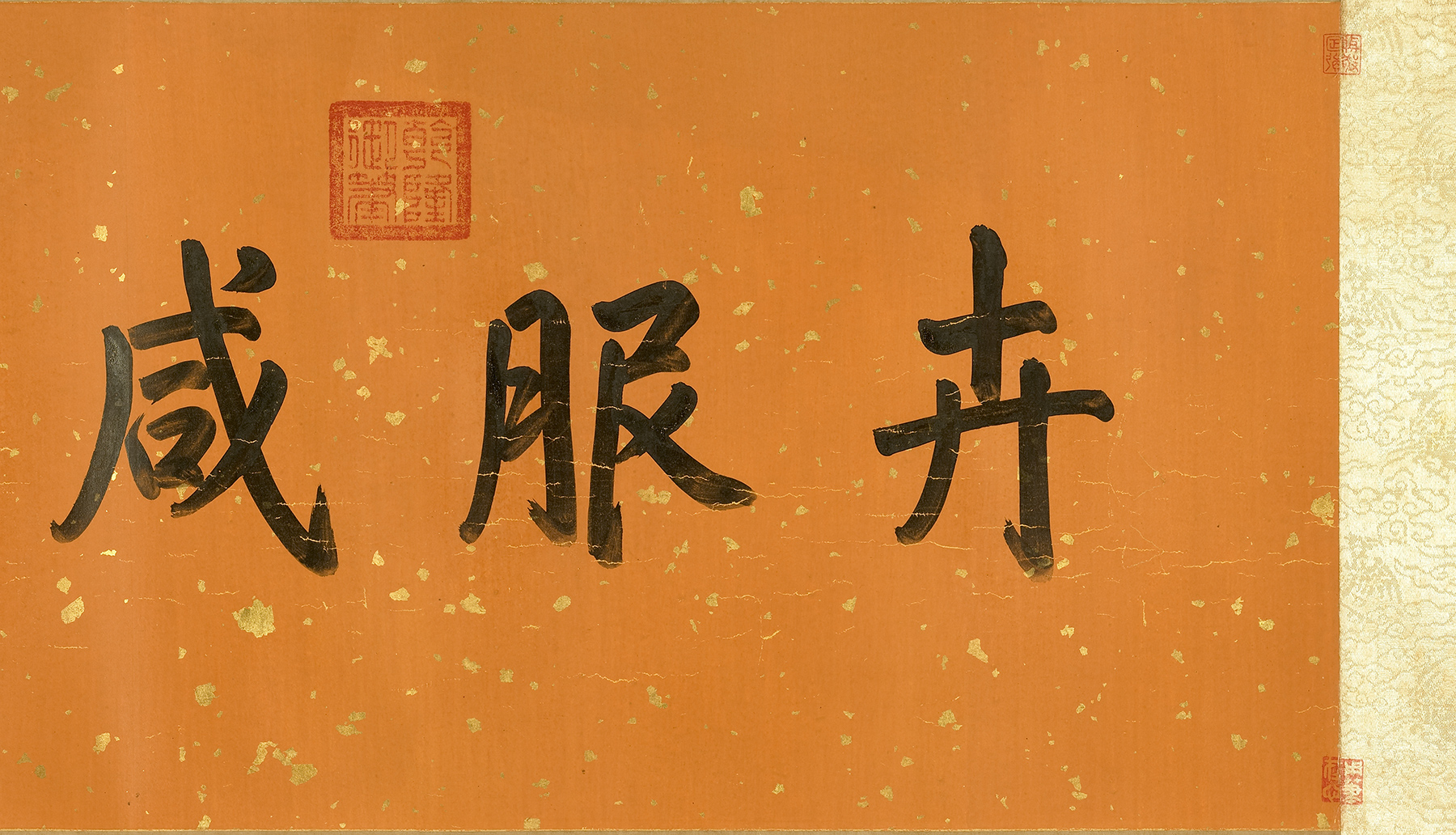Selections
-
Tribute Bearers
- Yan Liben (?-673), Tang dynasty
- Handscroll, ink and colors on silk, 61 x 191 cm
The figures in this Chinese painting have facial features that are obviously foreign, including pronounced foreheads and deep-set eyes. They are shown holding precious objects and proceeding from right to left. This painting probably depicts a tribute mission to the Tang dynasty court that took place in the fifth year of the Zhenguan reign (631). At that time, envoys are documented in historical sources as having come from the states of Poli (Brunei), Luocha ("Lochac"), and Linyi (in Vietnam) to present tribute at the court of the "Great Tang" empire. The forms of the figures are quite dramatic and exaggerated, making for a narrative style that is both "factual" and "imaginative."
This handscroll bears no signature or seals of the artist, but the title slip traditionally has attributed it to the Tang dynasty painter Yan Liben. In Xuanhe Painting Catalogue from the Song dynasty are numerous works listed under Yan's name, and many of them are related to international relations in the Tang dynasty. -
Envoy Bringing Tribute
- Zhou Fang (fl. 8th-early 9th c.), Tang dynasty
- Album leaf, ink and colors on silk, 46.4 x 39.5 cm
This painting depicts a figure from west of China bringing tribute to the imperial court as he leads on a rope a kind of antelope. The man has curly hair and a headband. He has deep-set eyes and a prominent nose as well as a curly beard. He also wears a "diexie" belt with leather strips at the waist with a dagger. The horns of this antelope are quite long and slightly curved like a sword. With grayish-white hair, it is quite similar to an Arabian oryx, which was native throughout most of the Middle East.
The "diexie" belt with leather strips was originally worn by nomadic peoples of the Eurasian continent. The version seen in this painting is corroborated by similar ones seen in excavated tombs of Turkic and Khitan peoples. The composition of a figure leading an animal in Chinese painting would later become a paradigm often seen in images of presenting tribute animals. -
Four Events of the Jingde Reign: Khitan Envoys Visit the Court
- Anonymous, Song dynasty (960-1279)
- Handscroll, ink and colors on silk, painting: 33.2 x 35.8 cm, calligraphy: 33.2 x 37.8 cm
The first section of the handscroll "Four Events of the Jingde Reign" depicts "Khitan Envoys Visit the Court," an occasion that began in 1004 when the Khitan emissary Han Ji representing the Liao dynasty came to the Song dynasty court to enter in negotiations that culminated with the Chanyuan Treaty. Seen in the illustration is the scene of Khitan envoys having an audience with Emperor Zhenzong (968-1022) in the following year.
The Khitan envoy group had an audience with Emperor Zhenzhong in the Chongde Palace. At the time, the group first went to the palace courtyard to exchange diplomatic credentials before ascending into the hall itself, the envoy representing the Khitan leader sending regards on his behalf to the Chinese emperor. In the painting are Northern Song court officials surrounding tribute gifts and a Khitan group off to the side. The arrangement demonstrates the heirarchical standing of the Song as the center of international relations, the compositional approach of the painting obviously designed to reflect this notion. -
From the Imperial Brush of Ming Taizu (I)&(II)
- Edict on Tribute from Siam and Envoys Arriving at the Capital, album leaf, ink on paper, leaf 1: 42.6 x 35.3 cm, leaf 2: 42.5 x 35.3 cm
- Edict on Ethnic Groups of the Southwest, album leaf, ink on paper, 42.6 x 36.4 cm, 42.5 x 36.4 cm
- Edict to the King of Champa, album leaf, ink on paper, 44 x 74.3 cm, 45.4 x 72.2 cm
- Edict to the King of Annam, album leaf, ink on paper, 42 x 71.7 cm, 45 x 72 cm
- Edict on the Matter of Annam, album leaf, ink on paper, 36 x 79 cm, leaf 1: 36 x 37.5 cm, leaf 2: 36.1 x 37.4 cm
- On the Envoys Departing, album leaf, ink on paper, leaf 1: 41.8 x 33.5 cm, leaf 2: 41.6 x 33.2 cm
- On the Matter of the Ministry of Rites Presenting Tribute, album leaf, ink on paper, leaf 1: 37 x 34 cm, leaf 2: 37.3 x 33.8 cm
Emperor Taizu (1328-1398), Ming dynasty
Manuscripts from the imperial brush of the first Ming dynasty emperor, Taizu (r. 1368-1398), have been preserved in both red and black ink. Done as internal documents, they were mostly written quickly in running and cursive scripts and then later transcribed into regular script for the sake of clarity and legibility. The two albums from which these works come deal entirely with matters pertaining to foreign relations and border affairs. Taken together, they show how Emperor Taizu very much desired to have foreign states acknowledge the legitimacy of his reign, especially in the early years after the Ming dynasty supplanted the Mongol Yuan dynasty. As a result, he ordered the Ministry of Rites to deal with and coordinate matters on foreign tribute submitted to his court. He also had envoys deliver imperial documents, demonstrating his understanding of diplomacy.
The works in the exhibition are being displayed in two rotations. In the first rotation are album leaves "On the Matter of the Ministry of Rites Presenting Tribute," "Edict to the King of Annam," and "Edict on the Matter of Annam." In the second are "Edict to the King of Champa," "Edict on Tribute from Siam and Envoys Arriving at the Capital," "On the Envoys Departing," and "Edict on Ethnic Groups of the Southwest." -
Kylin Painting with an Ode by Shen Du
- Anonymous, Ming dynasty (1368-1644)
- Hanging scroll, ink and colors on silk, 90.4 x 45 cm
A record in "Annals of Emperor Chengzu" from the History of the Ming states that in 1414 (the 14th year of Chengzu's Yongle reign) the state of Banggela (Bengala of modern Bangladesh and West Bengal of India) came to the Ming court and presented tribute in the form of an animal called a "kylin (qilin)." As it turns out, the term for this mythical beast was also used in the Ming dynasty to refer to a giraffe, a tribute item originally from Africa.
After Bengala became part of the Ming tributary system in 1408, it maintained close contact with the Chinese court. To commemorate the presentation of this auspicious beast from a distant land, Shen Du (1357-1434) of the Hanlin Academy composed and calligraphed "Eulogy on an Auspicious Kylin," which was illustrated by a court painter. Shen Du's text is transcribed at the top of this painting, and copies were presented to high officials as propaganda to extol the emperor's virtuous rule, as evidenced by the appearance of this auspicious animal. -
Official Tribute (I)
- Xie Sui (fl. 18th c.), Qing dynasty
- Handscroll, ink and colors on paper, 33.9 x 1462.2 cm
Starting in 1751, during the early reign of the Qianlong emperor in the Qing dynasty, the Grand Council at court was ordered by the emperor to coordinate matters relating to the production of four large-scale handscroll paintings by members of the central and local governments. This major project of the court was completed ten years later in 1761 and subsequently expanded to include ethnic peoples as well, the additions gradually made over time. Each illustration includes inscriptions in Manchu and Chinese, the contents dealing with issues related to external relations and border rule in the Qing dynasty. The project thus reflects the Qianlong emperor's policies regarding diplomacy, trade, and ethnic peoples.
Xie Sui's birth and death dates are unknown, but he served as a court painter during the Qianlong reign (1735-1796). The first handscroll in this series features seventy illustrations of figures and items from Western and non-sinicized regions as well as vassal peoples. -
Official Tribute (II)
- Xie Sui (fl. 18th c.), Qing dynasty
- Handscroll, ink and colors on paper, 33.8 x 1402.2 cm
Starting in 1751, during the early Qianlong reign in the Qing dynasty, the emperor ordered the Grand Council to coordinate matters relating to the production of four large-scale handscroll paintings by members of the central and local governments. This major project of the court was completed ten years later in 1761 and subsequently expanded to include ethnic peoples as well, the additions gradually made over time. Each illustration includes inscriptions in Manchu and Chinese, the contents dealing with issues related to external relations and border rule in the Qing dynasty. The project thus reflects the Qianlong emperor's policies regarding diplomacy, trade, and ethnic peoples.
The second handscroll in the series includes 61 illustrations of ethnic peoples from China's northeast, Fujian, Taiwan, Hunan, Guangxi, and Guangdong. -
Tribute Elephant
- Anonymous
- Hanging scroll, ink and colors on silk, 123 x 51 cm
In this painting is a foreigner with a prominent nose and dark skin leading an elephant with his hands held together. The massive animal has on its back a beautifully enameled container. The container is filled with precious and semi-precious materials, such as gold and silver, coral, pearls, and agate. And standing in the middle is a pagoda, inside of which is the image of a Maitreya Buddha figure with pearl beads.
In the East Asian tribute system, many countries followed Buddhism, hence accounting for the Buddhist overtones of their tribute to the Chinese court. Apart from its economic advantages, religion also was an important factor influencing diplomatic relations.
